| |
|
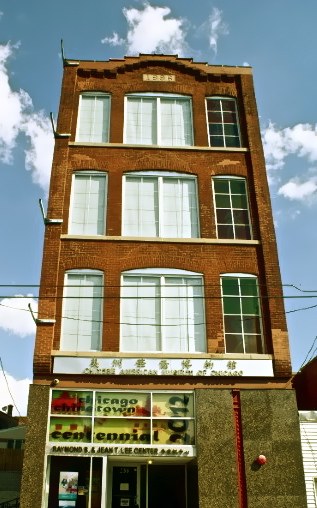 |

The Chinese American Museum, is the
only museum,
dedicated to the cultural heritage of Chinese Americans in the Midwest |
| Chicago's Chinatown is a busy, 30-block
commercial area, centered on and around Wentworth Avenue and Cermak Road
in the South Side Armour Square neighborhood. Home to more than 10,000
residents and about 400 businesses and local institutions, Chinatown is
considered one of the country's largest and most vibrant ethnic
communities. Aside from being a community hub and business center,
Chinatown has become a popular tourist destination. |
|
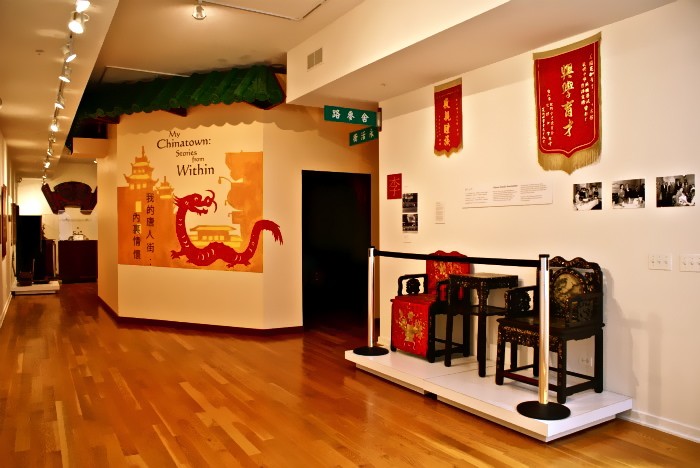 |
Chinese-American
Museum of Chicago
238 West 23rd Street
Chicago, IL, 60616
(312) 949-1000
http://www.ccamuseum.org
office@ccamuseum.org
The Museum is Now Open to the Public
Opening Hours:
Tuesday to Friday: 9:30 a.m. - 1:30 p.m.
Saturday & Sunday: 10.00 a.m. – 5.00 p.m.
The mission of the Chinese-American Museum of Chicago is
to promote the culture and history––through exhibitions, education, and
research––of Chinese-Americans in the Midwest |
|
A small movie theater combines a
video with lighting effects on various objects in the exhibit, such as
clothes and herbs |
Wednesday - January 23rd, 2013 |
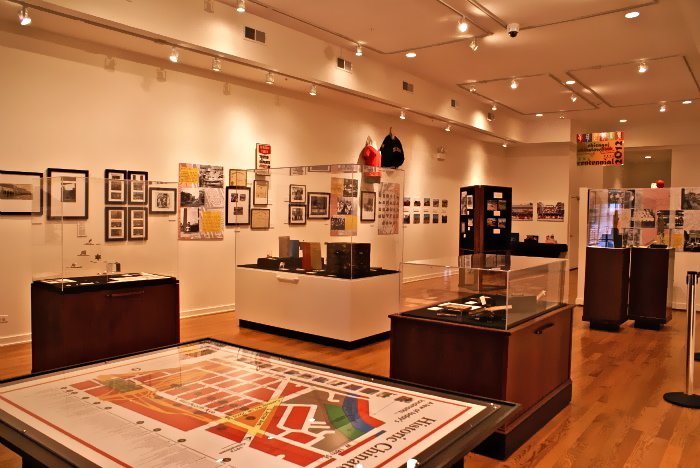 |
Green Dragon Society
Field Trip
Teachers & Students Attended
The Museum Building, formerly the Quong Yick Co., is located in
Chicago's Chinatown. The Museum opened to the public on May 21, 2005.
After a devastating fire in September of 2008, the Museum was closed for
renovation and reopened in 2010.
The Permanent Exhibition begins with immigration in the 1800s, then to
Chicago's Chinatown history, to the start of the twenty first century.
Special Exhibitions change throughout the year to enlighten and enhance
the rich tradition of culture and history that fill the two floor
gallery space. |
The friendly Chinese volunteers at the museum will take you on a
grand tour of Chinese/American history in the Midwest.
The Green Dragon Society event lasted two and a half hours. Our guide,
an author of books, was impressively knowledgeable.
Questions are welcomed and will bring out the ethnological details from these
enthusiastic, well prepared museum staff.
The antique objets d'art at the Chinese American Museum of Chicago
are cycled from donors and are therefore regularly changing.
The collection is from Chinese families own personal objects, photos,
artwork, etc., over many generations.
The consensus of the Green Dragon students attending was that the
experience was much better than they had anticipated.
This museum is a magnet and fountain for the Chinese culture. If you
visit be prepared to leave a donation of at least five dollars or more.
There is a gift and book shop. |
|
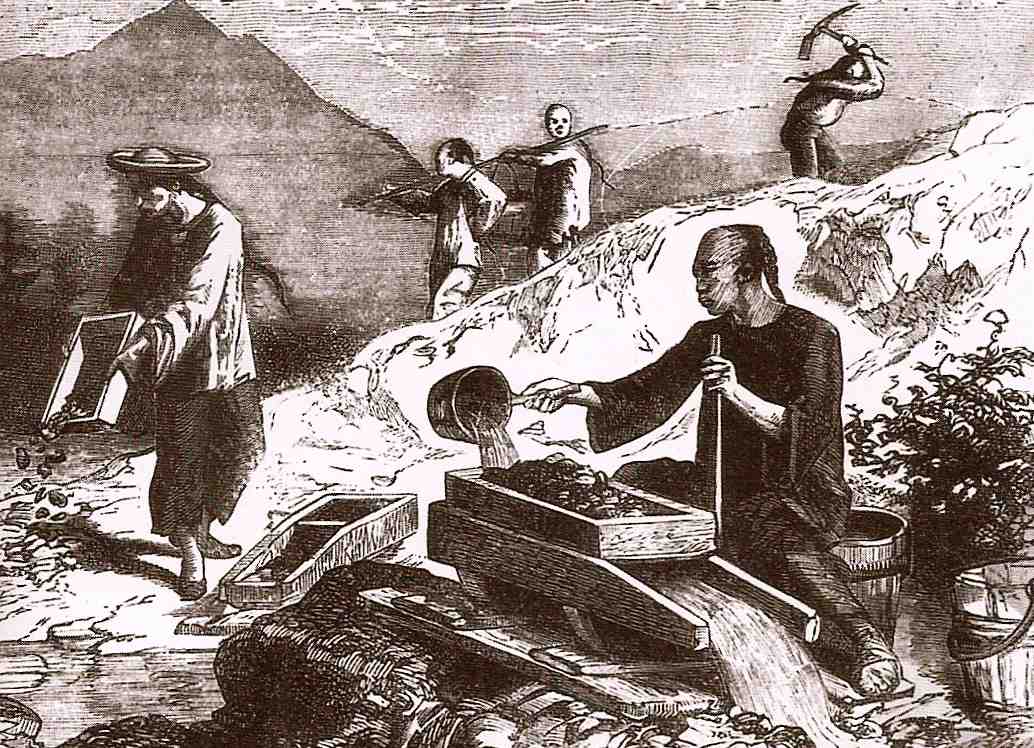 |
|
Chinese Gold Mining in California .
. . 1850s
When Chinese First Came to "Golden Mountain" called America |
|
Chinese Railroad Workers . . . 1860s
Sierra Nevada - Central Pacific Railway Company |
| |
|
In 1869, the first Chinese came to Chicago, after
the completion of the Transcontinental Railroad
(Most of the railroad workers were Chinese) |
|
Mr. T C. Moy, who arrived in Chicago in 1878, was always
considered to be the first Chinese pioneer in the city. When he found
Chicago more agreeable to Chinese than the people on the Pacific Coast,
he settled down and wrote to his friends and relatives, urging them to
join him. They responded positively and over 80 joined him in the year
he wrote them. Chinese in Chicago suffered the same restricted
immigration laws and had the same man(100) and woman(1) ratio (100:1),
as in other parts of America from 1870-1920. Never-the-less, the Chinese
population in Chicago grew steadily. By 1890, there were 567 Chinese in
the city. They took up unobtrusive occupations, mainly opening laundry
and restaurants. In 1900, there were 430 laundry and 167 restaurants,
all operated by Chinese. The first Chinese community was built around the Van Buren and Clark
Streets. By 1889, the area around Clark Street included one restaurant,
grocery and drug stores, butcher and barber shops, and a cigar factory.
By 1905, a Chicago business directory listed five Chinese restaurants in
Chinatown out of 40 in Chicago.
In 1905, due to the ill-treatment of Chinese in California, there was
a boycott of American trade in China. When news came to Chicago, the
presence of the Chinese aroused hostile feelings and suspicion.
Landlords raised the rent of houses occupied by Chinese to such a
significant rate that most occupants could not afford to pay.
By 1912, about half of the entire Chinese population in
Chicago had been
forced to move south to Cermak Road at Wentworth Avenue and Archer area,
then an Italian and Croatian neighborhood. It was made possible by a series of 10-year
leases on buildings which were contracted through the H.O Stone Company
by members of The
On Leong Merchants Association. |
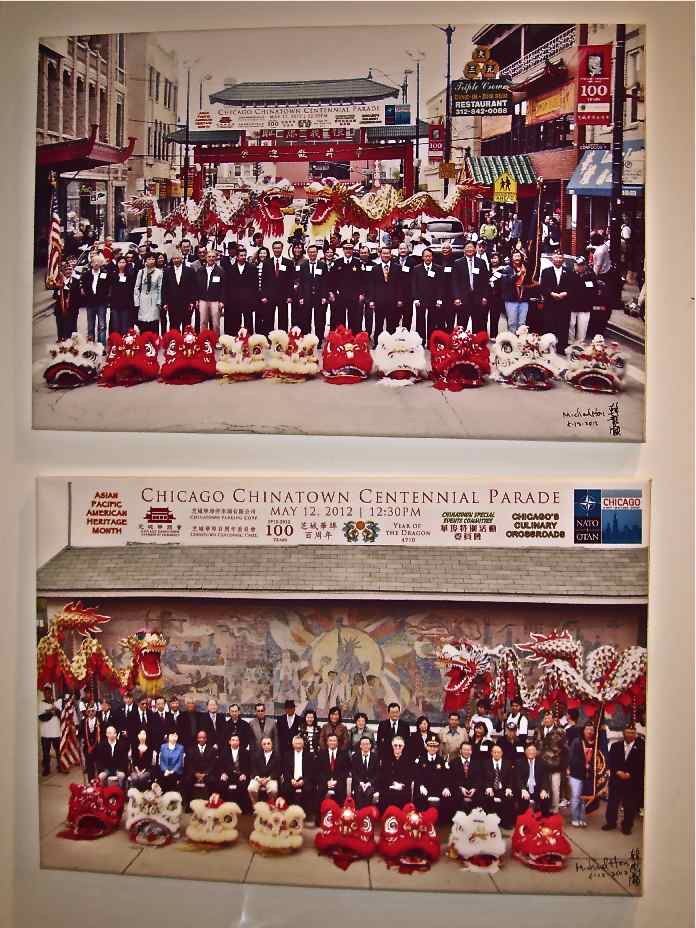 |
| Cermak Road and Wentworth Avenue soon became the hub of the
Chinatown. But after the Chinese had settled in the vicinity, some major
city projects took
place in this area. An extension of Cermak Road for the 1933 World’s Fair
cut the housing in half.
In the 1920's, businesses and associations moved in, and many
large Chinese style buildings went up. By the early 1930's the
neighborhood had expanded and was mostly Chinese. 1950s to 1960s,
Communist takeover of mainland China in 1948 brought immigrants, who
doubled the Chinese population in Chicago from 7,000 to 14,000. At the
same time, construction of the Dan Ryan and Stevenson expressways halved
the size of Chinatown. Even more housing was demolished in 1969 after
the state announced the construction of the Franklin Street extension of
the Dan Ryan, a project that never materialized. 1970s, the
first Chinatown, at Van Buren and Clark, was torn down for a federal
detention center, the
Metropolitan Correctional Center, and the population was
relocated to a "Northside Chinatown" at Argyle and Broadway. The
relocation was headed by
Hip Sing Tong. It was selected to be the
location of the North Chinatown because transportation is easily
accessible and land was inexpensive. Entrepreneur Jimmy Wong and his
associates bought 60% of the properties on both sides of Argyle Street
and tried to provide financial help to those who would like to start a
business there. But this North Chinatown, though flourishing, never
attained the prominence of the South Chinatown. At present, the Argyle
area is known more for its Southeast Asians and Chinese who come mainly
from Vietnam. It is often called The "Small Saigon".
2012, Chinatown celebrates 100 years, at Cermak Road & Wentworth
Avenue, in Chicago. |
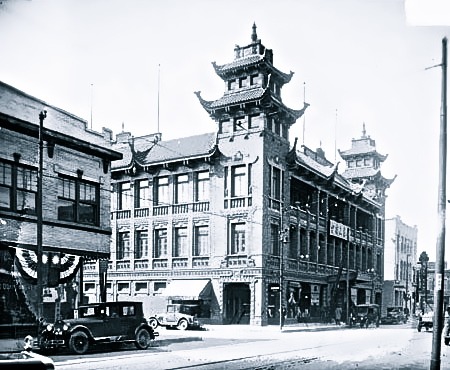 |
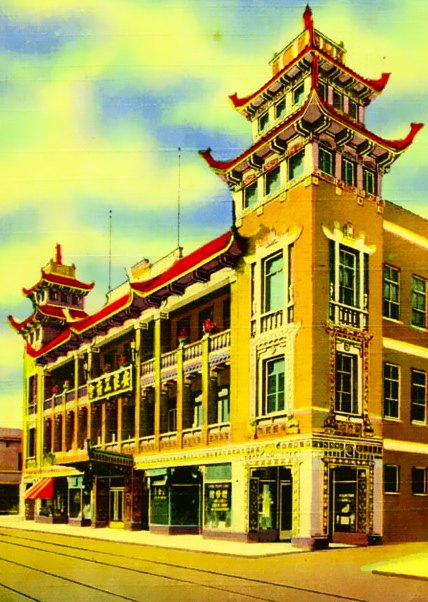 |
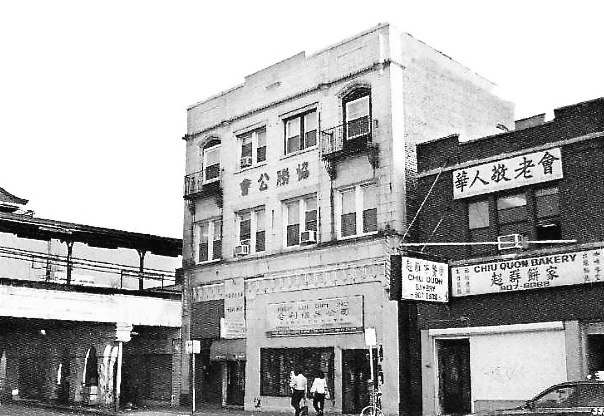 |
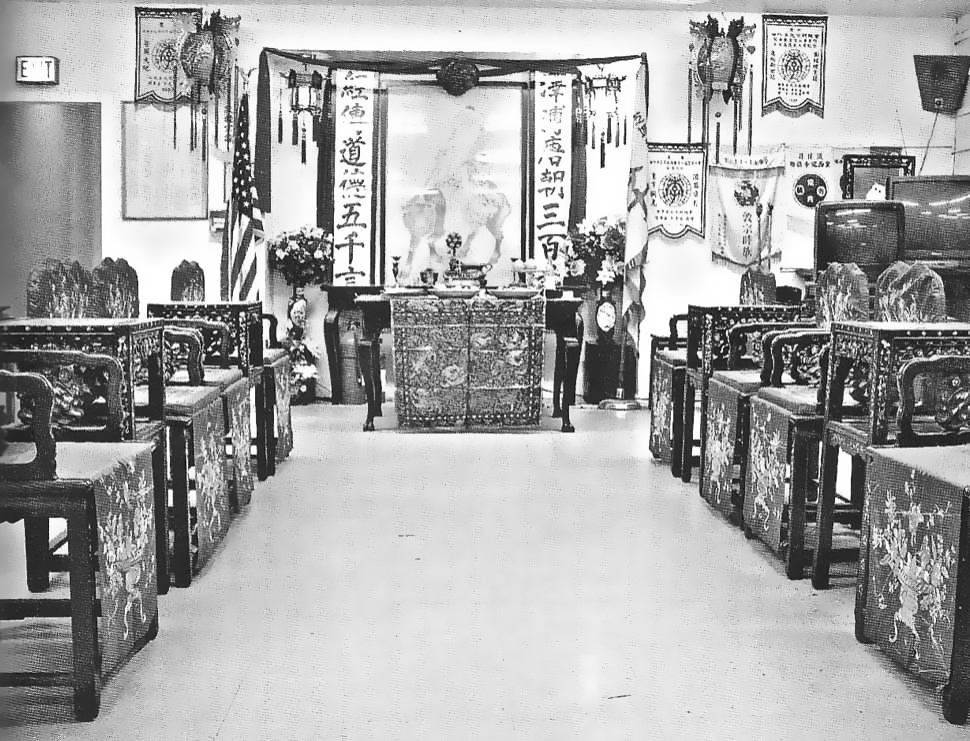 |
|
Hip Sing Society |
Chinese Tao Association - Main Hall |
|
Hung Mon Society - Shrine to the
"God of War" |
|
Made in Hong Kong in 1894, commissioned by no
fewer than 16 wealthy community members,
possibly the year the Chicago chapter was established, thus making
it the oldest documented
Chinese organization in the city of Chicago |
|
Hung Mon Society (Chinese
Freemasons)
A nation wide organization, the Hung Mon Zhigong Tang
Society in Chicago, was established well before the end of the 19th
century.
Formerly, a secret society with roots in South China going back to the
1600s,
the Society helped spearhead the 1911 revolution, which led to the
overthrow of the Ching Dynasty.
In recent decades, Hung Mon has become affiliated with European/American
Masonic organizations.
It mixes some Masonic, with Chinese symbolism, and with the approval of
Illinois Masonic Lodges,
calls itself the Chinese Freemasons Association.
The Hung Mon Society requires members to go through an initiation
that involves a series of symbolic rituals.
The initiation rituals are performed in front of the shrine, sometimes
with temporary "Gates".
Each Gate represents an oath of loyalty, which helps to bind
members together.
Note - The "War God's Shrine" is not located at the Chinese
American Museum of Chicago.
It is the Altar at the Chinese Masonic Lodge in Chinatown - No Public
Viewing or Admittance! |
|
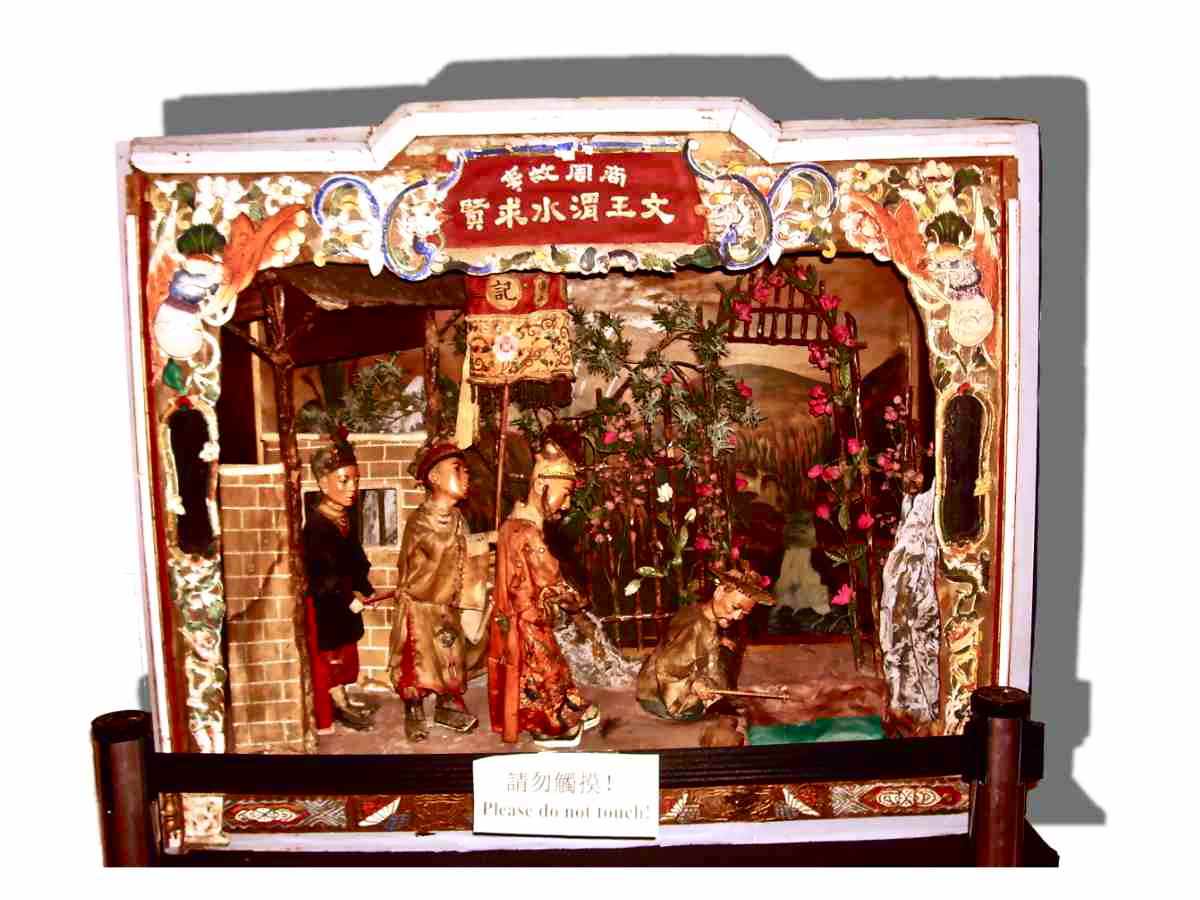 |
|
Ling Long Diorama
"Mon-Wong Seeking the Sage on the Banks of the River Wei"
The Ling Long Gallery contained 23 historical dioramas, placed
along the perimeter of the gallery.
They related the highlights of Chinese history in an artistic medium
popular in museums in the early to mid 20th century.
All the Ling Long dioramas were lost in the museum fire of 2008, except
the one pictured.
This scene represents perhaps the most widely known events in
Chinese history.
Chaing-hai-kung, the Sage, is secluded on the banks of the
River Wei disguised as a fisherman.
Mon Wong, father of Wu Wong, the king and founder of the Chou Dynasty
(1122-255 B.C.), sought the service of the Sage.
According to tradition, Prince Mon Wong had to make three trips to the
hut before he was able to obtain audience with the Sage.
It was the great benevolence and wise policy of the Sage that won over
public opinion to the Chou Dynasty. |
|
Ling Long Museum
It was the first museum in America operated by Chinese.
This museum was opened on Wentworth Avenue in 1933, as a response to the
Century of Progress Exposition.
The museum featured dioramas of Chinese historical stories and other
statues.
Artwork was designed by Wilson Lim in San Francisco, and made in Foshan,
Guandong.
It was closed in the 1970s. |
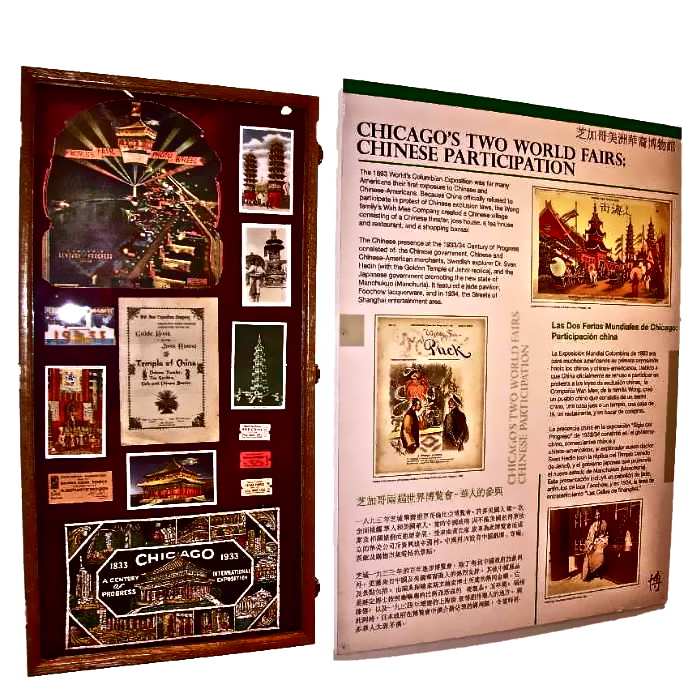 |
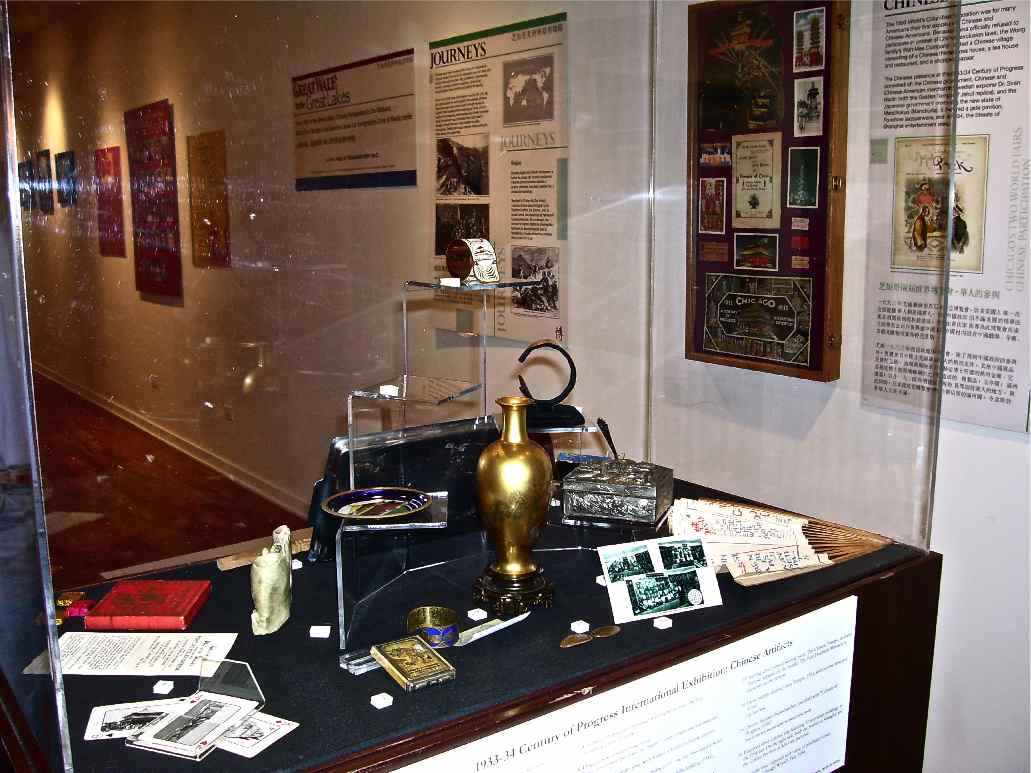 |
|
1893 - World's Columbian Exposition
1933 - Century of Progress World's Fair |
1933/34 Century of Progress International
Exposition
Chinese Related Artifacts |
|
Great Wall Brick |
Antique Chinese Furniture, Lanterns, Paintings |
|
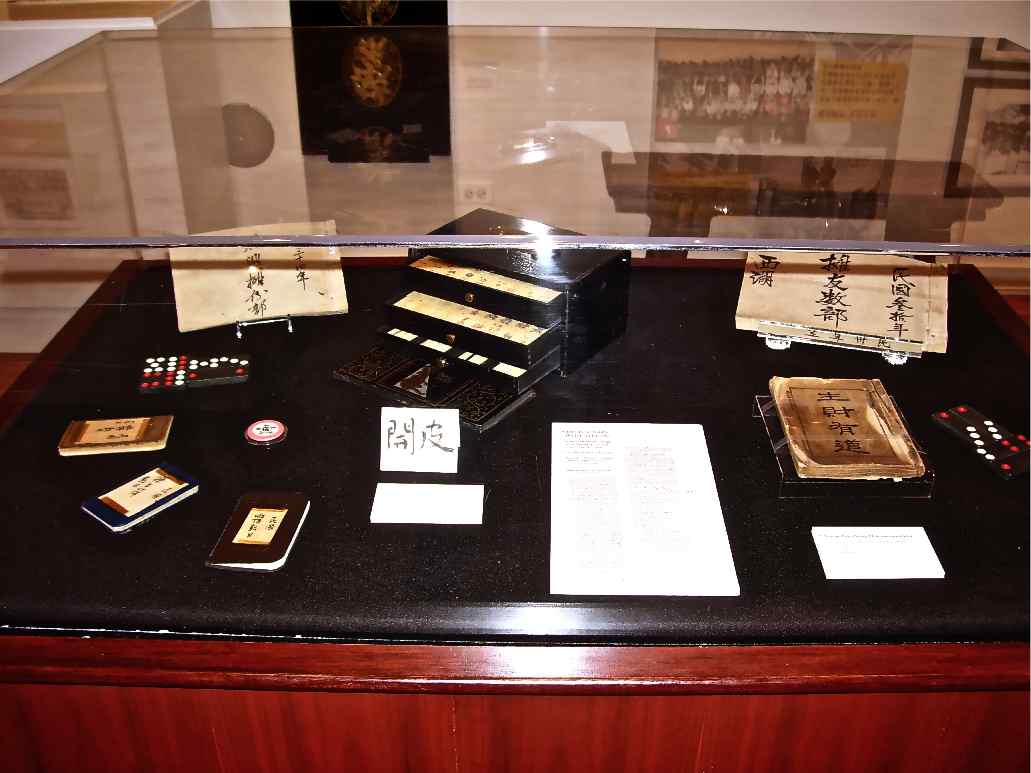 |
|
Gambling Paraphernalia & Debt Tally
Books |
| |
|
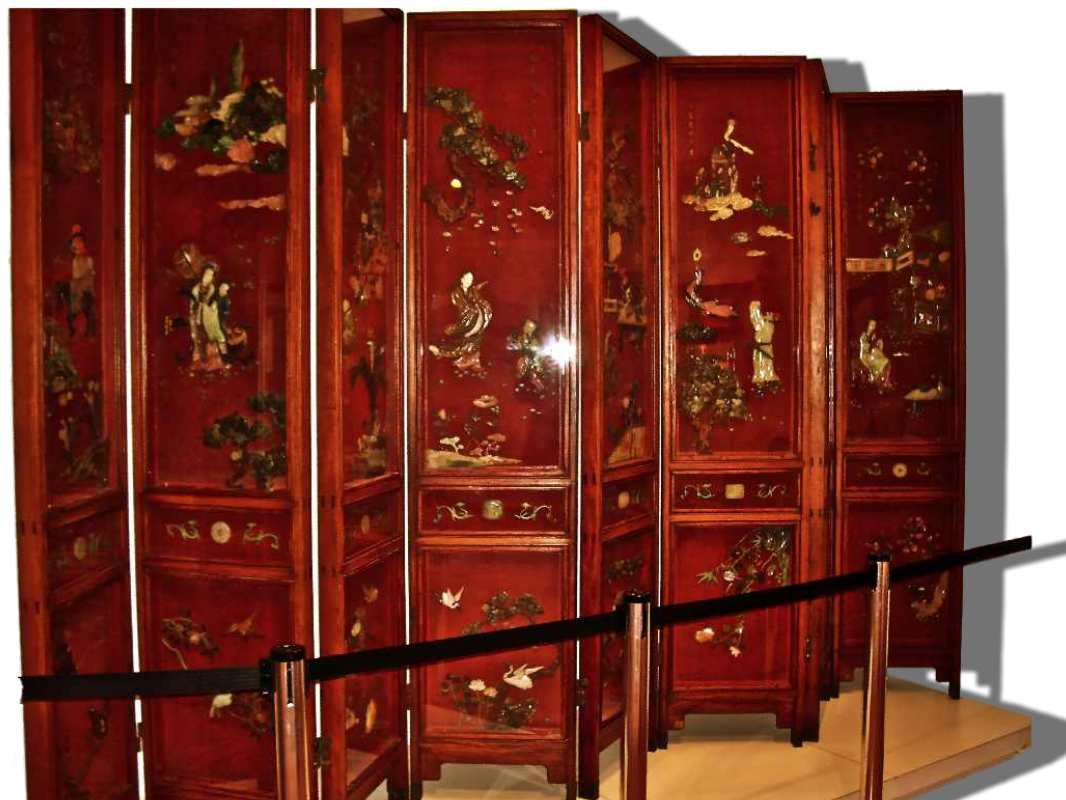 |
|
Chinese New Year is the
Biggest Event
in the Chinese World! The
Green Dragon Society
Celebrated the Chinese Lunar New Year Festival
Year of the Snake 2013
 |
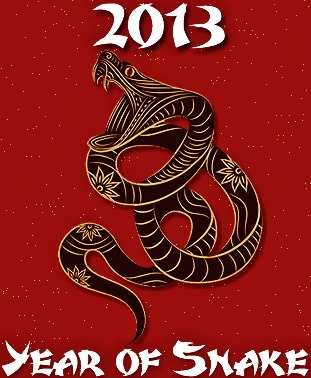 |
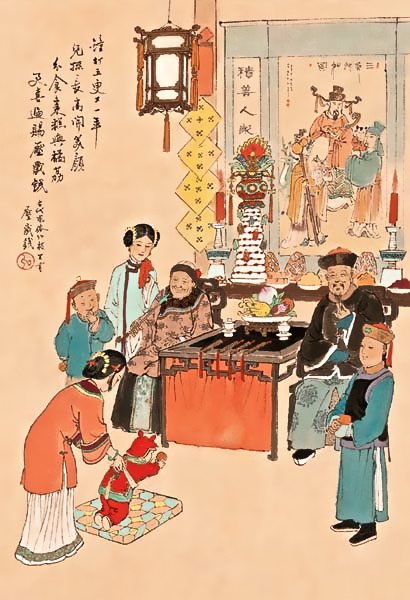 |
Origins
Chinese New Year celebrations were born out of fear
and myth.
Legend spoke of the wild beast "Nien" (which also is the word for
"year") that appeared at the end of each year.
Legend tells of a village in China, thousands of years
ago, that was ravaged by an evil monster one winter's eve. The following
year the monster returned and again ravaged the village. Before it could
happen a third time, the villagers devised a plan to scare the monster
away. Red banners were hung everywhere; the color red has long been
believed to protect against evil. Firecrackers, drums, and gongs were
used to create loud noises to scare the beast away. The plan worked and
celebrations lasted several days during which people visited with each
other, exchanged gifts, danced, and ate tasty foods.
The timing of the festival is passed down from China's
ancient agrarian culture, filled with traditions, rooted in a
celebration of Spring. The Chinese were basically farmers. Their main
occupation comprised of agricultural works. It was important to know
when to till the soil and when the time is ripe to sow the seeds. Winter
is a period for farmers to rest and prepare for the harvests of the
coming year. So for this purpose a calendar was required for keeping
track of time. Thus the New Year was likely the start of preparations
for a new growing season. Naturally, much of the festival activity
centers on insuring good fortune and driving away evil.
Both Buddhism and Taoism have unique customs during the New Year, but
Chinese New Year is far older than either religion.
With Spring Festival customs one can easily find many regional
differences. Even different cities within the same province will have
different habits.
|
|
Preparations
The preparation to celebrate the Chinese New Year
Festival begins around the 8th day of the 12th lunar month. That means,
it's required about three weeks to prepare for the festival.
Preparing the House for Chinese New Year
Traditionally, the house is swept, cleaned, and decorated for optimal
New Year Feng Shui. The spring cleaning done prior to Chinese New Year
is usually the most thorough of the entire year, and prepares the house
for good luck. Broken items, dead plants, and all clutter should be
thrown out.
Clean Yourself up for Chinese New Year
Any cutting done during Chinese New Year is considered unlucky, so hair
and fingernails should be trimmed in advance. Also, showering or bathing
should be gone before the midnight hour on New Years Eve, or the luck
will wash away. New clothes are purchased in the auspicious red color,
and will be worn for the first time in the early hours of the New Year.
Not only does the red color scare off the Monster Nian, but new clothes
symbolize a new start.
|
|
Festival Food
Every family purchases enough food for both the festival dinners as well
as regular meals, including fish, meat, roasted nuts and seeds, all
kinds of candies and fruits, etc, for the entire festival period. A food
may have special significance during Chinese New Year because of the way
the Chinese word for it sounds. For example, the Cantonese word for
lettuce sounds like "Rising Fortune", so it is very common to
serve a lettuce wrap filled with other lucky food. Fish also play a
large role in festive celebrations. The word for fish, "Yu",
sounds like the words both for "Wish and Abundance". As a result,
on New Year's Eve it is customary to serve a fish at the end of the
evening meal, symbolizing a wish for abundance in the coming year. For
added symbolism, the fish is served whole, with head and tail attached,
symbolizing a good beginning and ending for the coming year. Serving
a whole chicken during the Chinese New Year season symbolizes family
togetherness. Cakes such as Sticky Rice Cake have symbolic
significance on many levels. Their sweetness symbolizes a rich, sweet
life, while the layers symbolize rising abundance for the coming year.
Flowers & Fruits
Flowers are used to freshen up homes, as gifts for hosts, and as Temple
altar offerings. Tangerines and oranges are passed out freely
during Chinese New Year as the words for tangerine and orange
sound like "Luck and Wealth", respectively. If you choose to give
fruit baskets, give oranges and make sure that you do not include
pears, because the word for pears, "Li", means separation.
|
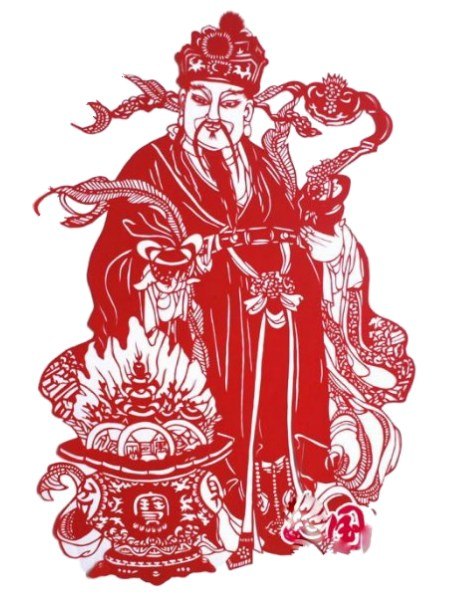 |
|
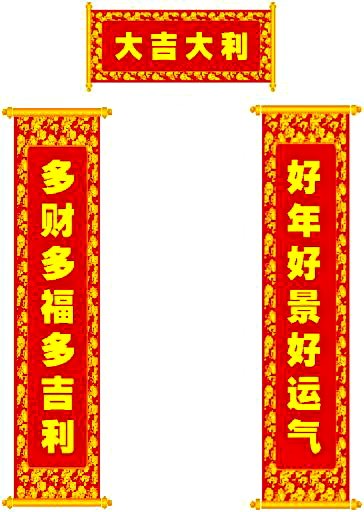
Chunlian |
Red Packets
A red packet is a red envelope with money in it, ranging from one to a few
thousand. Usually the red envelope is given by adults, especially
married couples, to friends, the elderly, and to young children during
the New Year days. It is believed that the money in the red packet will suppress evil,
promote prosperity, keep the recipient healthy, and bestow a long life.
Chunlian
These temporary banners are usually comprised of several glittery gold
Chinese characters written on a red banner known as Chunlian. They are
hung in the house to usher in prosperity in the new year. These red
scrolls have complementary, poetic couplets, of a happy, hopeful, and
better New Year ahead. One line on each side of the gate, are pasted at
every door. The Chinese character 'Fu' is pasted on the center of the
door and paper-cut pictures often adorn windows.
Paper Lanterns will be needed for the Lantern Festival on the
15th, and final day of the Chinese New Year. |
|
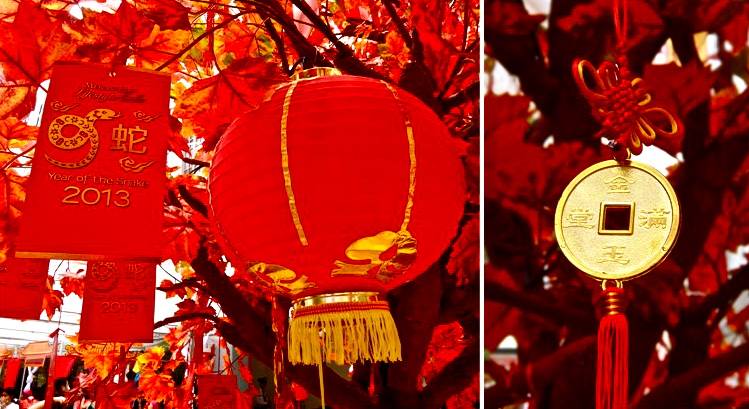 |
|
Protective Talismans & Astrological
Reference Books/Charts |
|
For many Chinese it is important to know the rising of
evil stars and occurrence of lucky days in the New Year. Personal
pendant charms to be worn around the neck, as well as carven stone
amulets for home protection from evil influences, are purchased from
reputable dealers or fortune tellers. Talismans blessed at Temple are
most affective. Protective charms, both personal and home, are known to
occasionally break or shatter. This is considered as an indication that
the Talisman absorbed an evil influence meant for the owner. |
|
Protective Pendant Charms |
|
Home Protective Talismans |
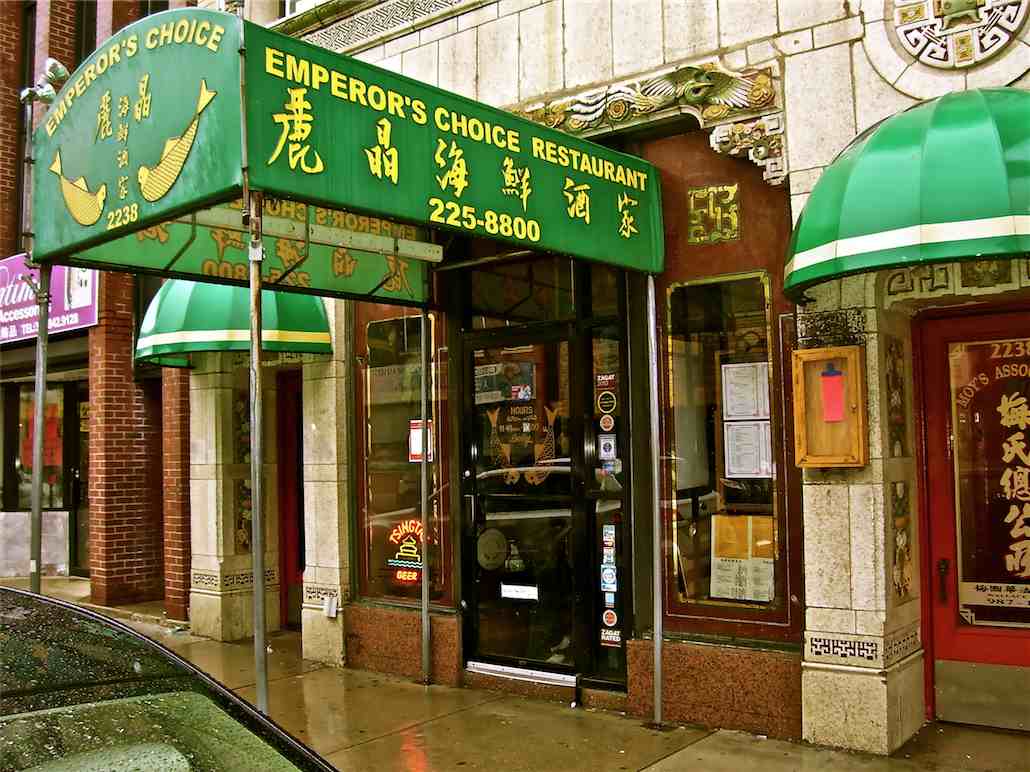 |
The reunion dinner, on the eve of the Lunar
New Year,
is a traditional celebration with family and friends
who will play an important part throughout the coming year
Emperor's Choice
2238 S Wentworth Ave
Chicago, Illinois, 60616
(312) 225-8800
The menu at this Chinatown restaurant is Cantonese focused
There is a full bar - good food - friendly service
Saturday - February 9th,
2013
Green Dragon Society
Attended Lunar New Years Eve Dinner |
| The New Year's Eve dinner is the most important dinner for the
Chinese. Normally fish will be served. Dumplings are the most important
dish in Northern China. These two dishes mean prosperity. Other dishes
depend on personal preference. The majority of Chinese will have New
Year's Eve dinner at home instead of in a restaurant. |
|
Chinese New Year Eve Traditions |
Talismans
Earlier in the day, personal and home Talismans obtained for the New
Year, both blessed Pendant Charms, as well as Chunlian, and also
Protective Statuary are placed in their respective locations and
directions as indicated astrologically.9 Quarters
9 Quarters are placed on the household altar, or other propitious
location, with a date fruit on top. The word for a date, "Jow" is
the same as the Chinese word which means roughly "Promote Coming Wealth"
Bright Lights
Bright lights are left on all evening and throughout the entire night in
the main room of the house, from sundown to sunup. This means the coming
year will be filled with light, not darkness, in all forms.
Bless Buddha Table
An hour before Midnight, set in front of the house Altar or in another
place of honor, is a table of fruits and herbs and incense, with
beautiful flowers and also powerful amulets, and this is prepared for
the Buddhas or the Taoist Immortals, as both a feast and invitation to
visit. The family will retire to another area of the home as the party
is truly for the Immortals.
Red Envelopes
Husbands and wife's will exchange red envelopes to promote wealth in the
coming year, and then place it under their pillow at night.
Fireworks
Fireworks are used to drive away the evil in China. Right after the
Midnight of New Year's Eve, fireworks will be launched to celebrate the
coming of the New Year as well as to drive away the evil. It is believed
that the person who launches the first Fireworks in the New Year will
get good luck. |
|
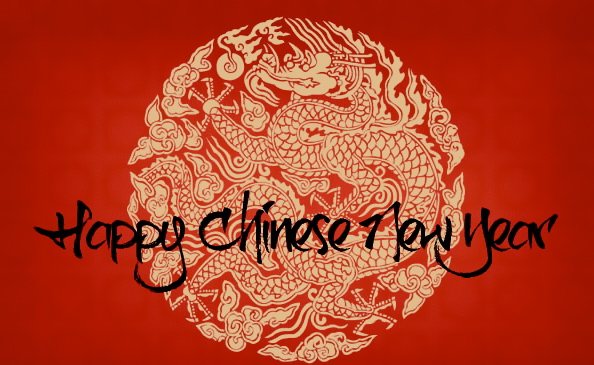 |
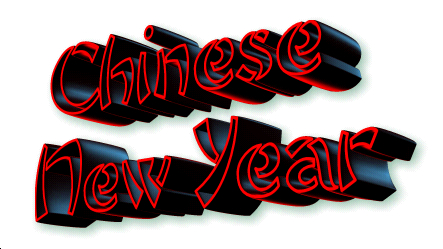 |
|
Chinese celebrate the New Year for 15 days,
until the Chinese Lantern Festival |
|
The Year 2013 is the 4711th Chinese
Year |
|
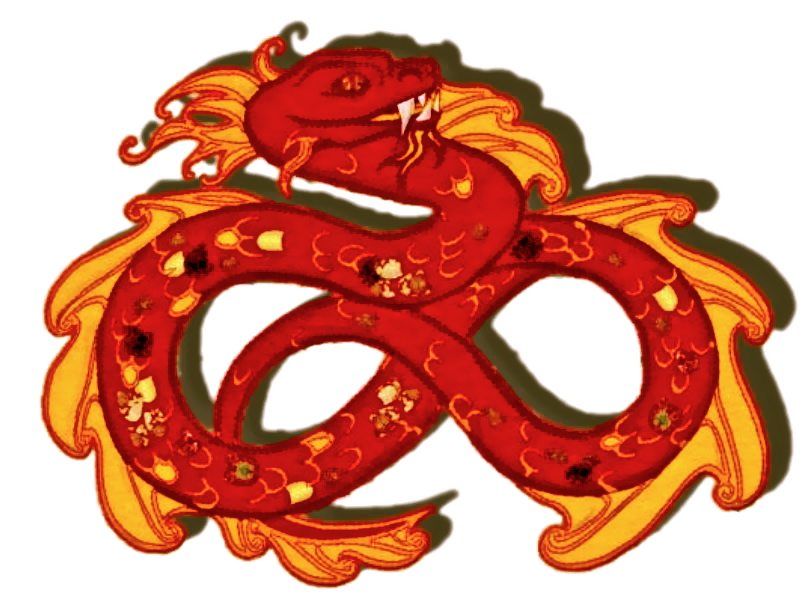 |
New Years Day
February 10th, 2013
This day
is a New Moon, and is the first day,
of the first Chinese lunar month,
in the Lunar Calendar system.
2013 is a (Black Snake, Water Snake)
or (Black Water Snake) year.
The color of Water in Five Elements System
is related to Black. |
|
Lunar New Year is a time for settling debts. It is
considered a loss of face for one to start a new year with unpaid debts. |
|
Don't clean for the first few days of the New Year. If
you do any sweeping or throwing anything out, like the garbage during
this time, you risk sweeping or throwing away your good luck. |
The 2nd day of Chinese New Year is the
Son-in-Law Day, and married women return to their mothers home on
this day.
The 3rd day of Chinese New Year is the Day of the Poor Devil,
and it is believed everyone should stay at home.
The 4th day of Chinese New Year is the Welcome Home Day to the God
of the Stove.
The 5th day of Chinese New Year is the Welcome God of Wealth Day.
Lots of business stores like to reopen on this day.
The 6th day of Chinese New Year is the Clear-Water Master Day,
and marks a time to visit temples, relatives and friends.
The 7th day of Chinese New Year is the Day of Men, the
original birthday of ordinary, or common men.
The 8th day of Chinese New Year is the Completion Day.
The 9th day of Chinese New Year is the Birthday of the Jade
Emperor, King of Heaven.
The 10th day of Chinese New Year is the Eating Day, for friends
and family.
The 11th day of Chinese New Year is the Break Day, for
friends and family.
The 12th day of Chinese New Year is another day for feasting with
friends and family.
The 13th day of Chinese New Year is the Death Anniversary of Kuan Ti.
The 14th day of Chinese New Year is the Lantern Decoration Day.
The 15th day of Chinese New Year is the start of the Lantern
Festival.
The Chinese New Year Festival will end at Chinese Lantern Festival, but
the displays of lantern shows will last for another 20 to 30 days. |
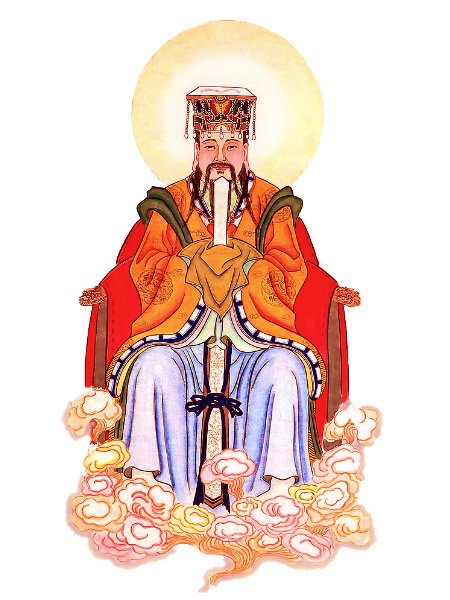
Jade Emperor |
|
The Dragon is present in many Chinese cultural
celebrations as the Chinese people often think of themselves as
descendants of the mythical creature. On the fifth day of the New Year
when many people have to start going back to work, they will have the
Dancing Dragons perform. On the 15th day of the New Year they will also
have Dancing Dragon performances. The Dragon represents prosperity, good
luck and good fortune. |
|
The Zodiac is part of an elaborate
system, based on Chinese Astrology, Cosmology, and Divination |
|
The Zodiac was calibrated to track the waxing and
waning phases of the moon, used as a method for counting years, months,
days and hours in the Chinese imperial court and civil calendar, and
utilized to forecast one's future and determine one's character.
|
|
From 07 Feb 2008 to 25 Jan 2009 : EARTH RAT
From 26 Jan 2009 to 13 Feb 2010 : EARTH OX
From 14 Feb 2010 to 02 Feb 2011 : METAL TIGER
From 03 Feb 2011 to 22 Jan 2012 : METAL RABBIT
From 23 Jan 2012 to 09 Feb 2013 : WATER DRAGON
From 10 Feb 2013 to 30 Jan
2014 : WATER SNAKE
From 31 Jan 2014 to 18 Feb 2015 : WOOD HORSE
From 19 Feb 2015 to 07 Feb 2016 : WOOD GOAT
From 08 Feb 2016 to 27 Jan 2017 : FIRE MONKEY
From 28 Jan 2017 to 15 Feb 2018 : FIRE ROOSTER
From 16 Feb 2018 to 04 Feb 2019 : EARTH DOG
From 05 Feb 2019 to 24 Jan 2020 : EARTH PIG
|
|
2012 Year of the Black
Dragon was the last year of the Wood Cycle.
2013 Snake Year is the beginning year of the
Fire Cycle (Snake, Horse and
Sheep).
|
|
The Chinese Calendar counts years in
Cycles of Sixty Years
Each year has a label consisting of two parts.
The first component is the Celestial Stem being one of the Five
Elements. |
|
The second component is the
Terrestrial Branch being one of the Twelve Animal (Zodiac) Signs.
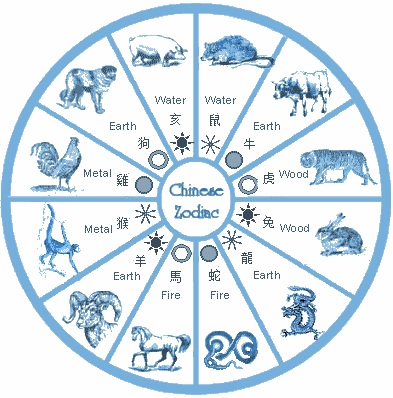
|
|
Five (elements) multiplied by twelve
(animals) equaling sixty, or one cycle in the Chinese calendar.
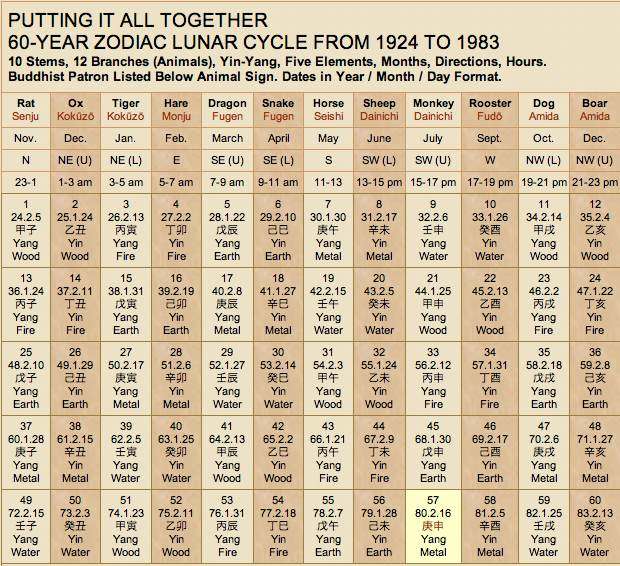 |
|
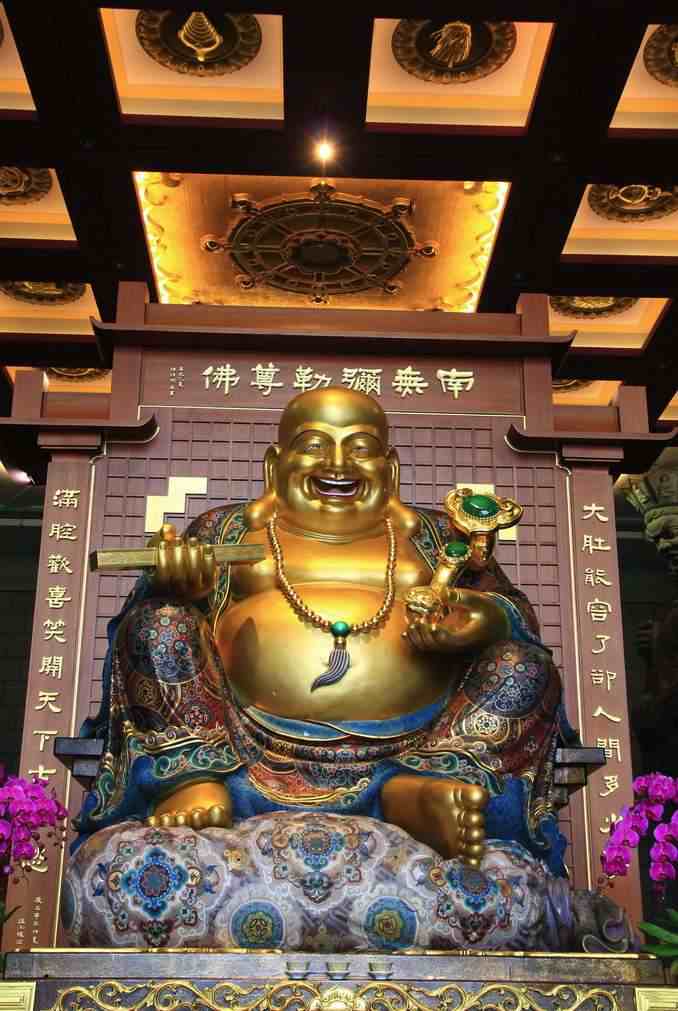 |
Sunday - February 10th, 2013

The "Happy Buddha" brings in the New Year with his
special qualities
Happiness, Good Luck, Long Life and Success
Happy Buddha is assisted by
The Medicine Buddha
and
The Money Buddha |
|
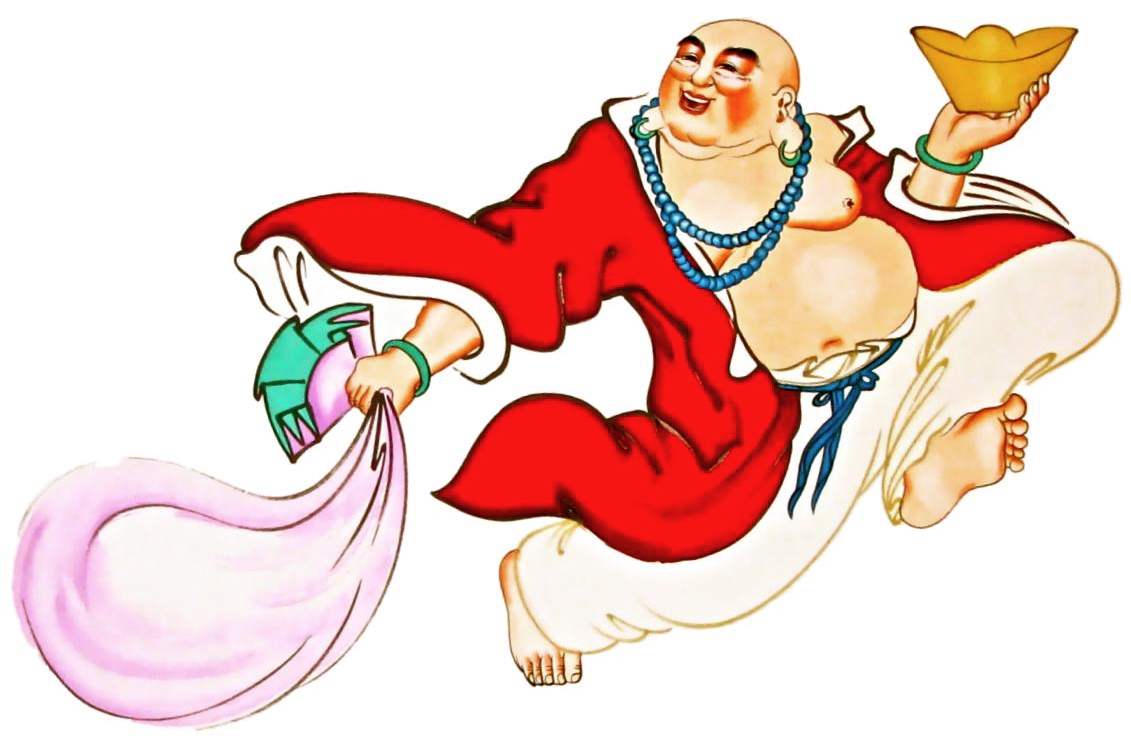 |
|
 |
| First thing, early on New Year, it is important to burn incense in
the Temple, at ceremony. Everyone wants to be the first to light their
New Year incense at the Temple, as it means good luck. This New Year
morning, it was propitious to go outside between 7am and 9am, and travel
in order to accumulate the powerful Chi resounding in the atmosphere.
Travel in the correct direction is also important. On this day the signs
indicated travel in a N/E or N/W orientation. Omens were positive, as
the travel was then N/E to arrive at the Enlightenment Temple.
Unexpectedly, the Grand Master of the Mahayana, International
Buddhist Friendship Association, was present to orchestrate the
festivities and ritual procedures. He gave his sermon in both Cantonese
and then English. His three key note points - You do the utmost on
everything, then step back and let it go, you take time to improve your
inner spirit a little, then you reach out and assist other people in
need.
Three hours of intense meditational mantra were recited by the
congregation in Chinese. After the ceremony was completed, a blessed
meal, vegetarian luncheon, was served to the participants. Lucky charms
for the year and red envelopes were given to all participants.
New Year's Day is traditionally spent with family and Green Dragon
members later met with relatives in Chinatown. |
|
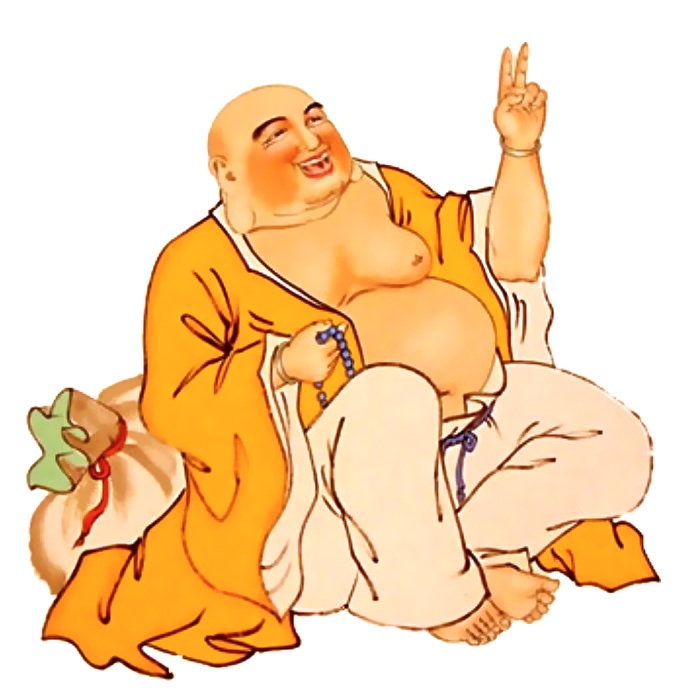 |

Enlightenment Temple
2249 Wentworth - Chinatown
Chicago, IL
(312) 881-0177
Green Dragon Society
Members Attended |
|
Sunday - February 17th, 2013
Green Dragon Society
Attended
Chicago Chinatown
The Chinese Lunar New Year Parade
Beginning at 24th and Wentworth and going north to Cermak
Starting at 1pm
The Chinese New Year is also called the Chinese Spring Festival
|
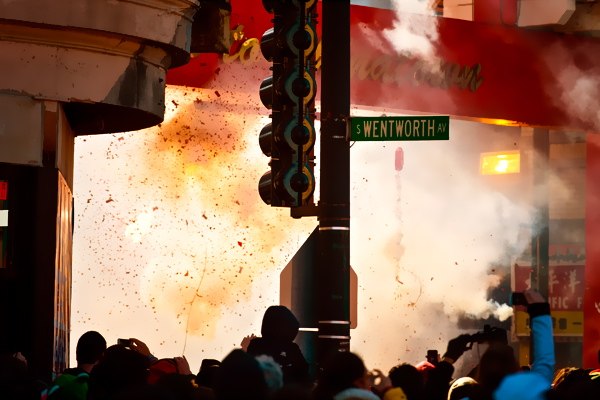 |
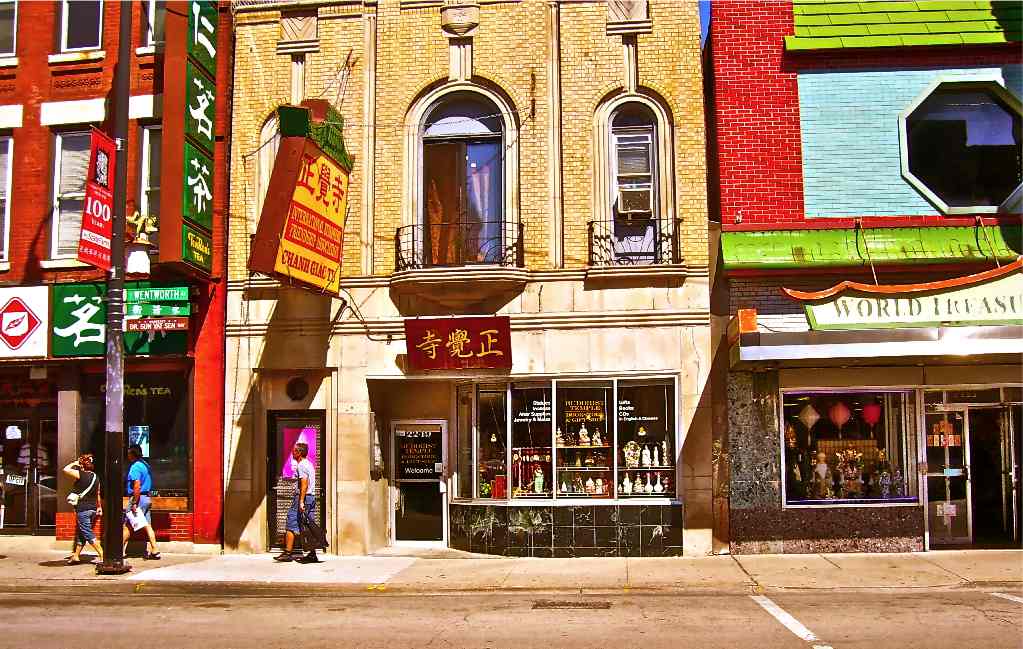 |

Enlightenment Temple
2249 Wentworth - Chinatown
Chicago, IL
(312) 881-0177
Green Dragon Society
Members Attended
Spring Festival Services & Luncheon
Prior to the Parade |
| Properly dressed it was a pleasant day to view the parade, as the
weather was cold, but without a fierce wind. The crowd was not as big as
the previous year when Chinatown celebrated it's 100th anniversary at
the Wentworth Avenue and Cermak Road location. The Chinese community had
a wonderful time celebrating their heritage and culture. After the
parade the restaurants in Chinatown were packed - waiting lines only. So
it was, the Green Dragon Society headed for a more obscure section of
Chinatown around 29th and Wentworth. We had to maneuver vehicularly
around police parade blockades and detours, and then there we were, at
the banquet halled Furama Restaurant. It sat almost empty and seemingly
abandoned, but of course the Chinese were holding their own more private
lunches at Associations and in their homes, and were avoiding the
restaurants crowded with tourists and parade sightseers. Our pretty,
young Chinese waitress assured us that later in the night a 700 person
banquet was scheduled and the season was certainly busy. |
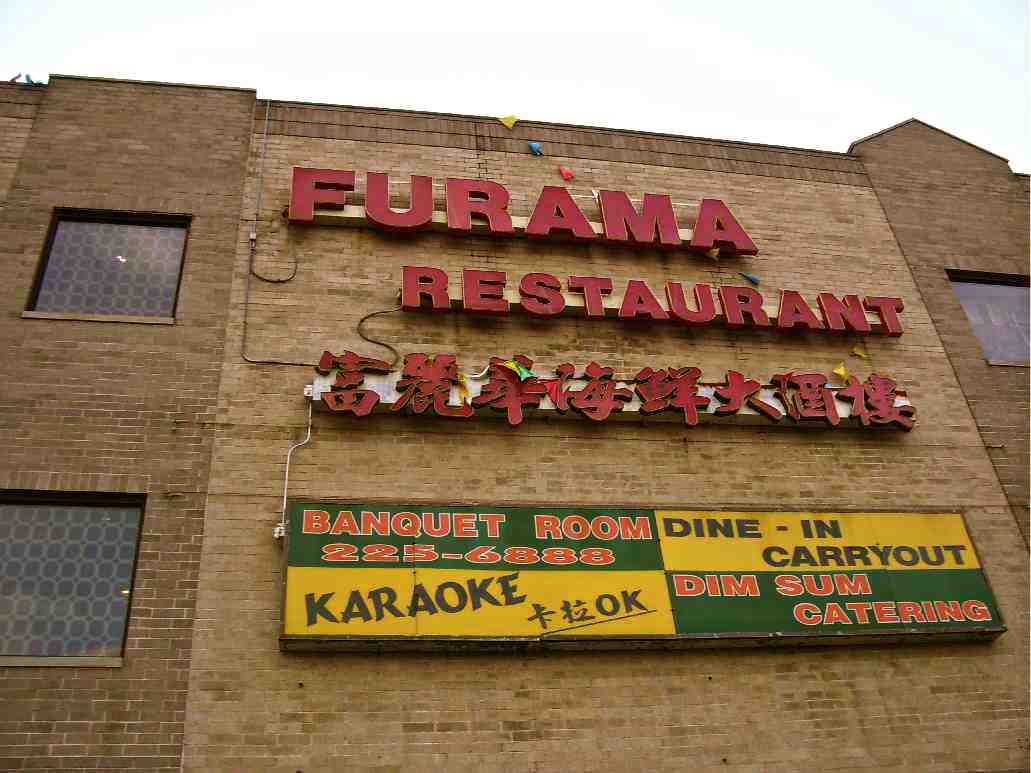 |
|
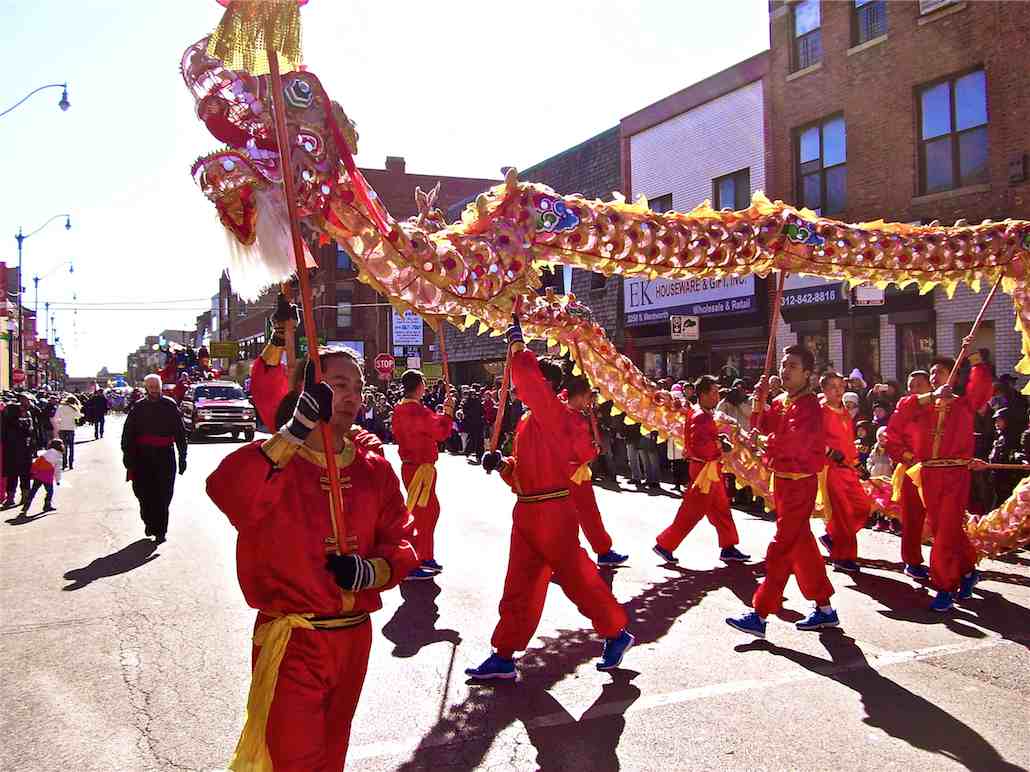 |
|
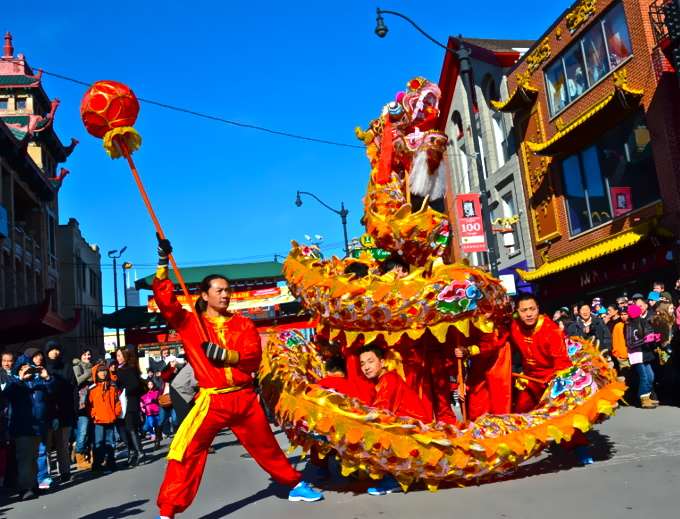 |
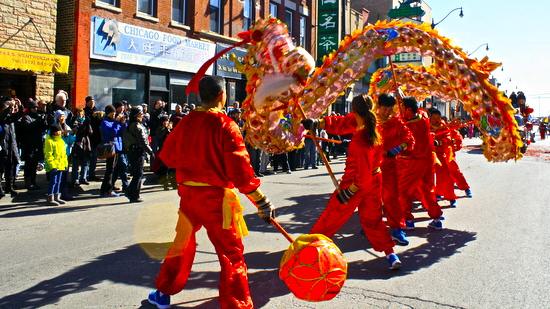 |
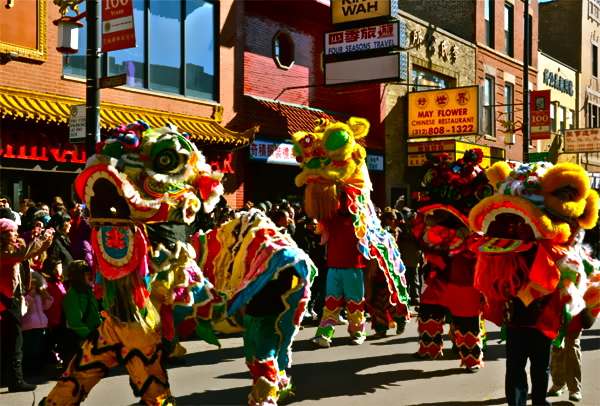 |
|
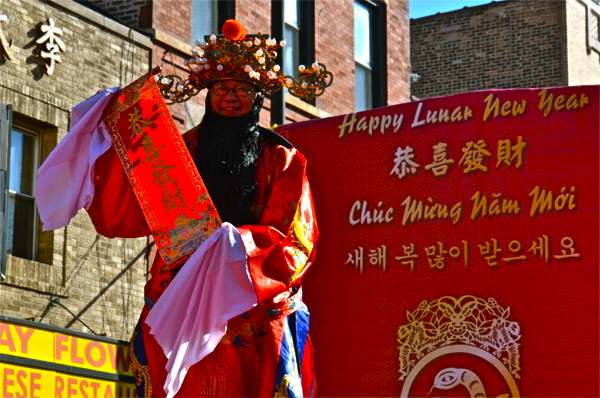 |
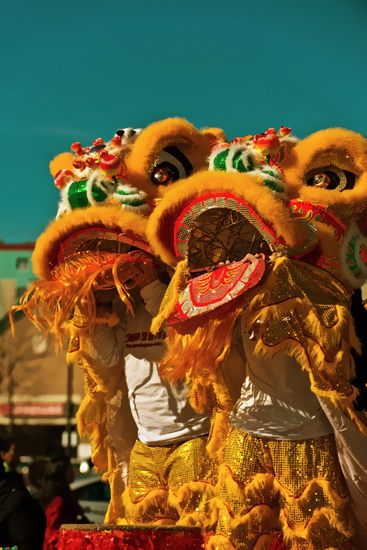 |
|
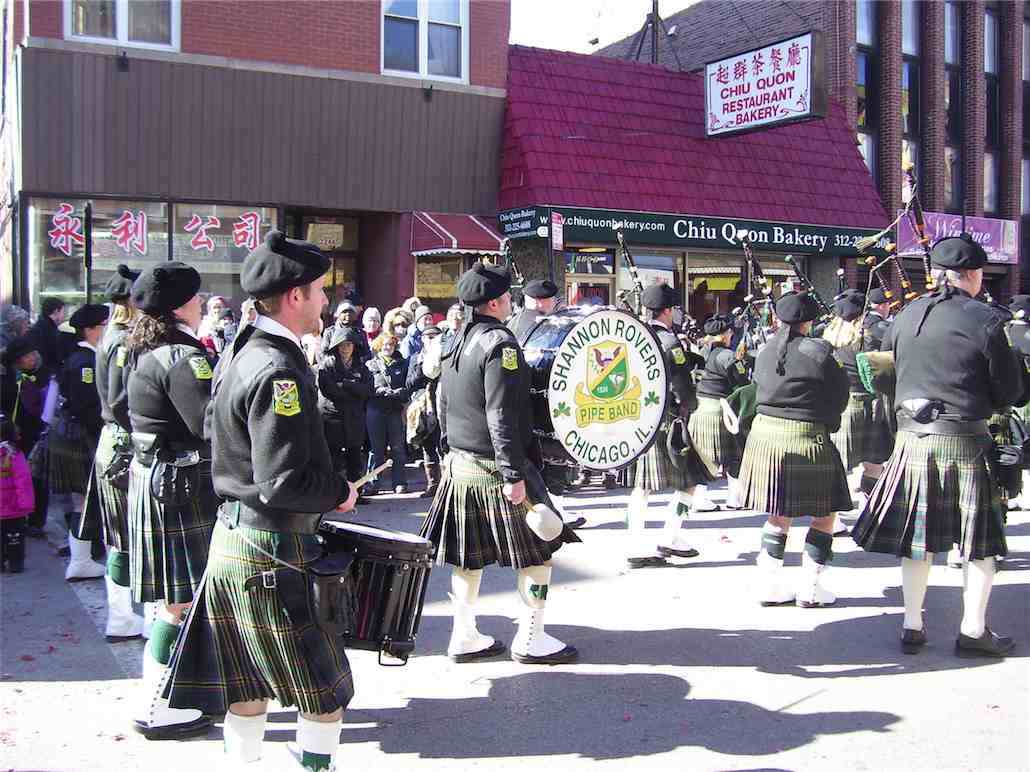
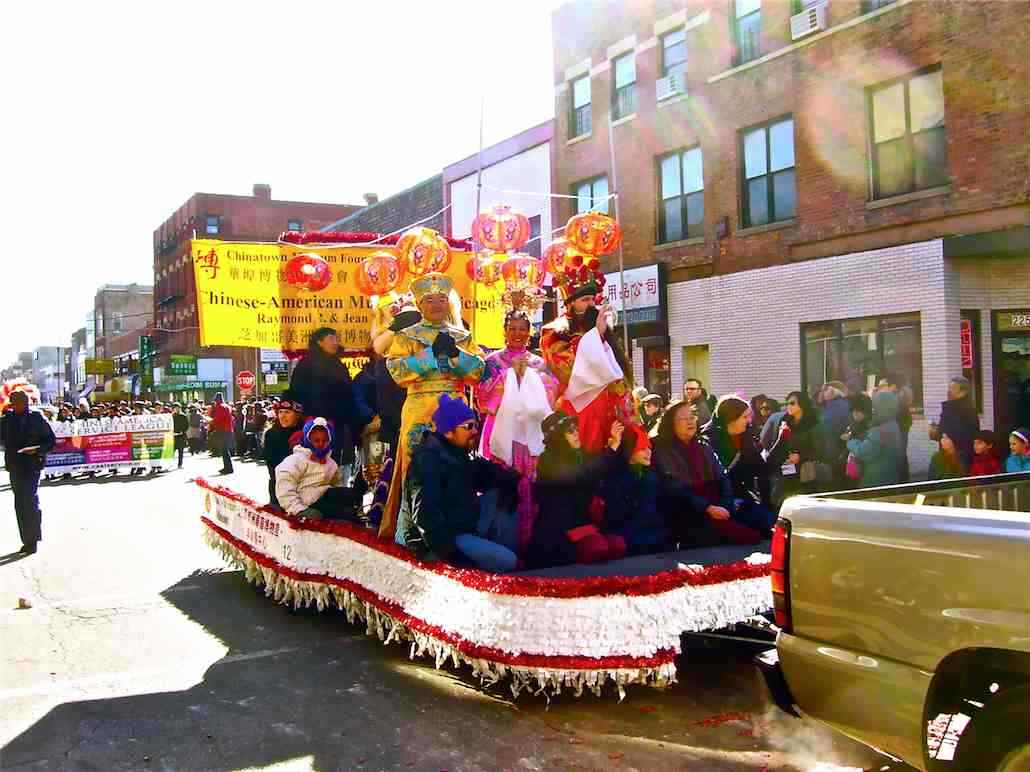
Chinese American Museum of Chicago Float
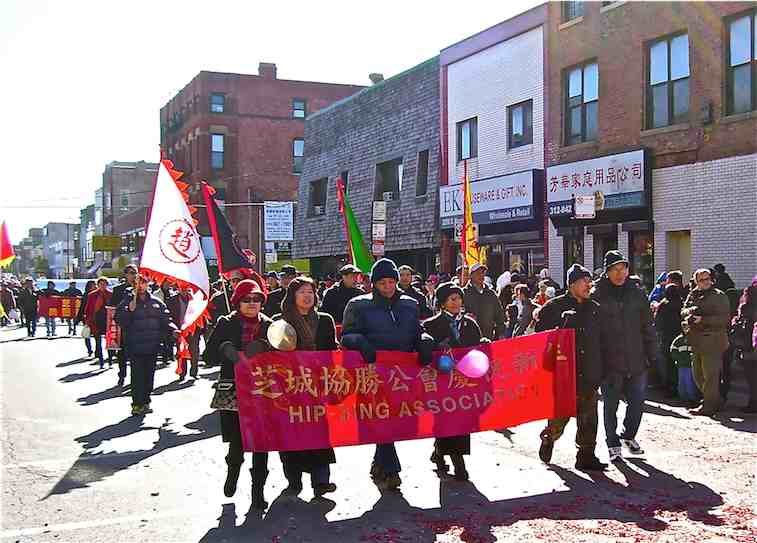
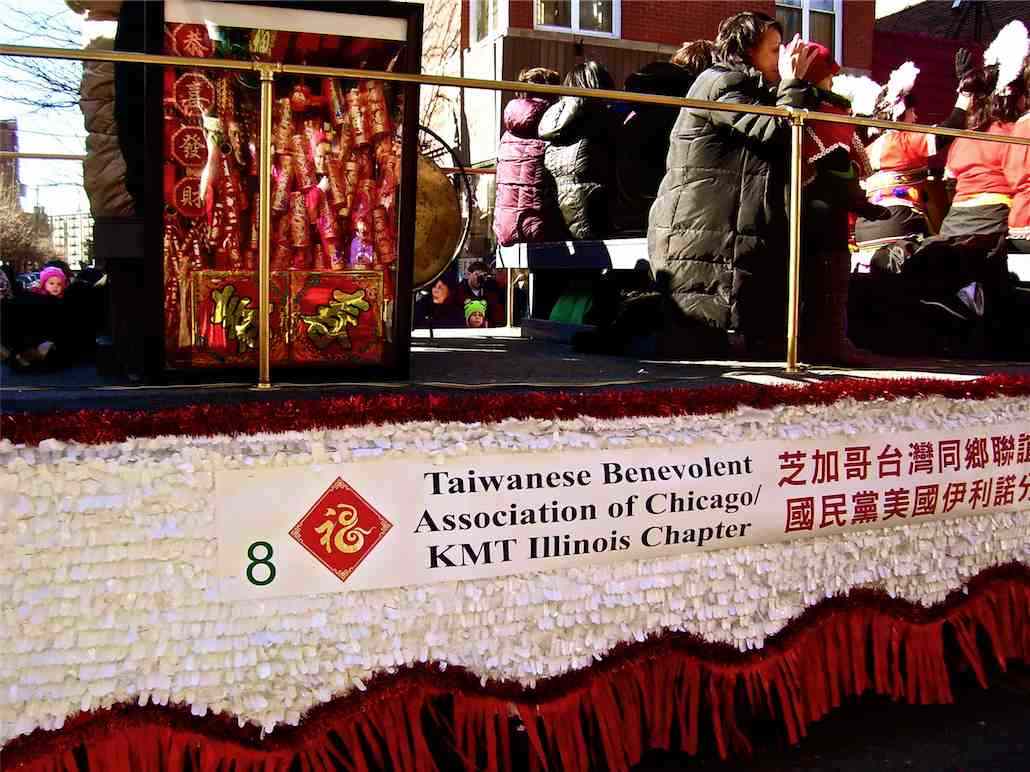
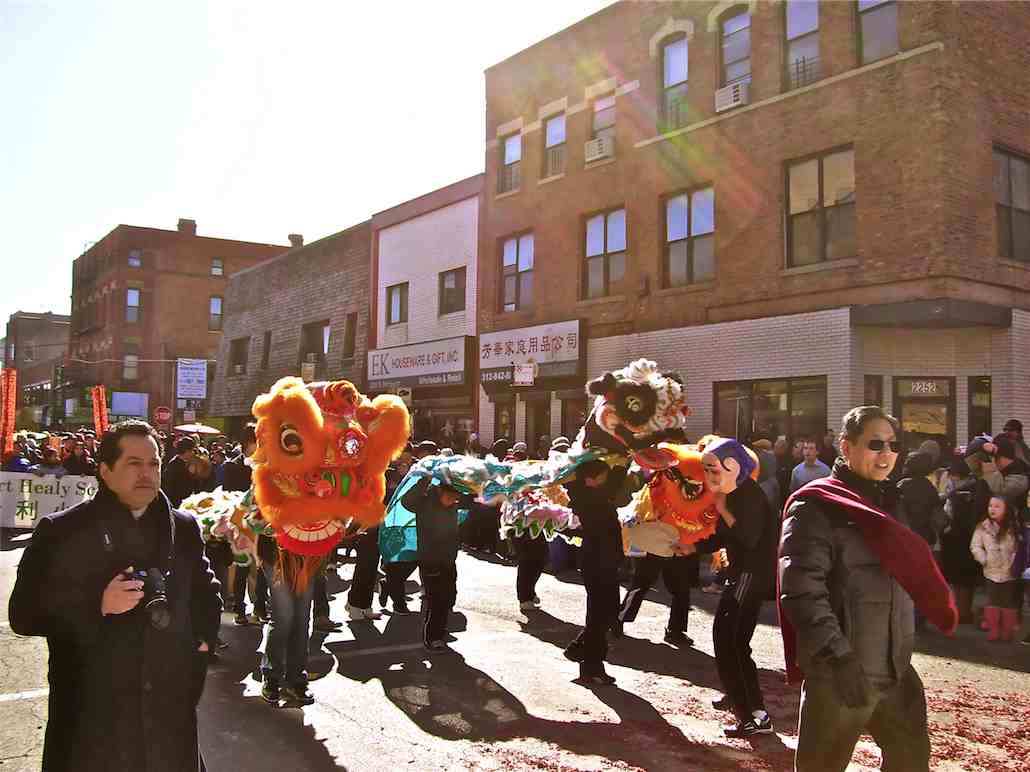
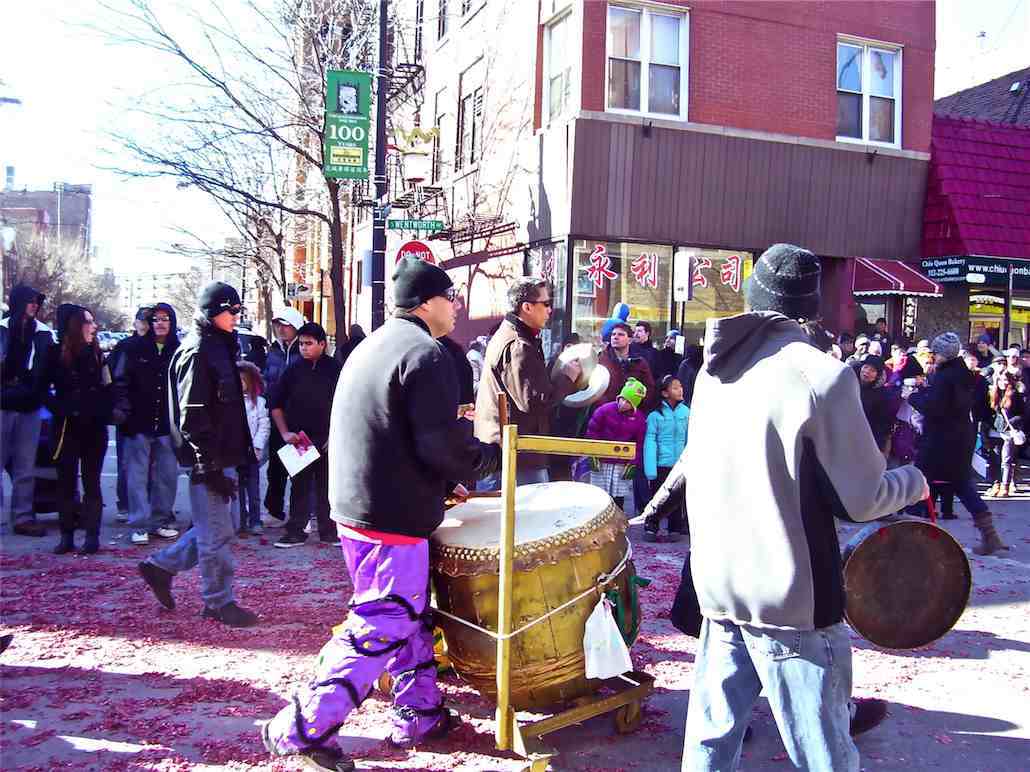
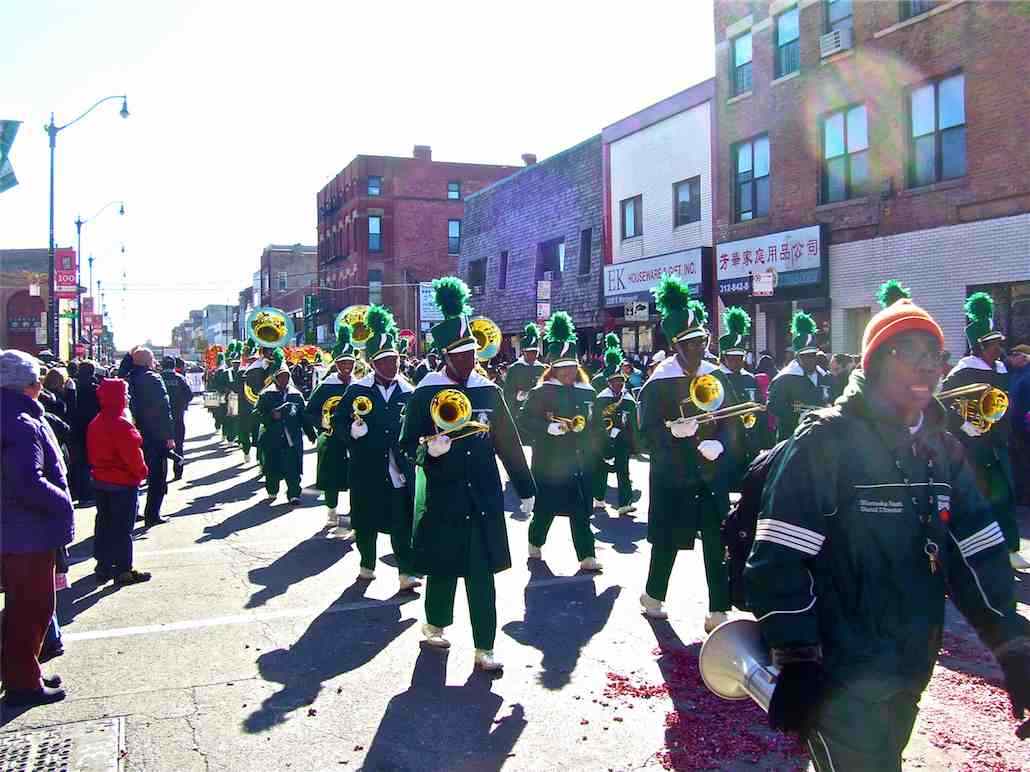 |
|
 |
Furama
Restaurant
2828 S Wentworth Ave
(Between 28th Pl & 29th St)
Chicago, Neighborhood: Chinatown
(312) 225-6888
Monday - March 11th, 2013
Green Dragon Society
Attended
Spring Festival Banquet |
|
The Chinese Lunar New Year Festival,
also known as the Spring Festival, is a busy time, when the numerous
Chinese associations conduct their traditional, yearly Spring Banquets |
| Chicago's Chinatown at Wentworth Avenue and Cermak Road has several
hundred Chinese Associations, each of which will celebrate the Lunar New
Year at their own banquet dinner, sometime within the Festival period.
Throughout the Lunar Festival many Chinese will attend several such
banquets, as they are usually members or friends of multiple associations.
This event closes out the extended Chinese Lunar New Year Festival,
because the Chinese Lee Association Spring Festival Banquet is held on
the last day of the first lunar month, which is a New Moon. The Chinese
Lee Association Banquet is attended by members bearing the 'Lee' surname and
their invited guests. Tables of ten seats are purchased by Lee
Association members and tickets are offered for sale within a tightly
knit social group.
Over 500 people attended the Banquet at the impressively decorated
Furama Restaurant. The Chinese Tao Association membership provided the
orchestra, composed of ancient Chinese musical instruments, sprinkled
with a few modern. Chinese Lee Association representatives from all over
the country traveled to Chicago to attend the dinner. Many prominent
members of the Chinese community in Chicago were present. An 11 course
dinner, traditional Chinese entrees, were served over a two hour time
frame; while guests spoke, honorariums were presented (mostly in
Cantonese), and entertainment was conducted, both classical and modern. |
|
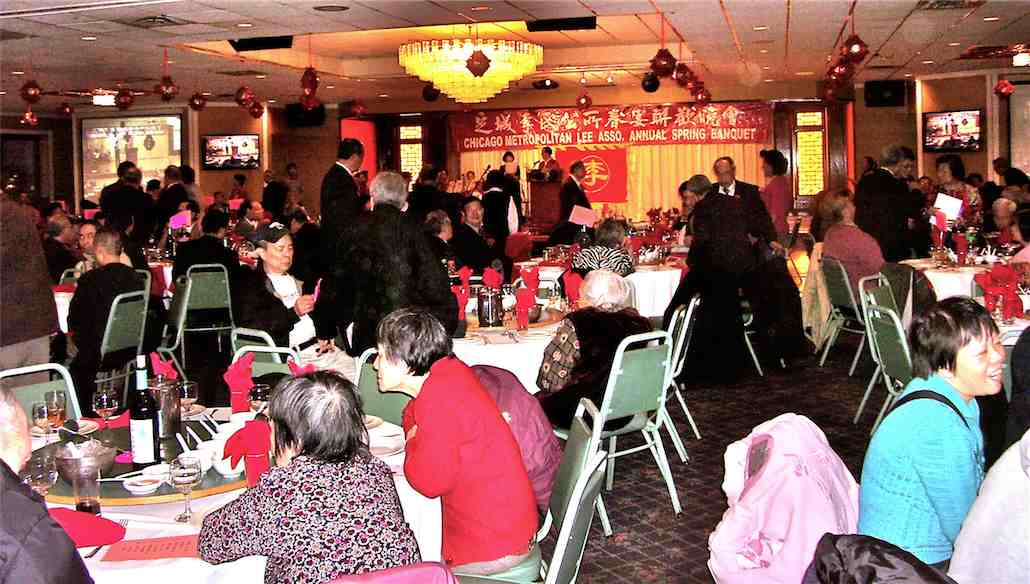
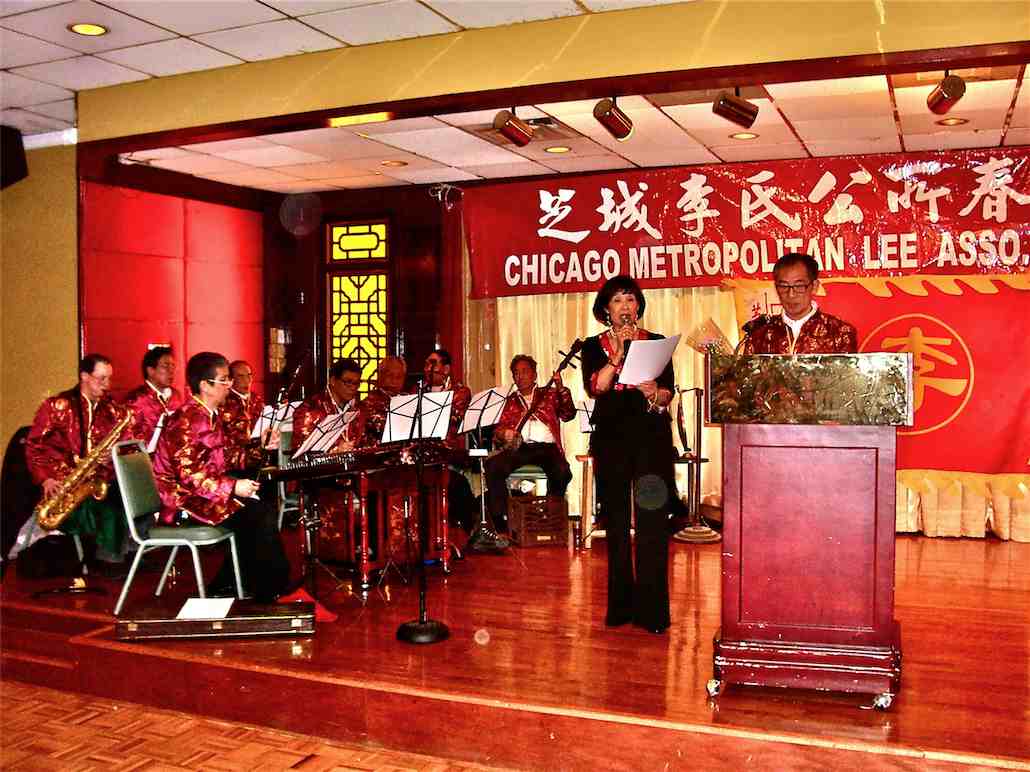
|
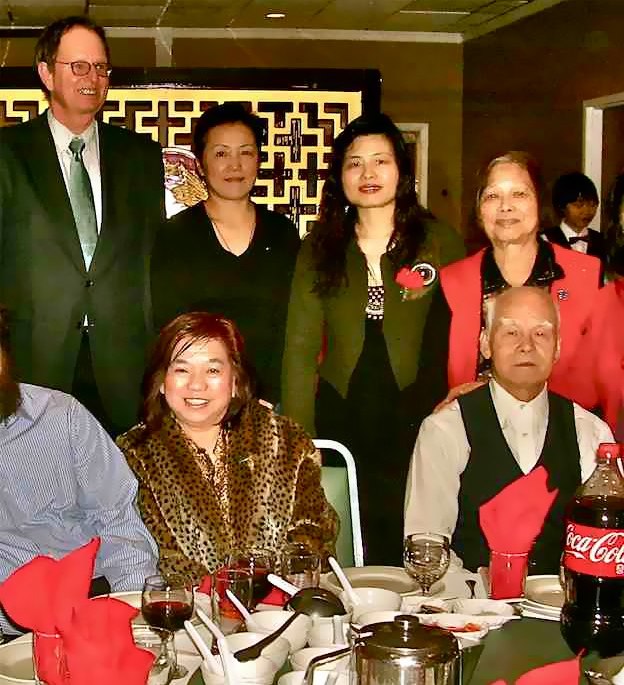 |
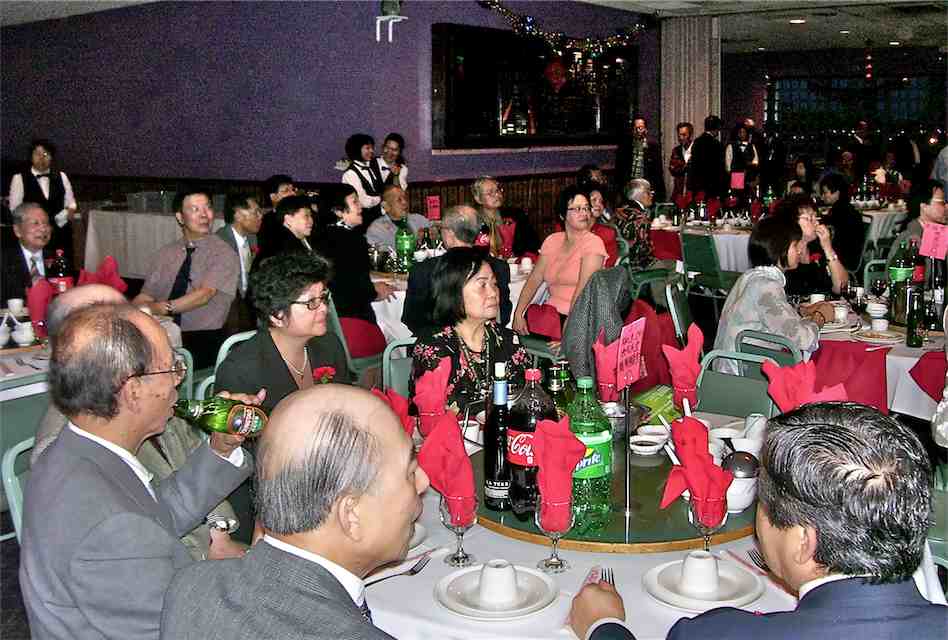 |
|
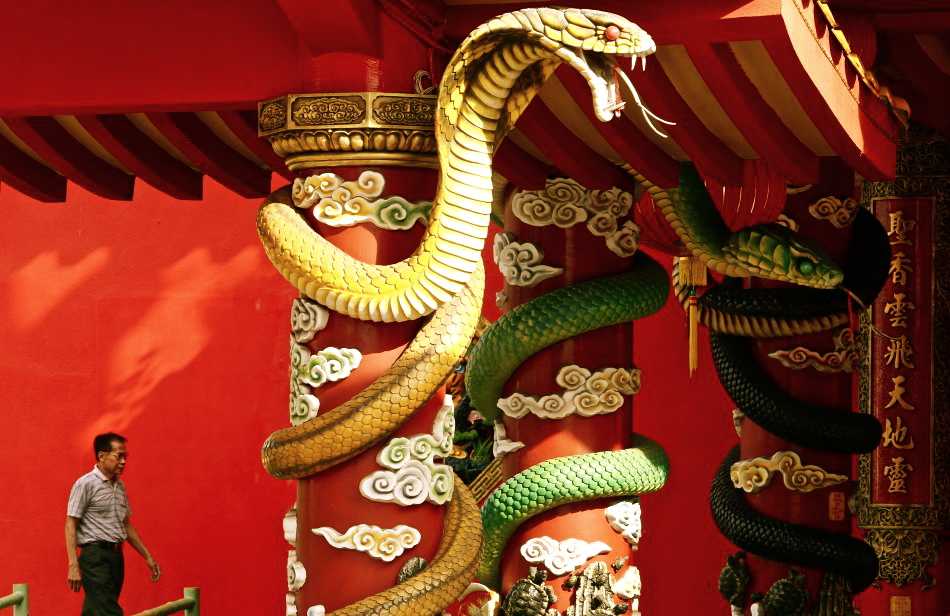 |
|
|
 |
 |
|
Wong Family - Annual Dinner
Monday - April 1st, 2013
Furama Restaurant
2828 S. Wentworth Ave
Chicago, Chinatown
(312) 225-6888
Green Dragon Society
Members Attended
The yearly "Wong Association Dinner"
attended by 1000 member families, and their invited friends and guests |
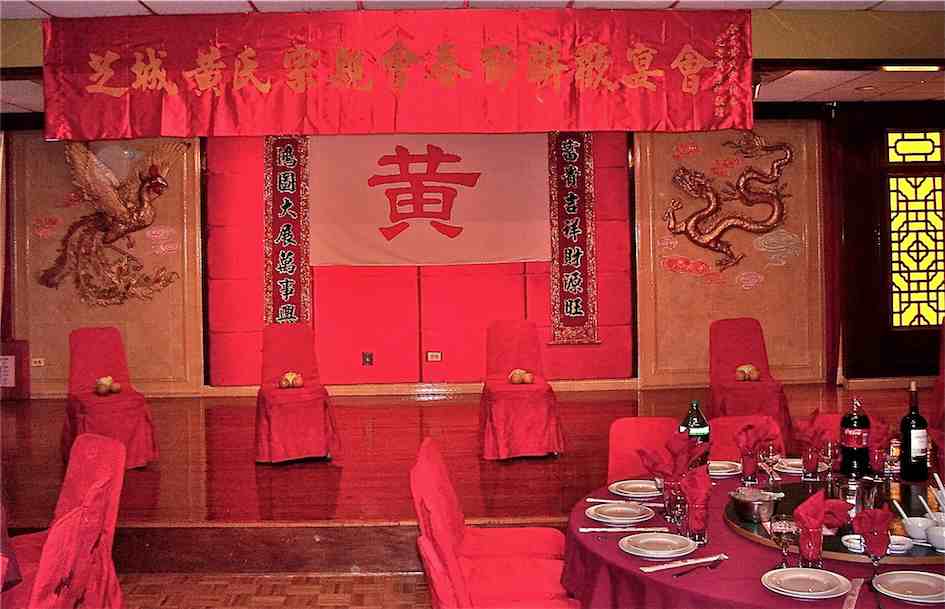 |
| The 'Wong' family is very large in Chicago's Chinatown at Wentworth
Ave. and Cermak Road, and the Chinese Wong Association is
powerful and respected. The Furama Restaurant itself is a Wong family
business. The Chinese founding father of the Chicago Green Dragon
Society was a wise man named Wong Lee, and therefore the 'Wong Family Association'
has special meaning and connection with the Green Dragon Society, both
historically and still today, as some current Green Dragon fraternal
members have married into the Wong Family line.
A really big Five Lions
Dance Show was performed with enthusiasm by the youthful
practitioners of the Chinese Wong Association - Lion Dance Team,
under the expert direction of Tommy Wong, Master of Ceremony. Much hard
work and fun, over several years, has gone into teaching the Chinese
youth this important cultural art form.
The Wong Family, from all around the country, sent representatives
to Chicago. Also, many diplomatic dignitaries, political figures, and
pillars of the Chinese community were present. The twelve course Chinese
specialty entrees were continuously served for hours, during which time
speeches were made, awards and recognitions officiated, and
entertainment performed almost non-stop. |
|
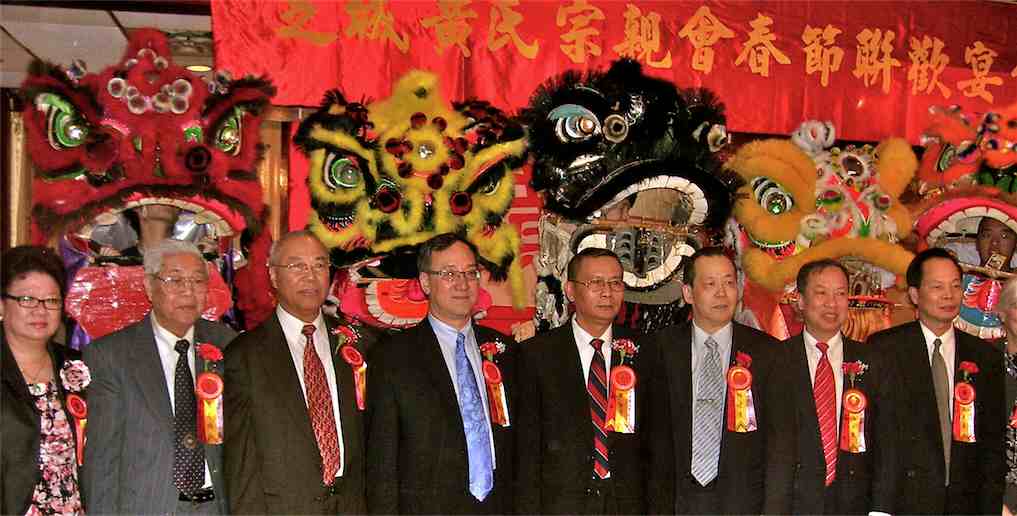 |
|
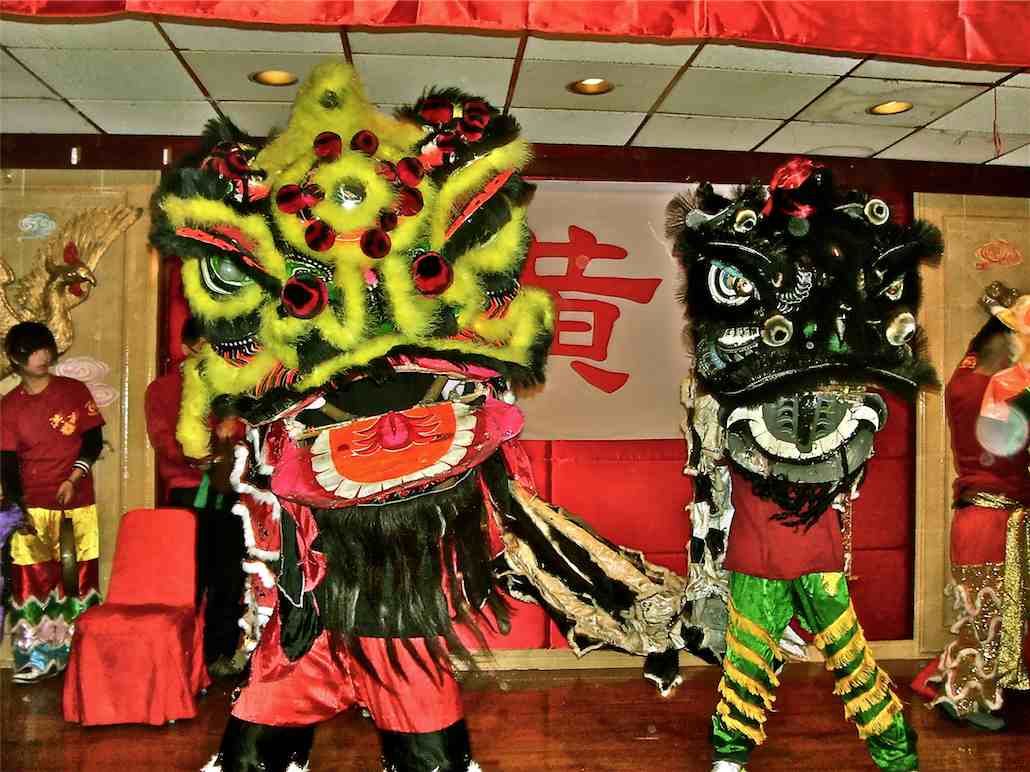
Lion Dancers
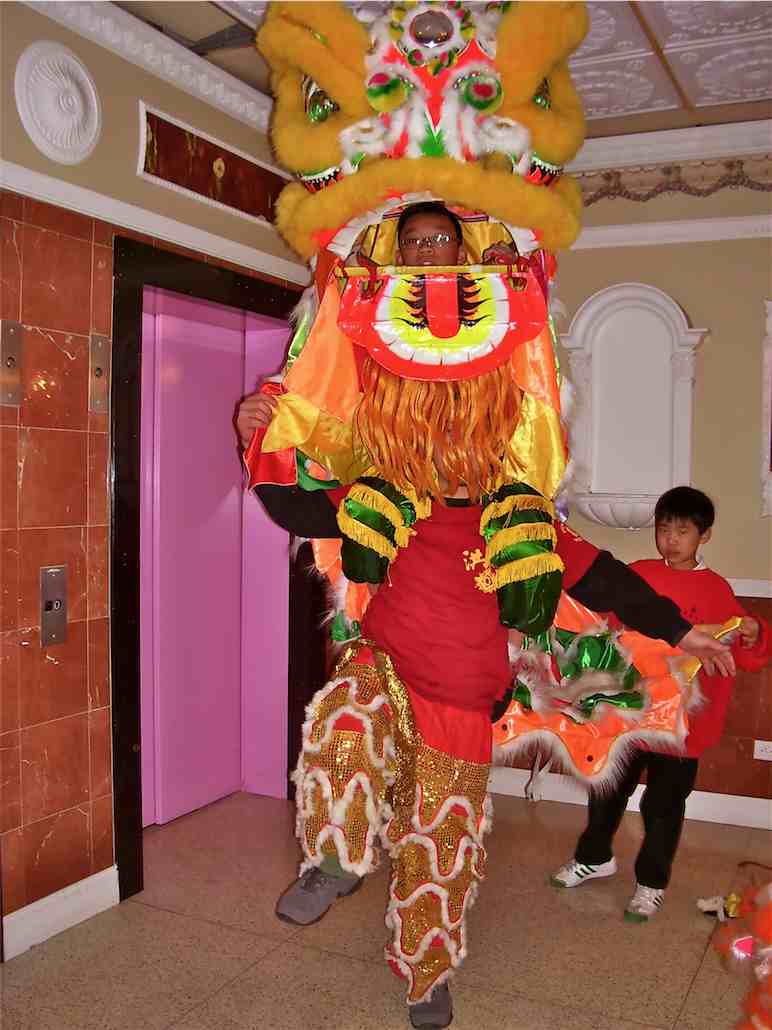
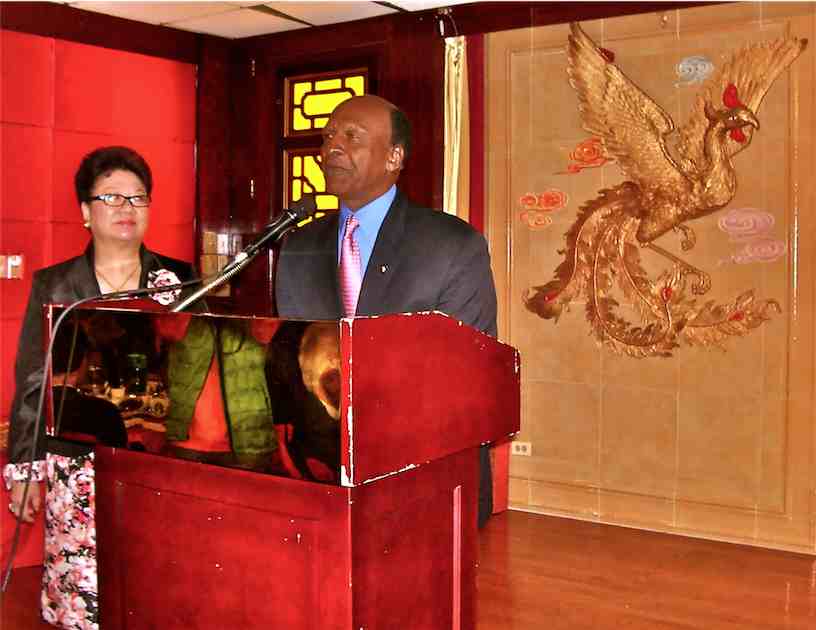
Illinois Secretary of State Jesse
White
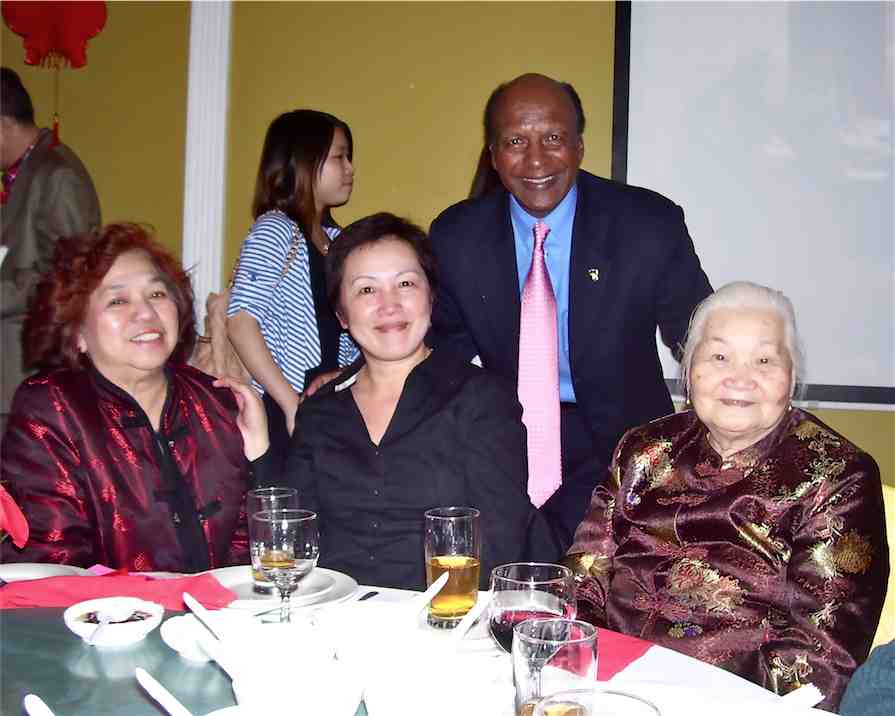
Jesse White with the Ladies
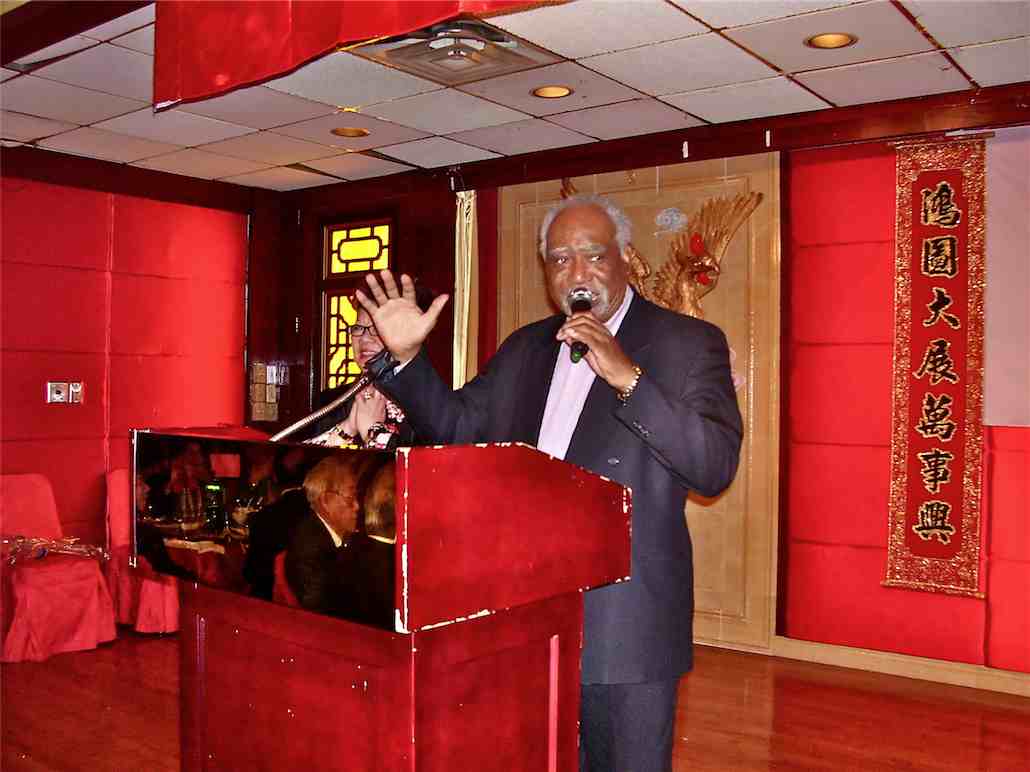
U.S. Congressman Danny K. Davis
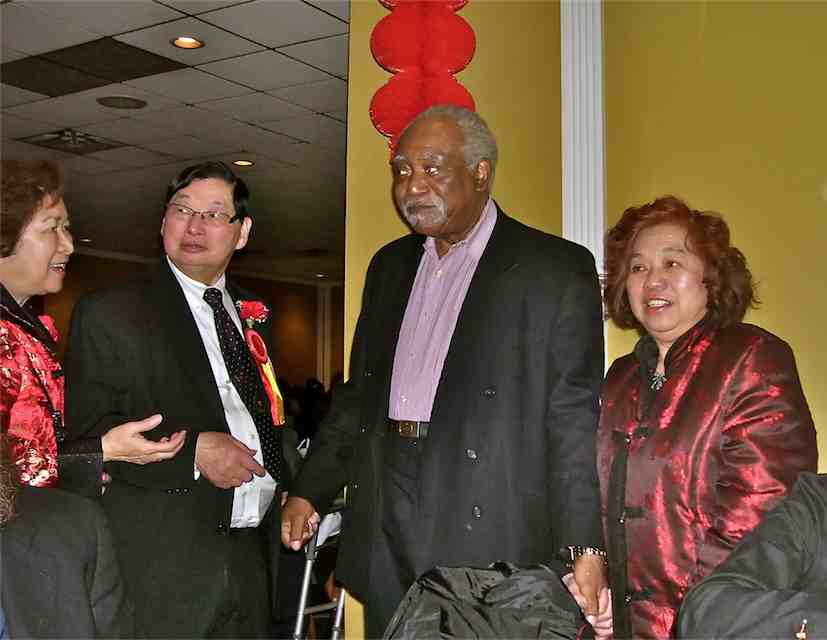
Danny Davis at the Green Dragon
Table |
|
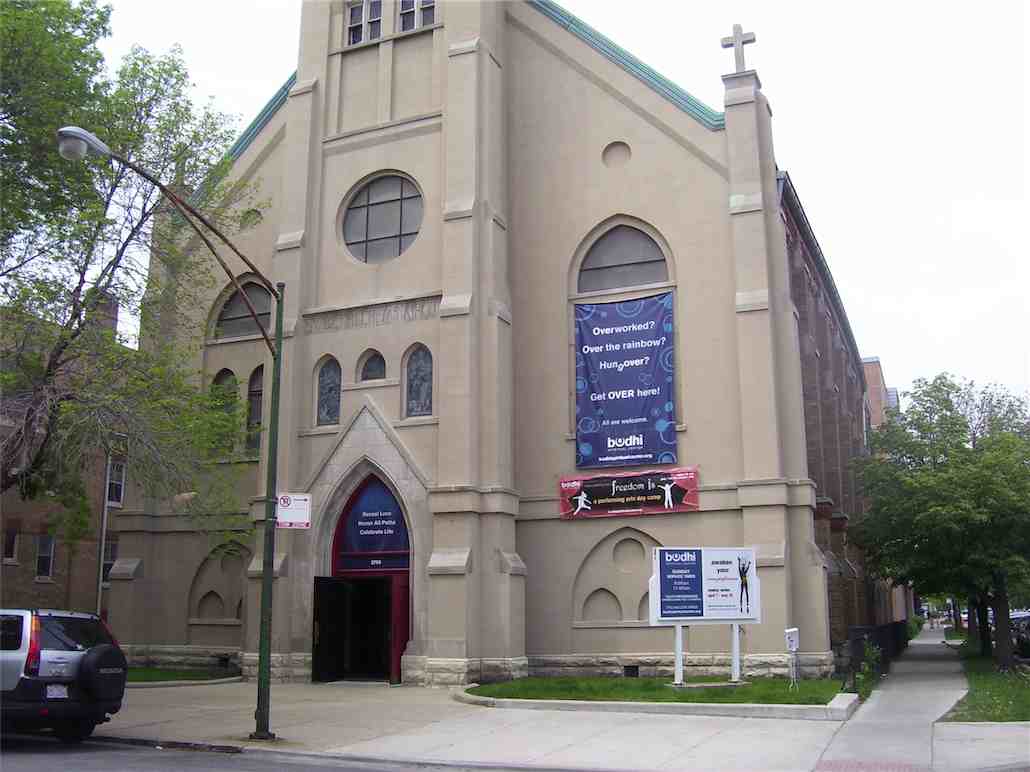 |
Bodhi
Spiritual Center
A Transdenominational Spiritual Community
2746 North Magnolia Ave
Chicago, IL 60614
773 248-5683
office@bodhispiritualcenter.org
Sunday - May 26th, 2013
Green Dragon Society
Members & Students
Attended Services
Bodhi Spiritual Center offers a wide
variety of transformational classes,
workshops and events that inspire creativity, self-awareness,
and spiritual growth . . . |
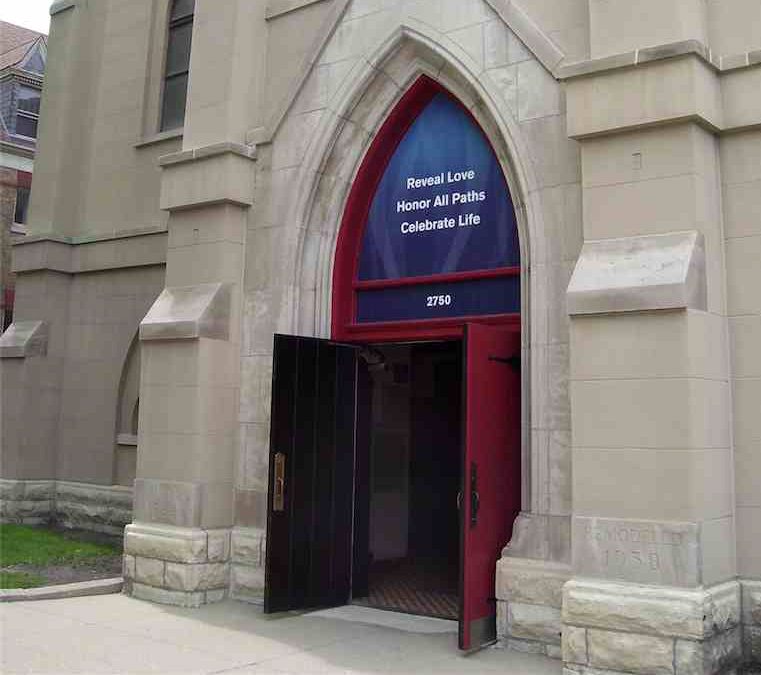 |
Bodhi Center - We Believe
We believe that we live in an abundant, unlimited universe and that
within us lies all the Wisdom, Love and Power needed to create full,
joyous, prosperous lives.
We reveal the Truth that we are all one with God, free and powerful
beyond imagination and capable of changing the world
through changing our minds.
We believe that we co-create with God, that our thoughts create our
realities. When we align our thoughts with the perfection of God, we can
heal sickness, break free from lack and limitation, and choose a way of
living that is joy-filled and powerful.
Designed to empower you with the tools to create change, fulfill your
life purpose, reveal the glory of God within you, and provide a safe
place for authentic self-expression.
Many offerings are experiential, using guided meditations, group
exercises, and opportunities to share one's own journey of discovery
with a group of supportive individuals on the same path to the Truth.
|
|
Crown Chakra Sermon
& Meditation Session |
The Sunday service's theme was the last of a seven week
series covering in detail each of the major energy Chakras within the
human body. The culmination of this subject is the 7th, the highest, the
"Crown Chakra", located at the very top of the head. It is transcendent,
as it is of the body and also rooted in Heaven above.
Therefore, the sermon concerned the reality and perception of Oneness as
opposed to the illusion of duality. This is not of course an uncommon
theme in Buddhism and many other mystical or philosophical paths.
Contrary to popular belief, there is indeed a common metaphysical thread
that runs through all the religions. And that is the notion of oneness
of name and form that permeates our world. It is described as the Great
One in the Dead Sea Scrolls and as God the Father in Christianity. It is
referred to as Sunyata in Buddhism and as Brahman in Hindu Vedanta. This
concept of oneness occurs in so many different locations in the holy
books and verbal transmissions of all the religions of the world, and it
can be subjectively realized. |
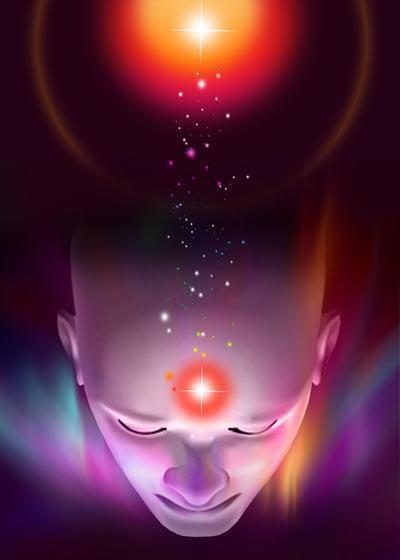 |
|
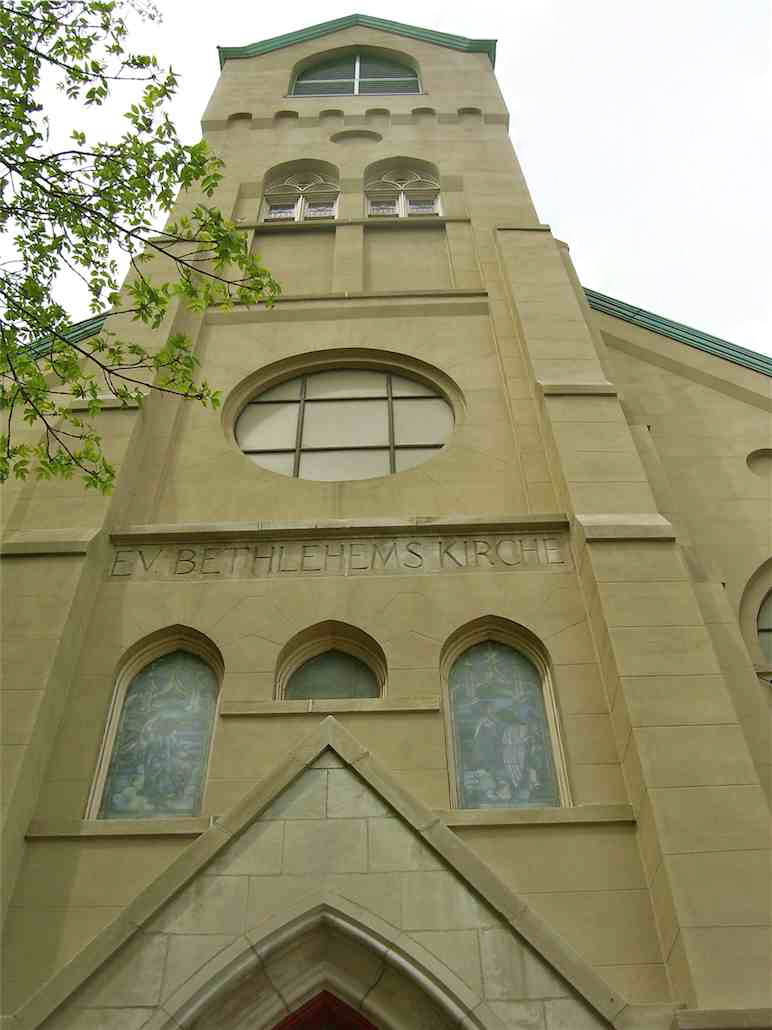
The Church Building style is Romanesque Revival
Johannes Kircher was the founding pastor of Bethlehem
Evangelical Church in December, 1883, in what was then the town of Lake
View. Rev. Kircher was at that time a recent seminary graduate. He
served no other Church, remaining pastor of Bethlehem until his death in
1915. The name chose for the Church was Deutsche Evangelische Bethlehems
Gemeinde (or, German Evangelical Bethlehem Congregation). In 1884-85, an
elegant Church building was erected at the southwest corner of Diversey
and Magnolia Avenue, an opulent testimony to the upper-middle-class
lifestyle of the Lake View German population. |
|
Most of the powerful techniques used in this
initiation are secret. Men’s initiation rituals have been a well kept
secret for thousands of years, because to reveal these secrets is to
compromise the integrity and power of these rituals forever. |
|
Leaders wanted. Men willing to step through fear
and into the challenge of their lives.
The ManKind Project flies in the face of rigid stereotypes about the
"Sensitive New Age Man" AND the "Macho Man".
We ask men to go right up to the edge - and beyond.
|
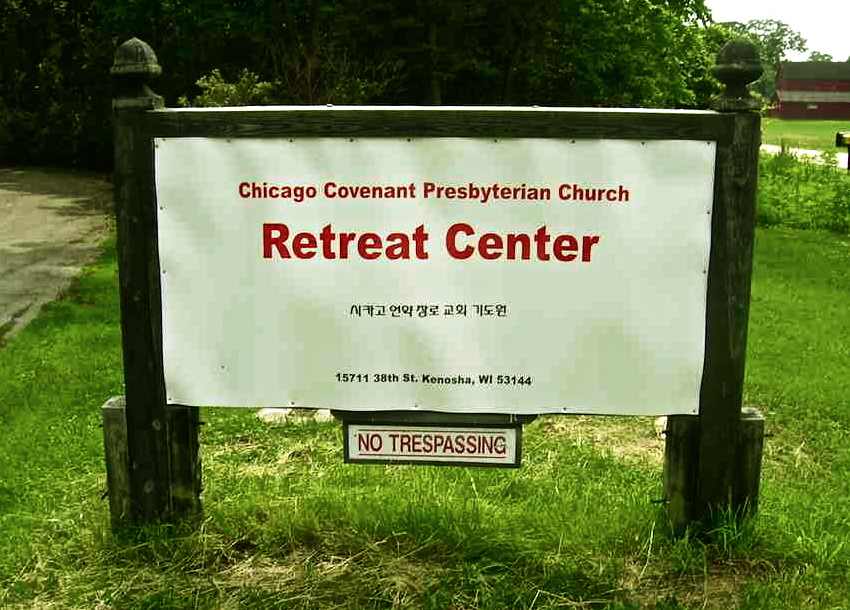 |
New Warrior Training Adventure
The greater the challenge, the greater the reward
The New Warrior initiation is a three day weekend
workshop that empowers men to reclaim their masculinity and their lives
through a number of powerful spiritual journeys and rituals. This
training is unburdened by religious or political dogma, yet deeply
connected to the spiritual foundations of what it means to be a man.
This training has positively affected the lives of thousands of men.
Over 50,000 men worldwide have entered this Warrior Brotherhood.
Friday - June 21st, 2013
Summer Solstice Weekend
Green Dragon Society
Members Attended
As
Both Mentors and Candidates for Membership |
|
The techniques are drawn from both ancient
primitive cultures and modern day psychological understanding.
It has been said, "To conquer others is to be strong, but to conquer
oneself is to be truly powerful."
"The Tiger must turn and behold his own fierce face"
The 'True Warrior' is a man who resolves his inner conflict and turmoil. |
|
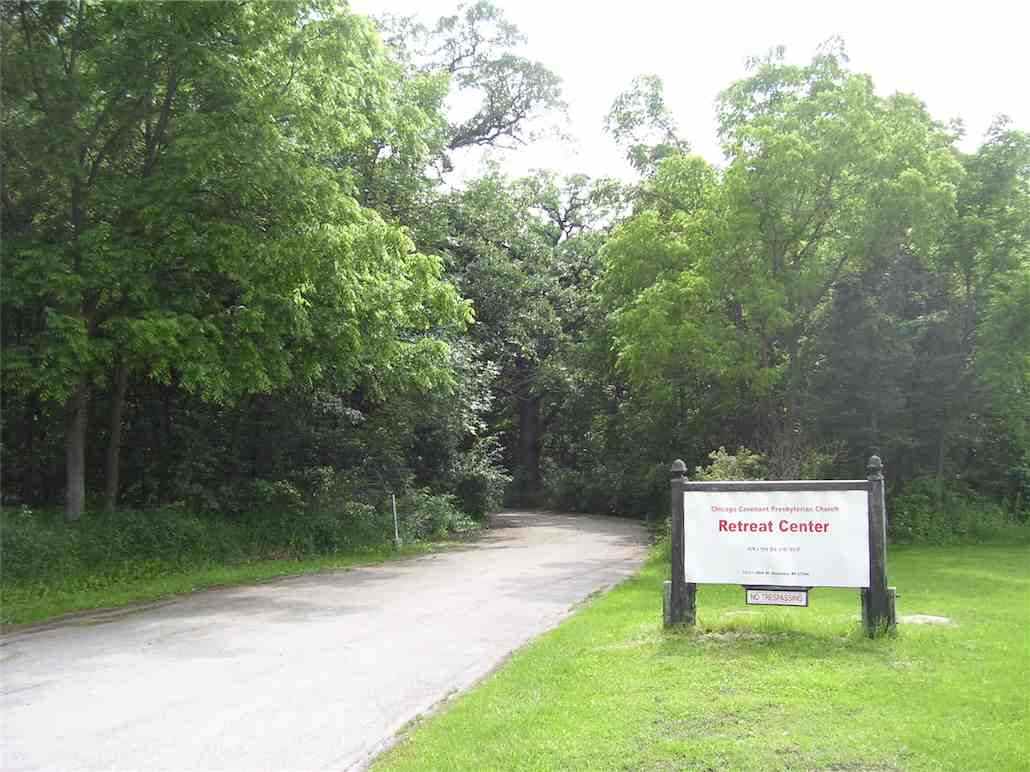
Camp Canaan is located west of
Kenosha, Wisconsin |
|
Punjabi Dhabha Restaurant
2525 W Devon Ave
Chicago, IL 60659
(Between - Campbell Ave & Maplewood Ave)
Phone: (773) 262-2080
Monday - June 24th, 2013
Green Dragon Society
Members Attended
"New Warriors" Victory Celebration |
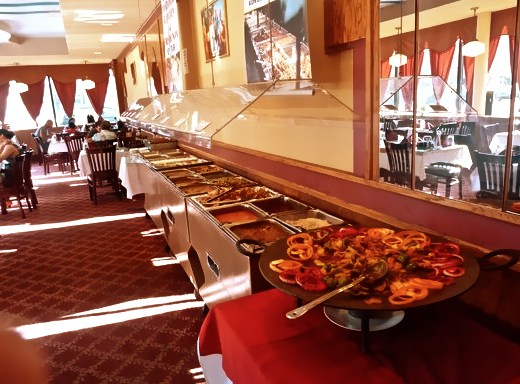 |
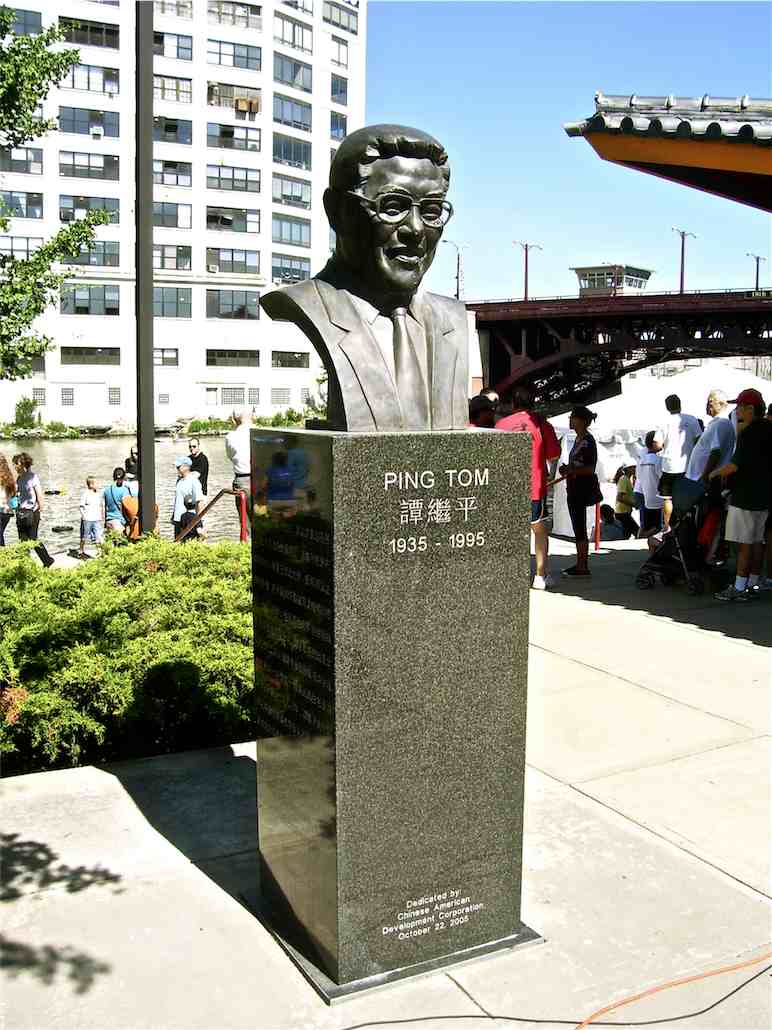 Ping Tom Memorial |
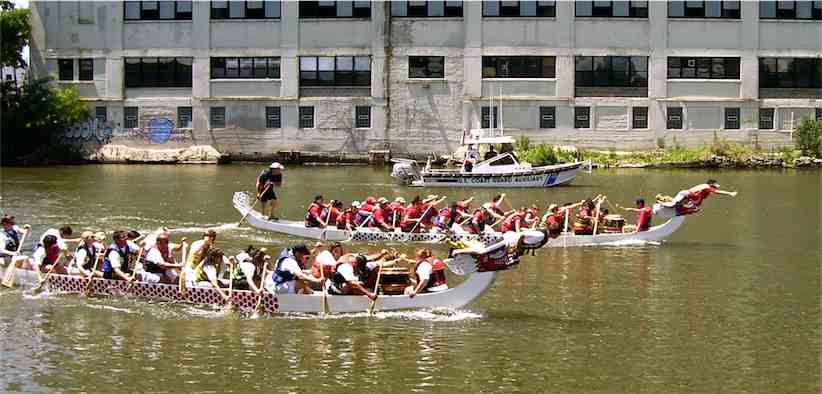
Chinese Dragon Boat Festival
13th Annual Dragon Boat Races
at
Ping Tom Memorial Park
300 West 19th Street, Chicago
Saturday - July 13th, 2013
Green Dragon Society
Members Attended Festival
Ping Tom was founding president of the Chinatown Chamber
of Commerce,
past president and director of the Chinese American Civic Council,
advisory board member of the Chinese American Service League,
and advisor to U.S. Senators, Illinois Governors and Chicago Mayors. |
|
There were comfortable temperatures with low
humidity on a
beautiful, sunny summer day, for the
Dragon Boat Races in Chicago,
racing along the South Branch of the Chicago River, at the Ping Tom
Memorial Park in Chinatown. Also included on the days schedule in
Chinatown was the 5K & Youth Run early in the morning, and
a seven piece Chinese Traditional Orchestral Concert at Chinatown
Square, in the afternoon. |
|
Legends of the Dragon Boat Festival
are told differently depending on where you are in China. Dragons
are powerful and full of good luck, so the Dragon boat races spread good
luck.
The Dragon Boat Festival is a lunar holiday, occurring on the fifth day
of the fifth lunar month. In China, this year, it was officially
celebrated on Wednesday, June 12, 2013. But the Dragon Boat Festival is
now celebrated around the world on varying dates. Dragon Boat Festivals
are held from February through October. There are over forty Dragon Boat
Festivals in the US and Canada alone.
The Dragon Boat Festival is highlighted by the dragon boat races, in
which competing teams drive their boats forward rowing to the rhythm of
pounding drums. This lively and colorful tradition has been held
annually for more than 2,000 years. The boat races are a traditional
custom which emulates the historic attempt to rescue the patriotic
poet Chu Yuan. Chu Yuan drowned on the fifth day of the fifth lunar
month in 277 B.C.
A Dragon Boat is a human-powered boat or paddle boat that is
traditionally made of teak wood to various designs and sizes. They
usually have brightly decorated designs, painted traditionally green,
red, yellow, white, and black, and range anywhere from 40 to 100 feet in
length, with the front end shaped like open-mouthed dragons, and the
back end with a scaly tail. It can have up to 80 rowers to power the
boat, depending on it's length. The drummer is the heart of the
Dragon. The course is 500 to 1300 Meters long. The first team to grab a
flag at the end of the course wins the race.
A sacred ceremony is performed before any competition in order to “bring
the boat to life” by painting the eyes. It is called "Awakening of the
Dragon" and symbolizes the Dragon's Sleep and the need to now
re-energize its Spirit (Chi).
The celebration is a time for protection from evil and disease for the
rest of the year. It is made so by different practices such as hanging
healthy herbs on the front door, drinking nutritious concoctions, and
displaying portraits of evil's nemesis, Chung Kuei. If one manages to
stand an egg on it's end at exactly 12:00 noon, the following year will
be a lucky one. Xiangbao (fragrant pouches of herbs) are traditionally
tied around the necks of children during the festival. Among adults,
successful warding off of summer illness begins with imbibing a healthy
dose of hsiung huang, a special rice wine. |
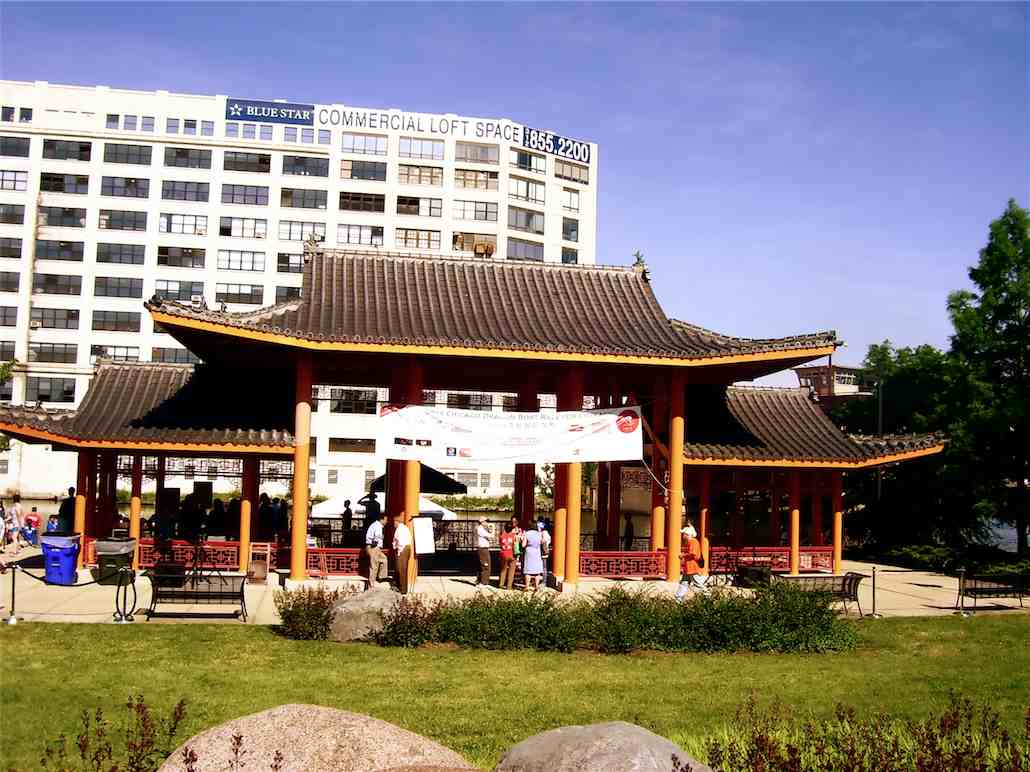
Ping Tom Park - Main Pavillion |
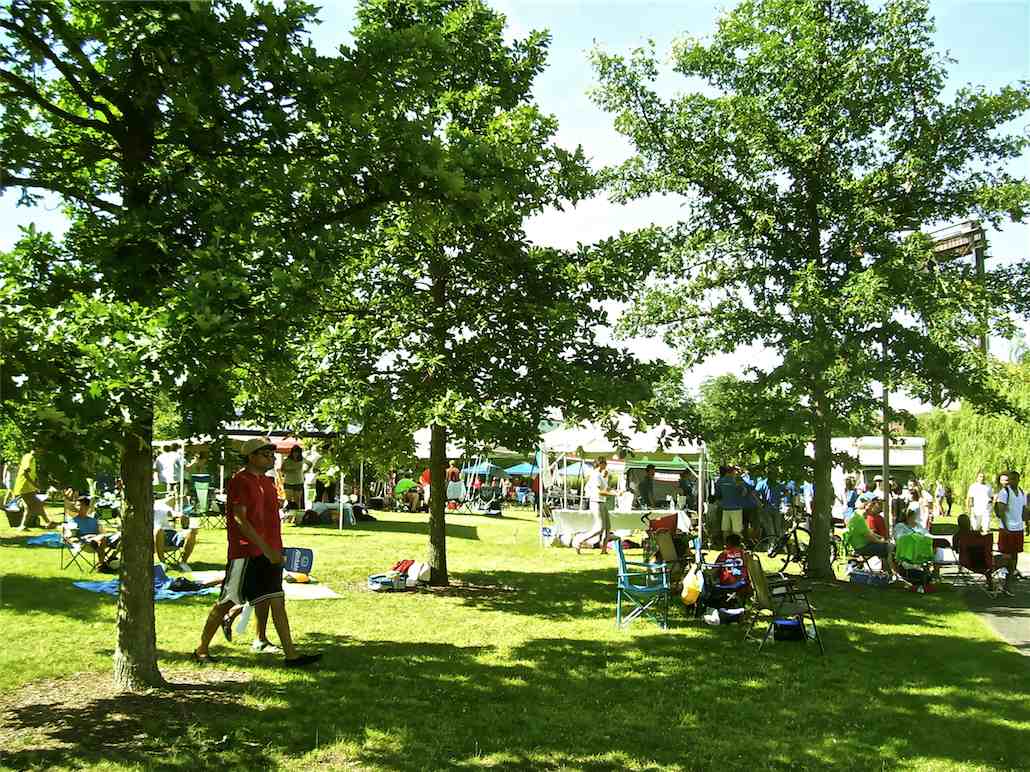
Ping Tom Park - Dragon Race Team Tents |
|
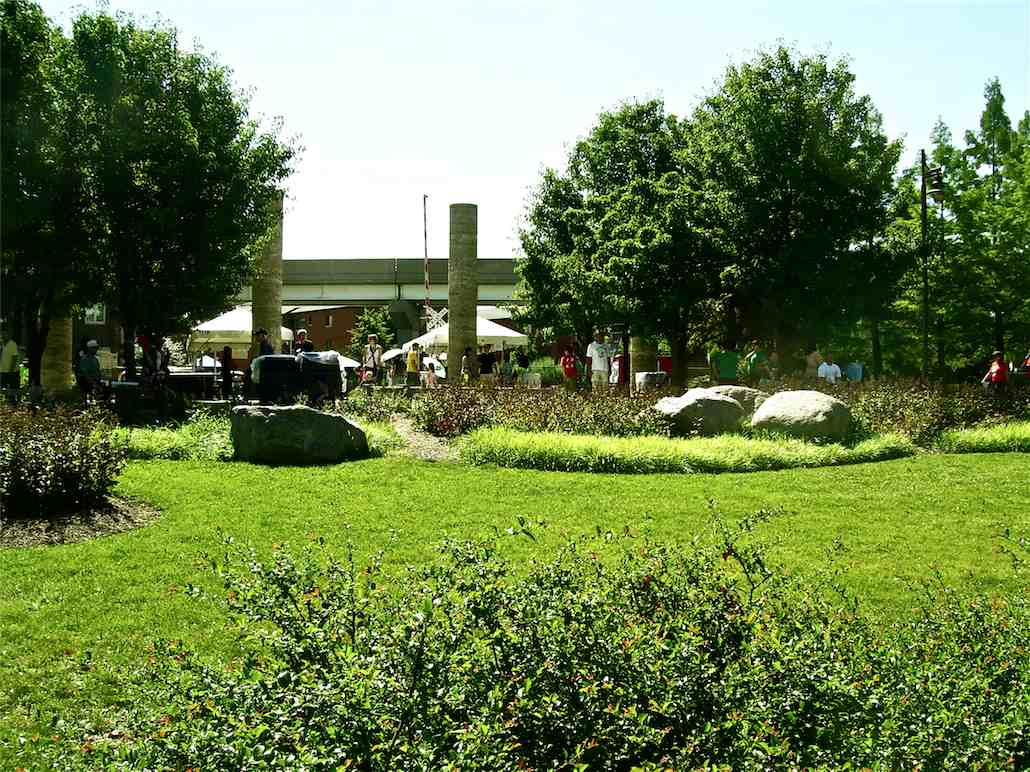
Ping Tom Memorial Park |
|
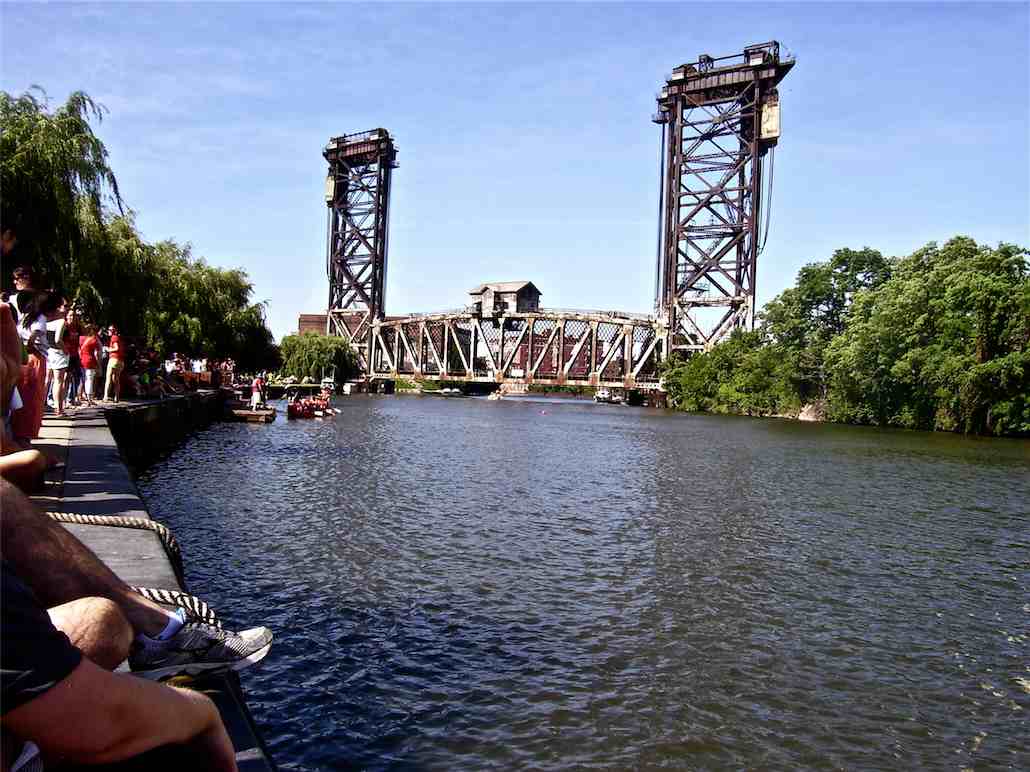
Dragon Boat Race Course |
|
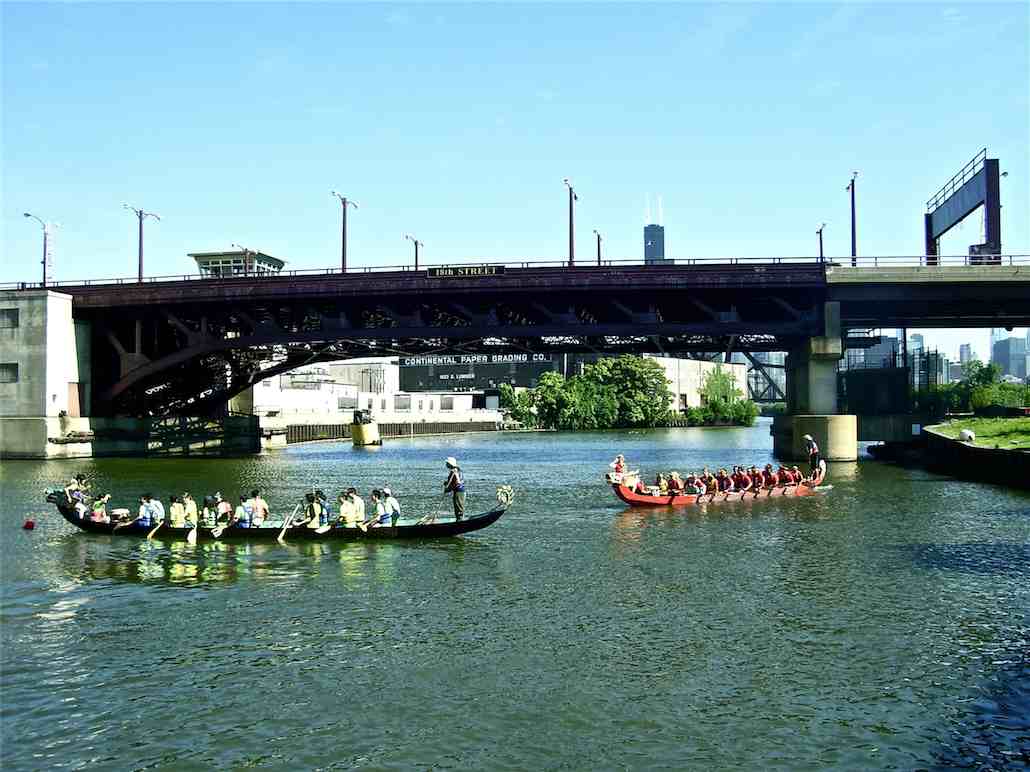
Green Dragon Boat versus Red Dragon Boat
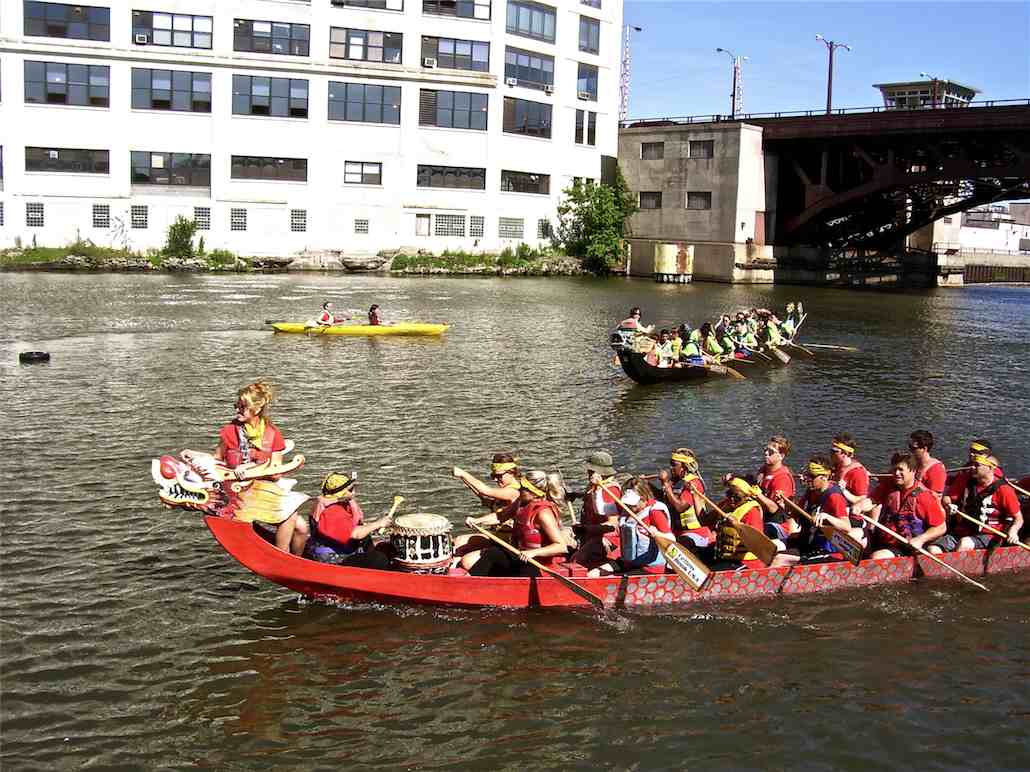
|
|
Ping Tom Park Chinese Pavillion |
|
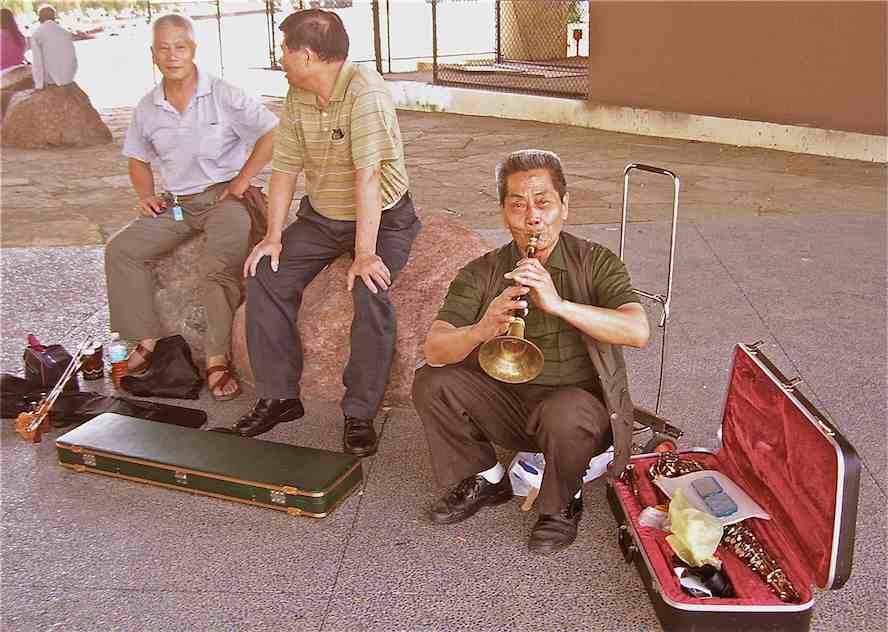
Impromptu Chinese Flute - Under the
Viaduct, 18th Street, at Ping Tom Park |
|
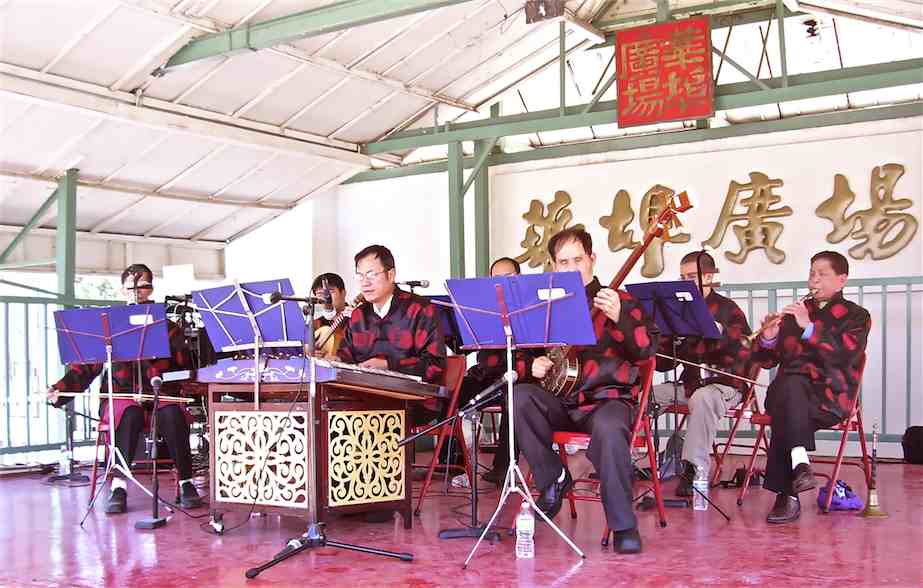
Chinese Orchestral Performance by the Chinese
American Museum of Chicago - Chinatown Square Stage
Presents: Cantonese Band Music
This is the Chinese American Museum of Chicago's first
outdoor concert ever, featuring traditional Chinese string, woodwind,
and percussion instruments
|
|
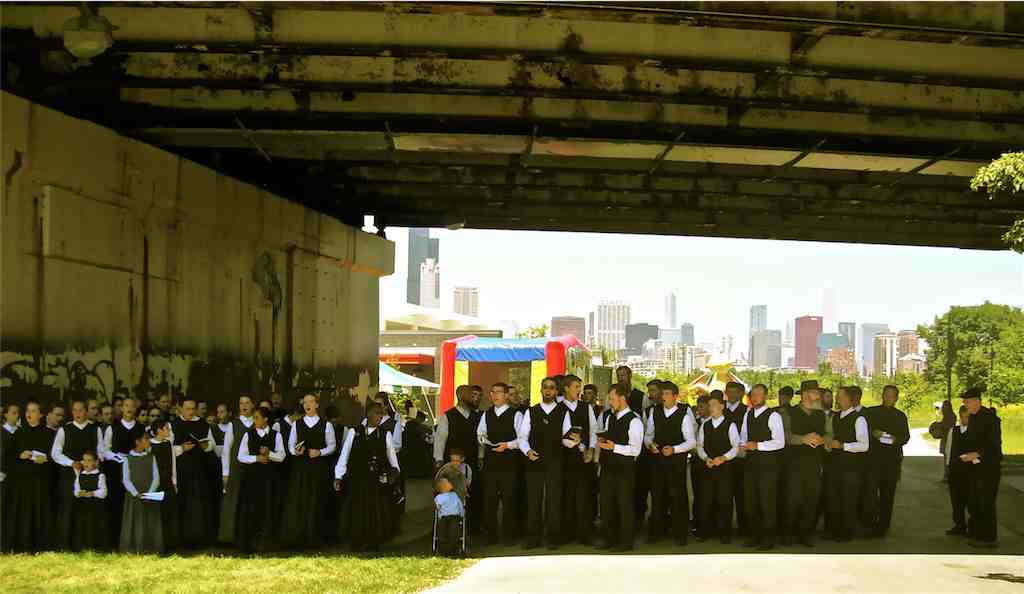
The Church of God from Greenville, Ohio - Under the
Viaduct at Ping Tom Park w/Chicago skyline in background
The congregational assembly gave forth rousing Christian
religious salvation songs. They sang from their hearts. |
|
Chinatown Square Mall |
Archer Avenue - viewing East toward the Lake |
|
5K & Youth Run / Rally and Start Line - Chicago
South Side Chinatown |
|
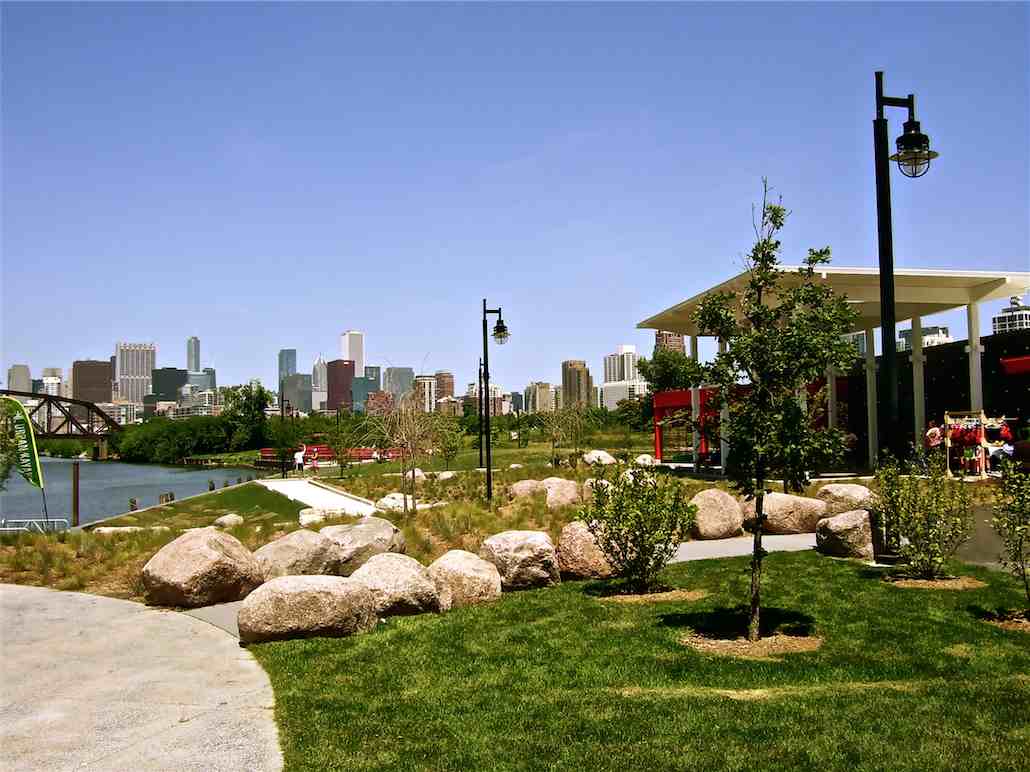
Magnificent Ping Tom Park
- Chicago Skyline |
|
Meztli Martial
Arts Film Fest
In Honor of Bruce Lee |
|
Citlalin Gallery & Theater
2005 South Blue Island
Chicago, Illinois, 60608
&
Meztli
Cultural Organization
Pilsen Neighborhood
Sunday - July 21st, 2013
Green Dragon Society
Members Attended |
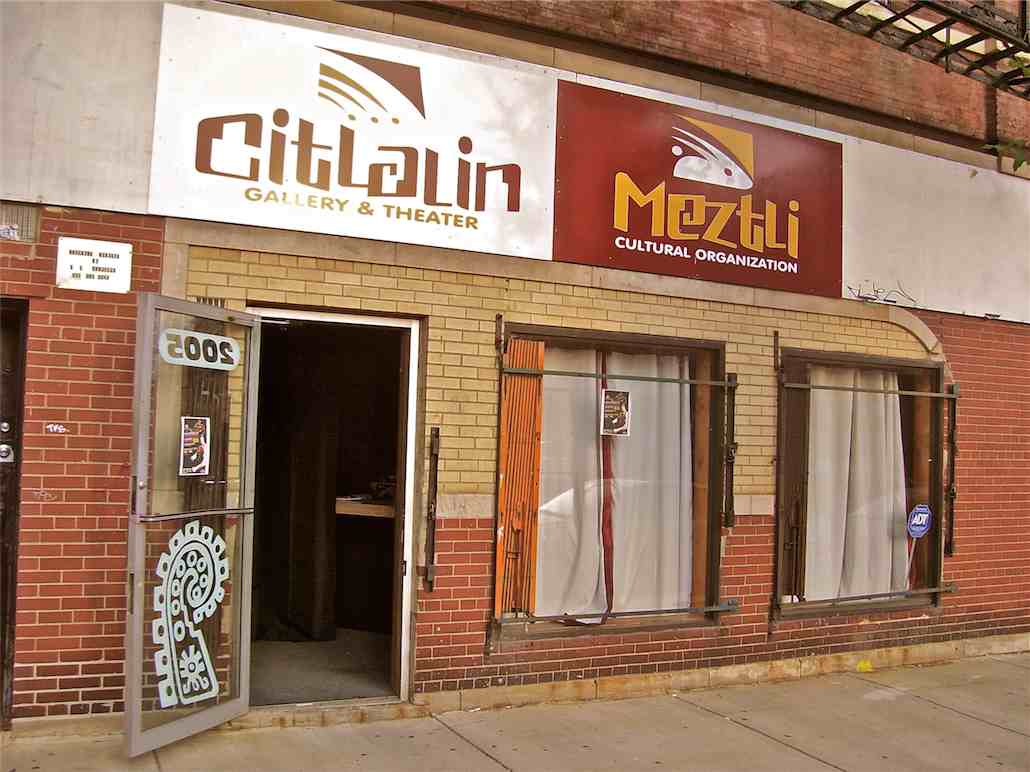 |
Welcome to Meztli - Meztli is a non-profit
art gallery dedicated to the cultivation of art and culture in Pilsen
through charitable, educational, and civic activities. Meztli continues
to partner with local and international film festivals to provide the
community with access to quality film artistry.
Meztli fosters awareness, tolerance, and understanding of all cultures
through visual art, music, dance, theatre, literature, and film. Meztli
provides a unique venue, complete with the technology and resources that
empower artists to express their diverse visions. Meztli supports a
grassroots mission that breaks down borders, utilizing art as a tool for
engaging dialogue. |
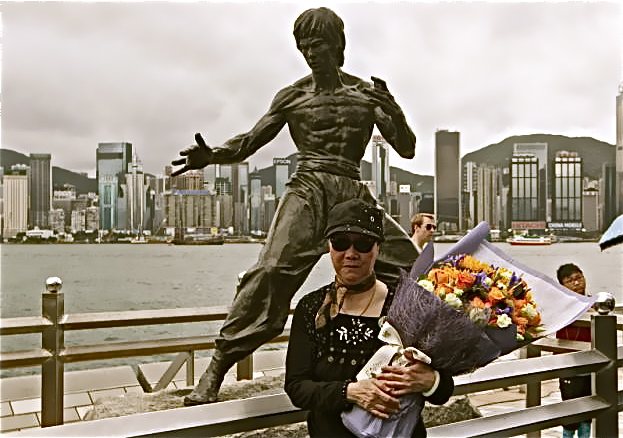
Bruce Lee Statue Hong Kong - w/Older Sister Phoebe Lee |
Bruce Lee was born in the hour
of the Dragon, between 6 and 8 a.m., in the year of the Dragon, on
November 27, 1940, at the Jackson Street Hospital in San Francisco’s
Chinatown. Lee’s full name is written Lee Jun Fan. His stage name in
China was Lee Shao Lung (Little Dragon). Lee received the name "Bruce"
from a nurse at his birthing hospital, and his family never used the
name during his pre-school years.
Lee was a child actor in Hong Kong who later returned to the U.S. and
taught martial arts. He starred in the TV series The Green Hornet
(1966-67) and became a major box office draw in The Chinese Connection,
Fists of Fury and Enter the Dragon.
Only 32, the martial arts star died in Hong Kong on July 20th, 1973. Lee
had suffered from seizures, including one just a month before his death,
but popular urban legends persist that Lee was murdered by Triads, of a
curse on his family, and/or he suffered the delayed reaction from a Dim Mak strike (The Touch Of Death). To add to the folklore a mirror that
was placed on Bruce Lee’s house to ward off evil spirits was blown away
in a typhoon the day before his death. |
|
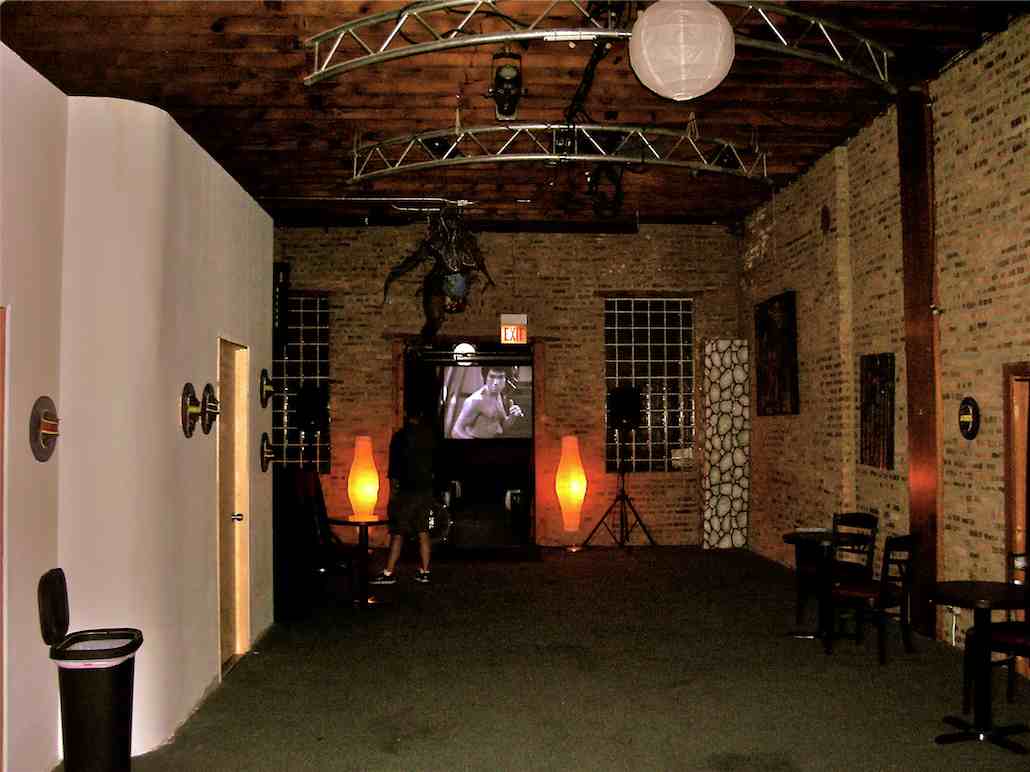
Citlalin Gallery and Theater |
|
Program Schedule
3:00 pm - Introduction to the history of the modern
martial arts/action film genre.
3:15 pm - Film Presentation: "Ip Man One", starring Donnie Yen (2008)
This film portrays the life of Grandmaster Ip Man, who instructed Bruce
Lee in the Art of Wing Chun Gung Fu.
5:00 pm - Internal Martial Arts demonstration.
5:15 pm - Film Presentation: "Return of the Dragon", starring Bruce Lee
(1971)
Gung Fu genius Bruce Lee wrote the script, directed and starred in this
entertaining story of Tang Lung, a modern day immigrant from Hong Kong
who travels to Rome, Italy to help his relatives that are being
intimidated by the local mob boss.
7:00 pm - Intermission
7:15 pm - Film Presentation: "Enter the Dragon", starring Bruce Lee, Jim
Kelly, John Saxon, Ahna Capri (1973)
The first Hollywood produced, big budget Kung Fu film that re-defined
the modern martial arts/action film genre.
9:00 pm - Film Presentation: "Ip Man Two", starring Donnie Yen ( 2010)
10:45 pm - Closing Comments
New "Grandmaster" movie about Ip Man |
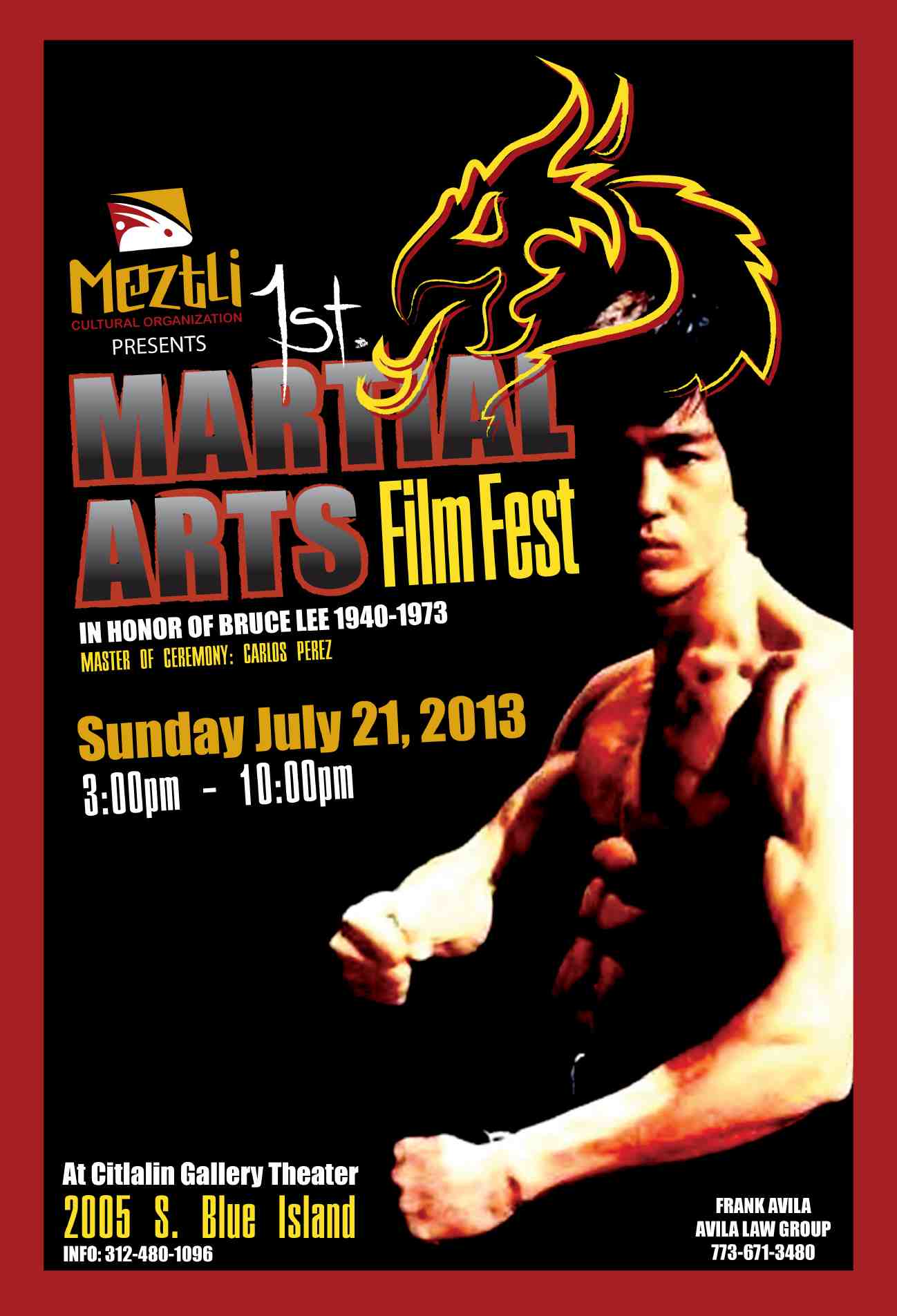 |
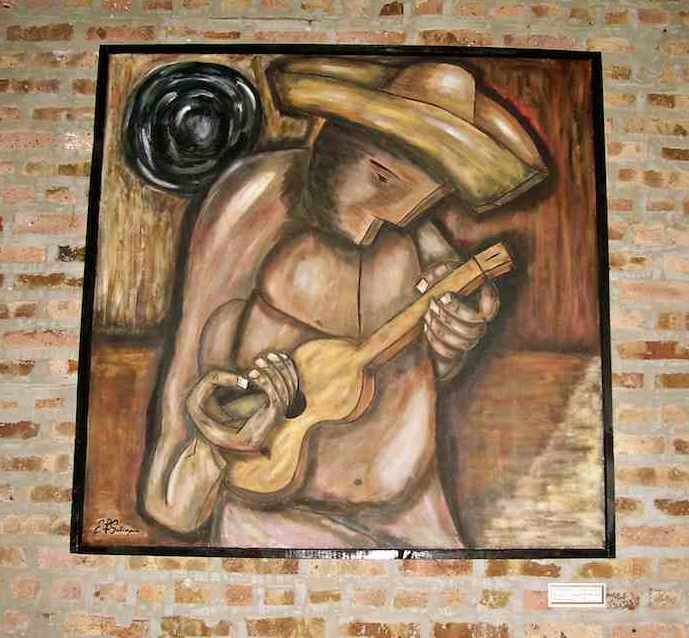 |
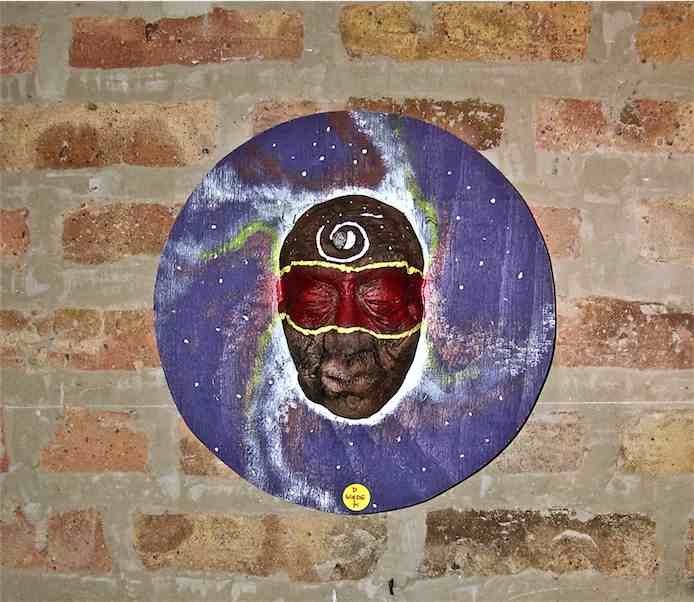 |
|
An ever changing, sometimes
avant-garde, but always eclectic mix of art styles adorn the gallery and
are available for purchase from the proprietor. |
|
Midwest Buddhist Temple - 58th
Annual Ginza Festival |
|
The name Ginza is appropriate for the holiday as it is
named after a district in
Tokyo known for entertainment.
Ginza Holiday at the Midwest Buddhist Temple aims not only to preserve
older Japanese traditions, but also to introduce them to people whose
knowledge of Japanese culture comes from Akira Kurosawa films (no
offense meant to a "Master of Cinema").
"We're trying to show the arts of an older Japan," says festival
chairman Al Sora. Like many other sansei (3rd-generation Japanese), Sora
does not speak the language, but says he sees the Ginza Holiday as a way
to keep Japanese culture alive. |
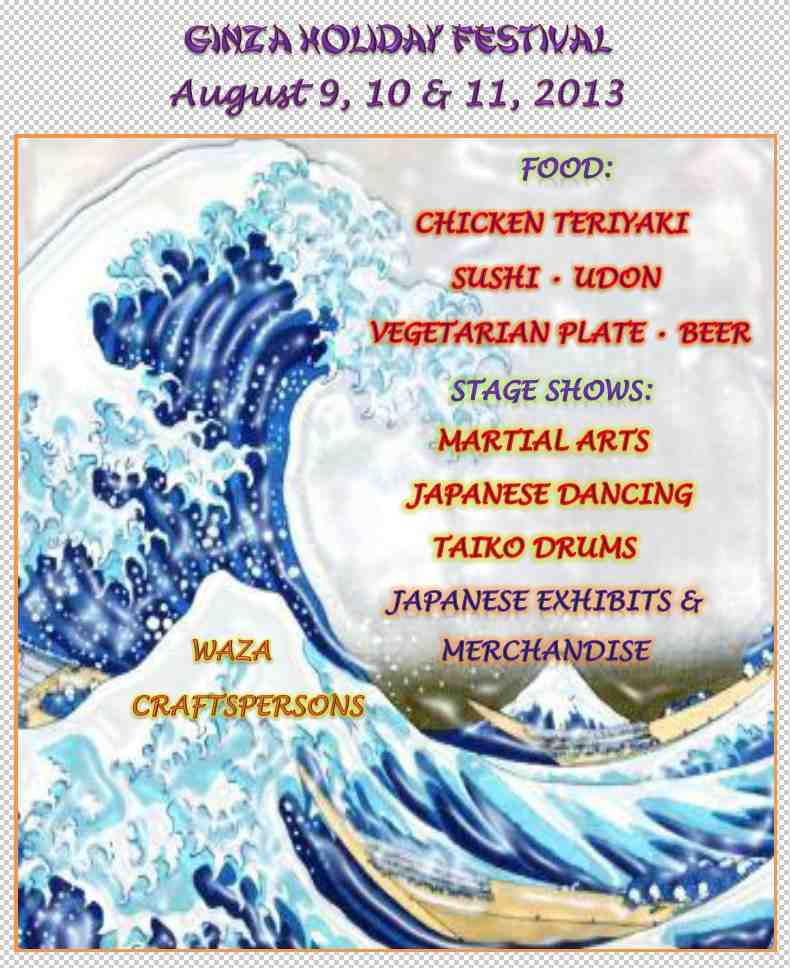 |
Midwest
Buddhist Temple
435 West Menomonee Street
In Historic Old Town - Chicago
Founded on July 10, 1944
Phone 312 943-7801
web site:
MidwestBuddhistTemple.org
58th Annual Ginza Festival
August 9th, 10th, 11th - 2013
(Always the second weekend in August)
Friday - August 9th, 2013
Green Dragon Society
Members Attended Festival
The Midwest Buddhist Temple is a temple of Buddha
Dharma and the way of Nembutsu, which is a realization of Oneness of
Life in the Infinite Compassion and Wisdom of the Amida Buddha. The
temple is affiliated with the Buddhist Churches of America,
headquartered in San Francisco, rooted in the Nishi Hongwcanji, Kyoto,
Japan.
Jodo Shinshu was founded in Japan by Shinran Shonin (1173-1262). It was
Shinran Shonin who brought the Buddhist teachings down from the
monastery level to the ordinary man who could practice it with his
family. |
| The weather in Chicago this year has been superb and the Ginza
Holiday Fest was no exception, even the rain held off till after the
event ended. The Green Dragon Society enjoyed browsing for artwork and
sampling the food, as truly it was a taste of Japanese culture and
cuisine. The Chicken Teriyaki at this event is legendary! Vegetarian
entrees are always available. The outdoor stage show is well done, and
the exhibitionists and performers are expert in their delivery. It was a
great crowd. Everyone had a good time. |
|
Japanese Ginza Festival 2013 |
Midwest Buddhist Temple - Outdoor Theater |
|
Bonzai is the art of
dwarfing trees or plants and developing them into an aesthetically
appealing shape by growing, pruning and training them in containers
according to prescribed techniques. It is actually 90% art to a meager
10% of horticulture.
The history of Bonsai is cloaked in the mist of the past but it is now
widely accepted that it was the Chinese who first created the miniature
landscapes and trees that we now know as Bonsai. Even though it's the
Japanese who get most of the credit for Bonsai, it wasn't until the
Heian Period (794 - 1191 A.D.) that Buddhist monks brought Bonsai to the
island.
One of the earliest Chinese legends contends that it was in the Han
Dynasty (206 B.C. - 220 A.D.) that an emperor created a landscape in his
courtyard complete with hills, valleys, rivers, lakes and trees that
represented his entire empire. He created the landscape so that he could
gaze upon his entire empire from his palace window. This landscape form
of art was also his alone to possess. It was said that anyone else found
in possession of even a miniature landscape was seen as a threat to his
empire and put to death. |
|
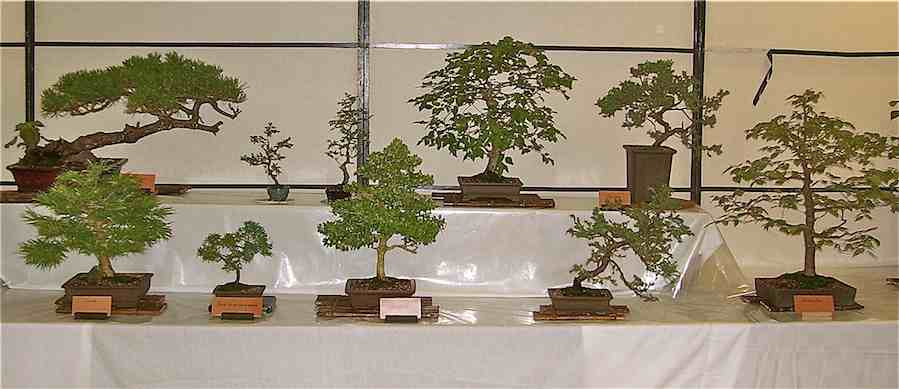
Midwest Buddhist Temple - Bonzai Display |
|
Waza (Artisans) Exhibit Booths |
Waza Paintings |
| Waza are master craftpersons from Japan. The Waza represent a select
group of over 100 artisans skilled in traditional crafts dating back to
Japan's Edo Period, 300 years ago. These craftpersons are here to share
a part of an old Japanese culture. They demonstrate their traditional
handcrafted skills inherited over the generations. While the Waza travel
throughout the world, Ginza Holiday is one of their few appearances in
the United States. |
|
Exhibitions & Performances
In Order of Stage Appearance |
| Judo the "Art of
Suppleness" - Judo was founded from Kitou-Ryu Jujitsu
by Venerable Jigoro Kano. The secret of Judo uses the strength of an
opponent to one's own advantage, not to match strength with strength,
but to win by yielding to strength. To be a skillful judoist
mental discipline is necessary. The judoist must be self-composed,
self-reliant, and above all be alert to utilize the strength or mistakes
of one's opponent. |
|
Kokushikan Judo Academy - Evanston,
Illinois |
|
Sensei Takayuki Yoshinaga - Kodokan 8th Dan |
Judo Academy Speaker |
|
Aikido the "Way of Harmony" -
Aikido is a martial art created by Morihei Ueshiba, a
Japanese martial artist. Ueshiba studied a number of traditional forms
of armed and unarmed combat, then combined them with a principle of
non-resistance to create Aikido. Aikido is characterized by flowing
circular motion, embodying the belief that man should strive to live in
harmony with his environment and nature. In Aikido, one never opposes an
attacker's force. Instead, one blends the movements of their body with
that of the opponent, deflecting the attack and forcing the opponent off
balance. A number of locks and holds are used to neutralize the
opponent. |
|
Aikido by the
Oak Park Aikikai - Oak Park, Illinois |
|
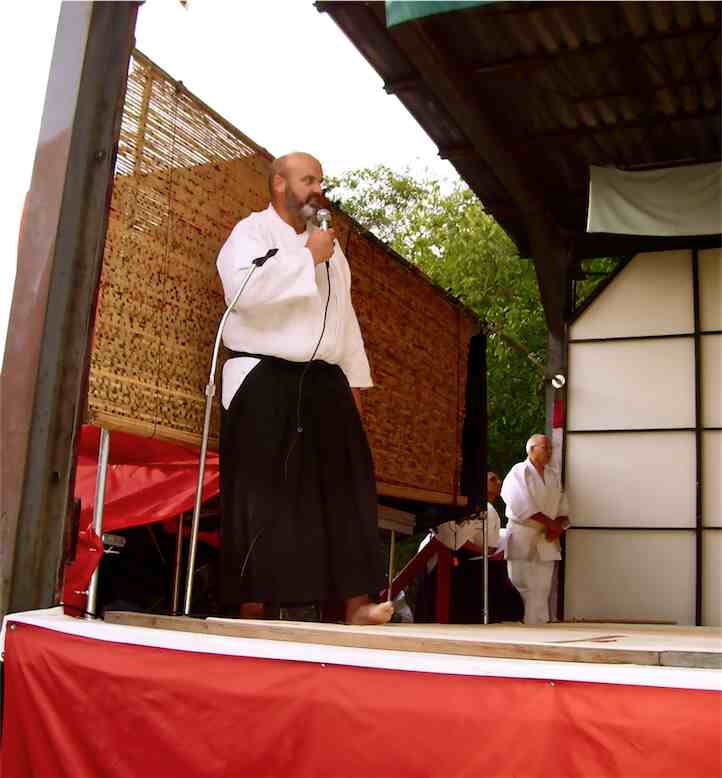 |
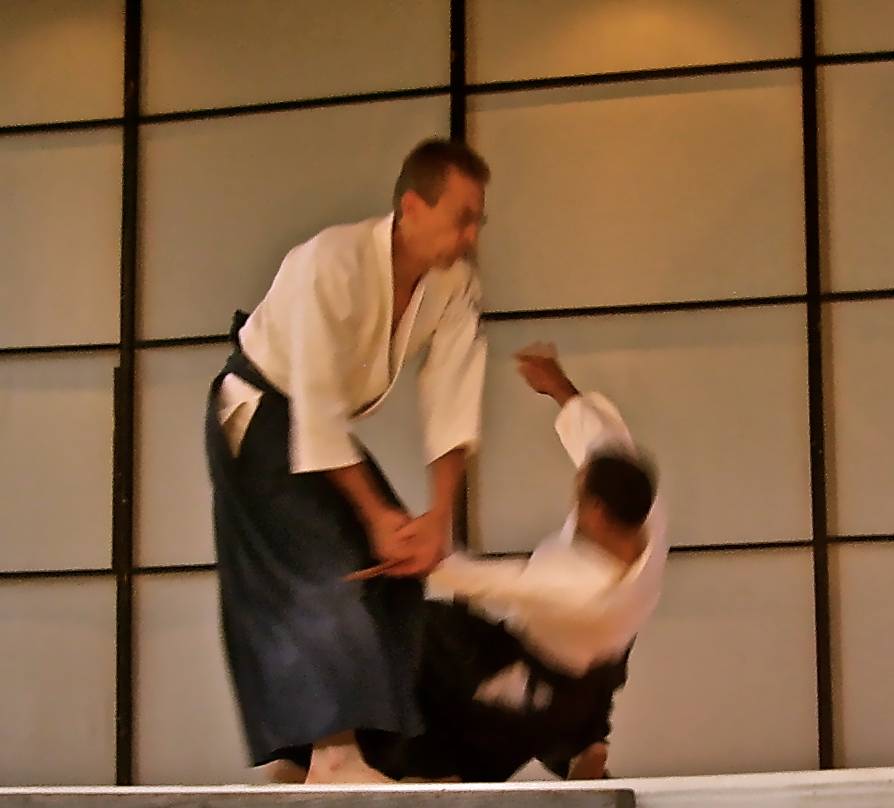 |
|
Comments by Mark Sharp - 2nd Dan, Fukushidoin |
Disarm Takedown |
|
Japanese Folk Dances
Midwest Buddhist Temple Minyo Group |
|
Classical Japanese Dances
Fujima Shunojo & members of Fujima-Ryu of Chicago |
|
Taiko Performance
(Japanese Big Drum)
Kogen Taiko Group - Minneapolis-St. Paul, Minnesota |
|
Chicago Japanese American Historical
Society |
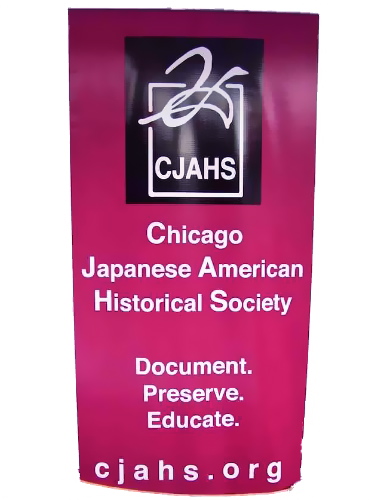 |
Chicago Japanese American Historical
Society
Documents, Preserves and Shares the History and legacy of Japanese
Americans in Chicago
The Chicago Japanese American Historical Society
maintains one of the primary collections of memoirs from Japanese
Americans whose experiences span the decades before 1942, through
internment during the Second World War, and to the subsequent years of
resettlement to Chicagoland.
Donations Requested
If you'd like to find a new home for memorabilia:
objects/photos/papers relating to internment camps of WW II, Chicago
Nisei Athletic Association or any culturally significant items
associated with Japanese/Japanese Americans in the Chicago area, of any
period, the Chicago Japanese American Historical Society would be happy
to arrange to pick them up at your convenience.
The Chicago Japanese American Historical Society will record and
preserve the items for our future generations and the general public in
order to ensure the history/stories of our ancestors who fought for a
place in U.S. history through hard work, perseverance, and sacrifices
will not be in vain.
Please Call
Jean Mishima 847 998-8101
Jane Hidaka 773 539-7178
cjahs.org@gmail.com |
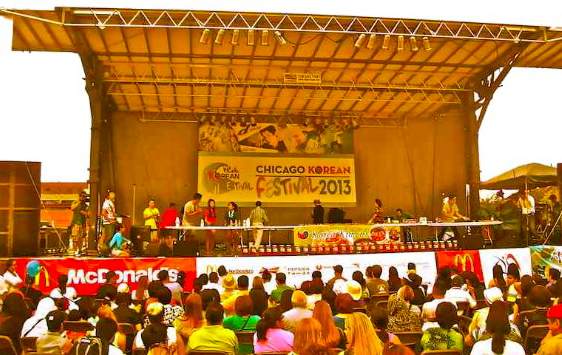 |
 |
|
18th Annual Chicago Korean Festival
The Chicago Korean Festival is the only recognized Korean
festival in the Midwest region to date |
|
Since 1995, the Chicago Korean
Festival has presented diverse Korean traditional events and
contemporary music concerts to over 70,000 to 80,000 people. Sponsorship
Events include a Ssireum (Traditional Korean Wrestling), a Singing
Contest, Fashion Show, Senior Citizen Entertainment and Kids
Entertainment. |
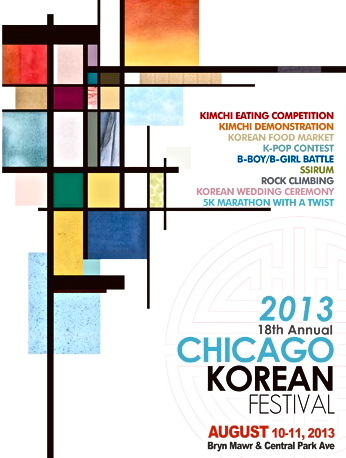 |
Chicago Korean American Chamber of
Commerce
Presents
18th Annual Chicago Korean Festival
Held annually on the second weekend of every August
Dates: Saturday, August 10th & Sunday, August 11th
Location: Central Park & Bryn Mawr Avenue, Chicago
10 AM-10 PM
Sunday - August 11th, 2013
Green Dragon Society
Members Attended Festival
Attendees celebrate Korean culture with food,
performances, live music and traditional and modern fashion shows at the
18th annual cultural festival. Guests can enjoy a kimchi eating contest,
a kimchi making demo, Korean food vendors, a K-pop dance contest, a
b-boy/b-girl battle, K-pop music, rock climbing, a 5K run and a
traditional Korean wedding ceremony.
Most participants are Asians, especially Koreans. The Korean community
in Chicago consists of over 100,000 Koreans with economic stability,
which keeps growing. Until the 13th Korean Festival, about 1,000,000
people have visited this Korean Festival as participants. |
|
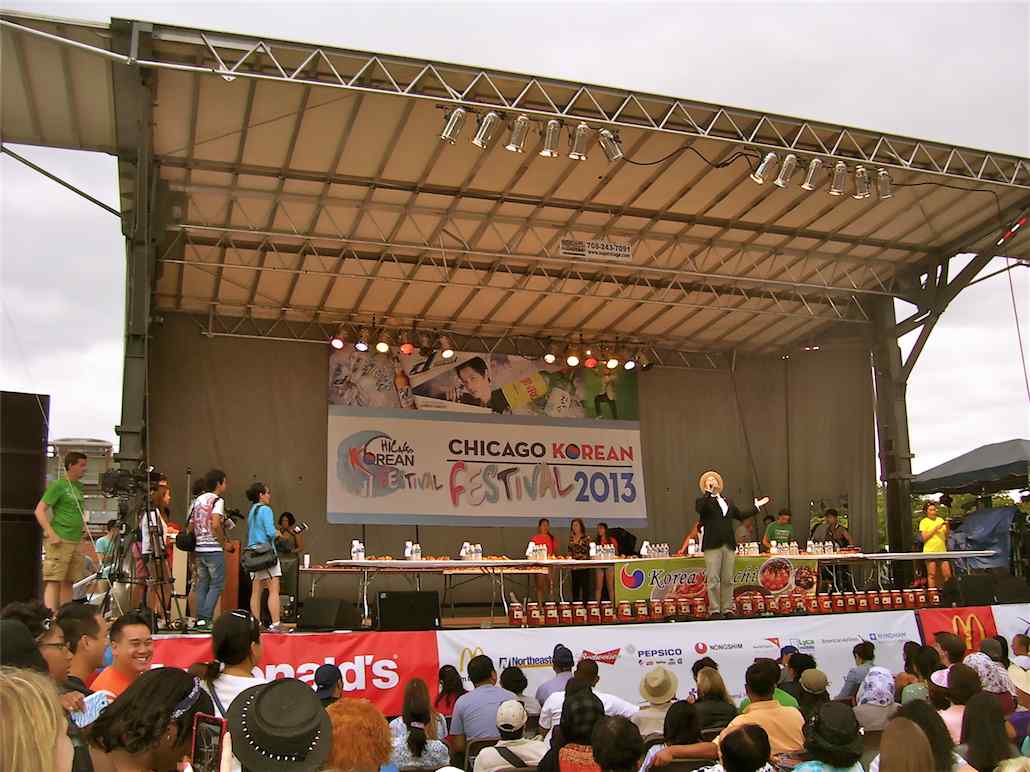 |
|
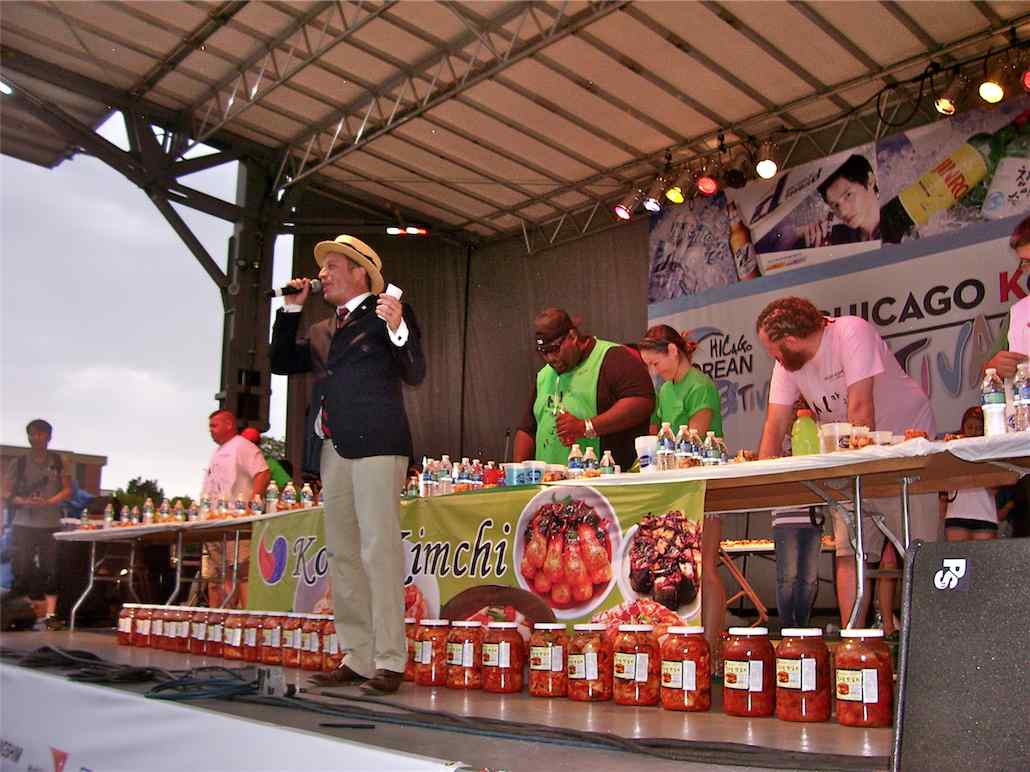 |
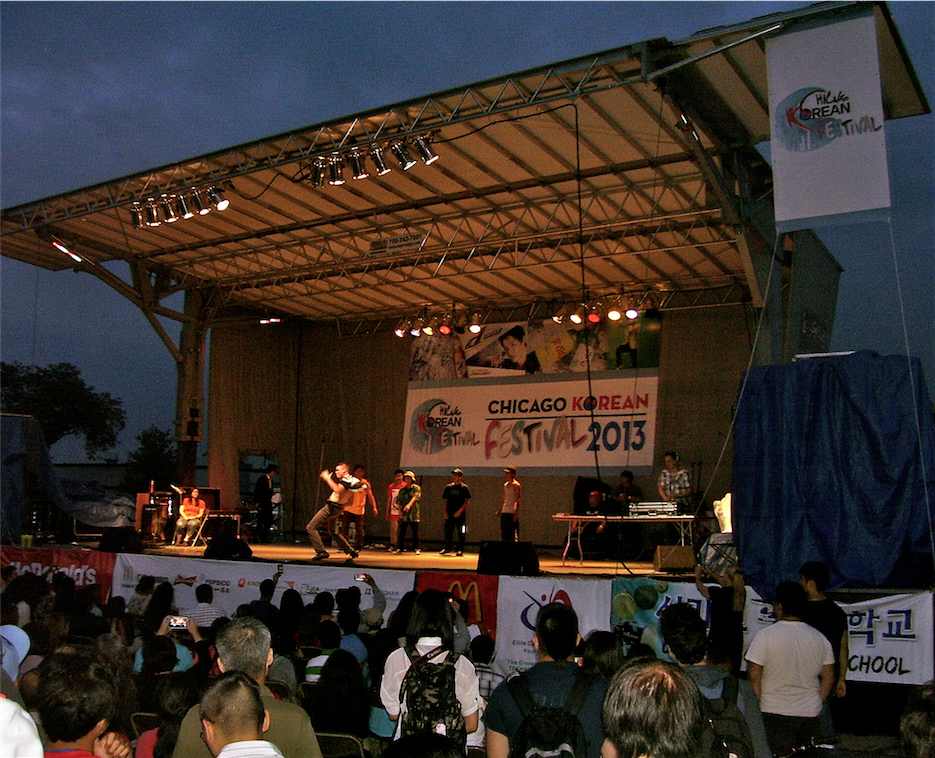 |
|
Kimchi Food Eating Contest |
Night Time Music & Break Dancers |
| For this event Bryn Mawr Avenue was closed down to traffic from
Kimball to Pulaski, and part of the Northeastern Illinois University Campus was
utilized, including parking lots. It was a big crowd and there was a
nice selection of tasty Korean food along side regular American fare.
Shops and vendors of all variety of art and articles, under tents, lined
Bryn Mawr Avenue for blocks. The stage show was from break dancers, to a
six minute food eating contest, and everything in between. All ages and
races were present but the Asian youth were out en masse for a good
time. The music was geared for that younger Asian crowd with some big
name appearances. The sky threatened rain and then let loose, but
Chicagoans are undaunted by weather conditions. The Green Dragon Society
especially enjoyed the Ssireum Tournament (Traditional Korean
Wrestling). |
|
Traditional Korean Dress
Parade |
|
Ssireum Tournament (Traditional
Korean Wrestling) |
|
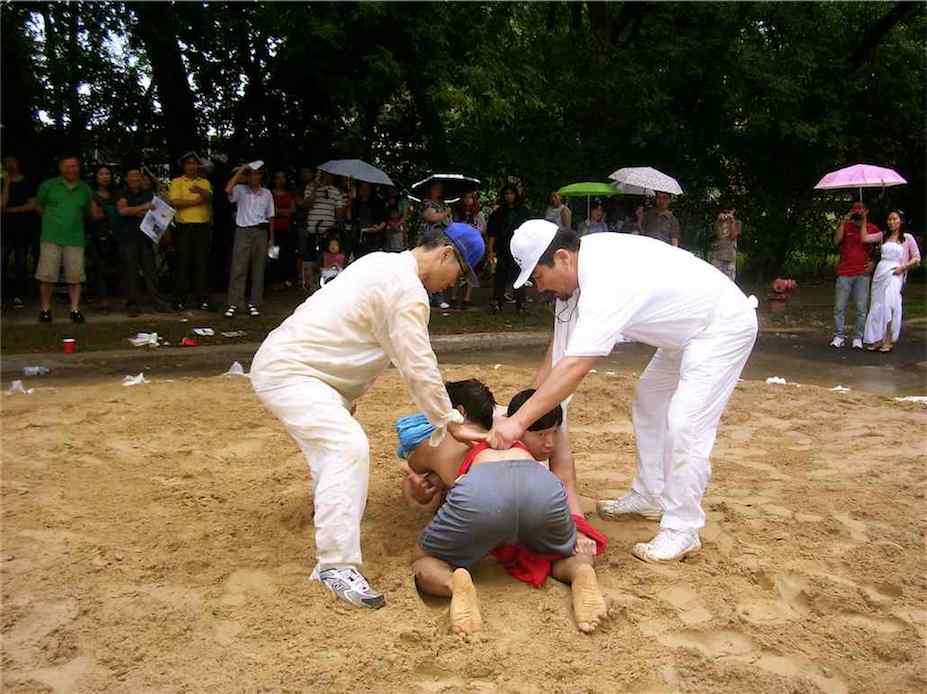 |
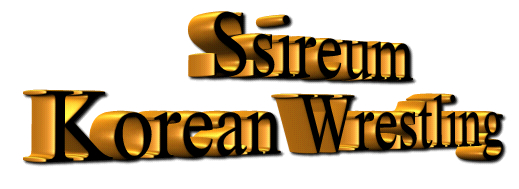
Ssireum traditional Korean folk wrestling.
First rising to popularity in the Joseon dynasty, modern tournaments
still take place in a seven meter circular ring of sand. A test of
physical strength, wrestlers attempt to force their opponents to the
ground with any part of their body knee level or higher. Witness the
national sport of Korea. |
|
Chinese Mid-Autumn Festival |
| In ancient China emperors followed the rite of offering sacrifices
to the Sun in the Spring and to the Moon in Autumn. This age-old
festival traditionally is celebrated on the 15th day of the 8th Chinese
lunar month in observance of the bountiful Autumn harvest. Its exact
date by the Western calendar is different every time. It always falls
upon the full moon. This year, 2013, the full moon is on September 19th,
which is when China will celebrate this Chinese national holiday. The
Full Moon is visually at its fullest, roundest, and maximum
brightest for the entire year during the Chinese Moon Festival. |
|
Legend of the Moon Goddess |
|
Upon the occasion of the Mid-Autumn
Festival, the legend of the Moon Goddess, Chang Er, is often told to
children |
|
With respect to the history of Chinese
civilization, China is the first nation to cherish the dream of "Flying
to the Sky" |
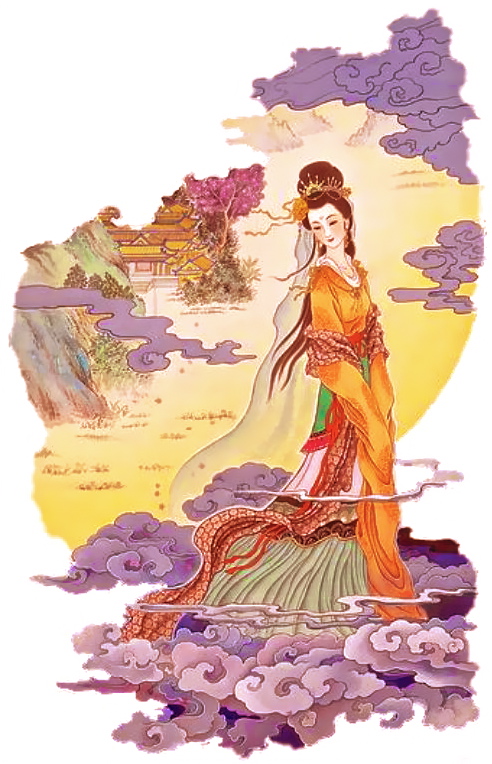
Chang Er - Moon Goddess |
The time of this story is around 2170 B.C.
Once upon a time there was a famous archer, Hou Yi, who with his
arrows was able to slay mankind’s worst enemies, ferocious beasts that
inhabited the earth.
The earth at that time had ten suns circling over it, each took its
turn to illuminate the earth.
But one day all ten suns appeared together, scorching the earth with
their heat. The wise emperor of China summoned Hou Yi and commanded him
to kill all but one of the suns. This Yi proceeded to do. He succeeded in shooting down nine of the suns.
Upon the completion of his task, Yi was rewarded with a
pill, the elixir of life, and advised: "make no haste to swallow this
pill, but first prepare yourself with prayer and fasting for a year."
Being a wise man, Yi took the pill home and hid it.
However, his
beautiful wife Chang Er found and swallowed the elixir of life. After drinking it, she found
herself floating and she flew to the Moon. Hou Yi loved his divinely
beautiful wife so much, he didn’t shoot down the Moon. Once a year, on
the 15th day of the full moon, Hou Yi visits his wife. That is why the
moon is full and most beautiful on that night.
Hou Yi realized that Chang Er had become a Moon Deity. He
set up an incense altar in the moonlight and placed her favorite fruits
and snacks as a memorial for Chang Er. Once word spread that Chang Er
had become the Moon Goddess, people began to place offerings and pray to
the moon every mid-autumn for the kind-hearted Chang Er to grant peace
and happiness to them.
The Moon Festival is definitely a romantic one. A perfect
night for the festival is if it is quiet and mild. Lovers spend such a
romantic night together tasting delicious moon cake and sipping wine,
while watching the beautiful full moon. Even for a couple who can't be
together, they can still enjoy the night by watching the moon at the
same time so it seems that they are together at that hour. A great
number of poetry has been devoted to this romantic festival.
As for Hou Yi, he built himself a palace in the sun as
Yang (the sun and the male principle), Chang Er as Yin (the moon and the
female principle). |
There are some special customs in different parts of the country,
such as burning incense, planting Mid-Autumn trees, lighting lanterns on
towers and fire dragon dances.
In Chinese cities or Chinatowns throughout the world, thousands of
candlelit lanterns line sidewalks and waterfronts during the festival.
To celebrate this sighting of the moon, red lanterns wrought in
traditional styles and embellished with traditional motifs are prepared
for the occasion. The lanterns are also made in traditional shapes such
as rabbits, goldfish, carps, butterflies, lobsters and star-shaped
fruits.
During the Moon Festival, sons and daughters come back to their parents’
house. Sometimes even people who have settled overseas will return to
visit their parents. Adults will usually indulge in fragrant moon cakes
of different varieties with a good cup of piping hot Chinese tea, while
the little ones run around with brightly-lit lanterns. |
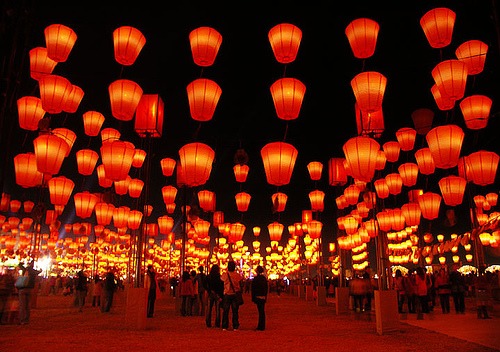 |
| The round Moon Cakes, which were originally, traditionally,
used as sacrificial offerings to the Moon God, are considered nowadays
as symbols of family reunion. Moon Cakes symbolize both longevity and
good health. They are imprinted with the Moon Goddess, a grove, Jade
Rabbit, or a toad. The centers can contain red bean paste (sweet), lotus
seed paste, melon, dried fruits, coconut, pineapple, and often have an
egg inside. Boyfriend with girlfriend eat them. Husband, wife and
children partake of them together. Therefore, the annual Mid-Autumn
Festival is also sometimes called the Mooncake Festival. People
eat Moon Cakes to express their love for their family and their hope for
a happy life. It is associated with the Autumn Equinox when the
moon appears at its roundest. The roundness of the moon symbolizes
family unity and harmony. |
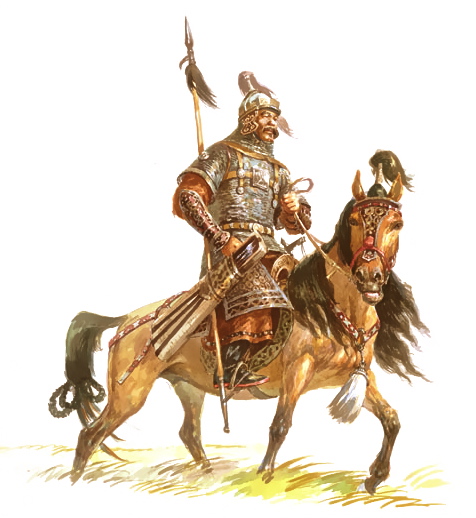 |
Did Mooncakes Overthrow the Mongols?
During the Yuan dynasty (1280-1368 AD) China was ruled
by the Mongolian people. Leaders from the preceding Sung dynasty
(960-1280 AD) were unhappy at submitting to foreign rule, and set how to
coordinate the rebellion without it being discovered. The leaders of the
rebellion, knowing that the Moon Festival was drawing near, ordered the
making of special cakes.
A rebel, General Chu Yuen Chang, and his Senior Deputy,
Liu Po Wen, had devised a strategy to recapture a walled city held by
the Mongols. Disguised as a Taoist priest, Liu entered the city
distributing mooncakes to the populace. Then on the 15th day of the 8th
month—the time of celebrations and traditionally the day when mooncakes
are eaten, the mooncakes were sliced and to the surprise of the city
folk, packed into each moon cake was a message with the outline of the
attack, coordinating a civilian uprising with the simultaneous attack of
Chinese troops.
On the night of the Moon Festival the rebels
successfully attacked and overthrew the government. What followed was
the establishment of the Ming dynasty (1368-1644 AD). Today, moon cakes
are eaten to commemorate this story. |
|
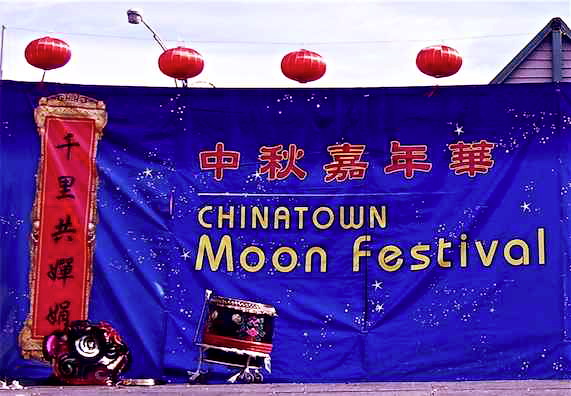 |
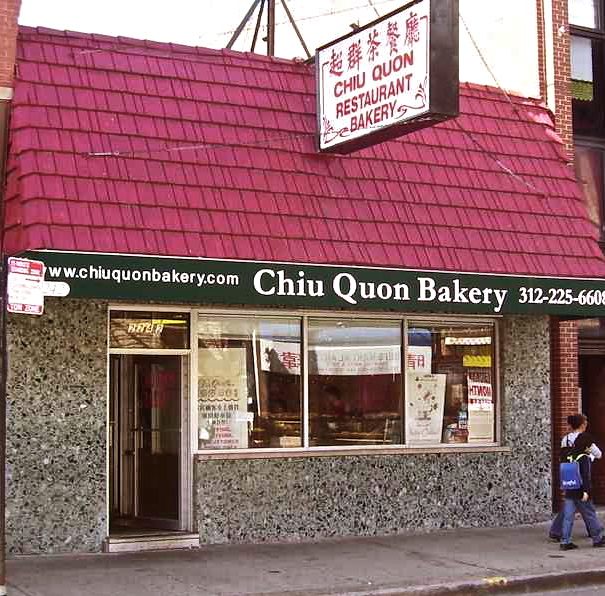 |
The Moon Festival fell on a beautiful day for outdoor activity. The
weather gave us sunny skies and temperatures in the low seventies.
Arriving in Chinatown early in the day, the Green Dragon Society's first
stop for the Moon Festival
was the Chiu Quon Bakery to eat mooncakes with tea or coffee. Coffee is
scarce in Chinatown, but the Chiu Quon Bakery has an good cup. There are
tables in the back room where locals gather to enjoy the company. Lively
debates abound in Cantonese and English, mixed.
After mooncakes and discussion, Chanh Giac Tu Temple, across the
street from Chiu Quon Bakery was entered for blessings and conversation
with the Bhikkunis Nuns. Then, various shop keepers and personal
acquaintances were visited along the vicinity of Wentworth Avenue.
Finally, a walk to Chinatown Square, at the Mall, to partake of the
organized, scheduled events. The show included the Chicago chapter of
the Shaolin Temple, Illinois Secretary of State Jessie White's Tumbling
Team, Lion Dancing, musical performances, contests and karaoke, etc. The
Moon Festival is always, also very much for the children in Chinatown to enjoy. |
|
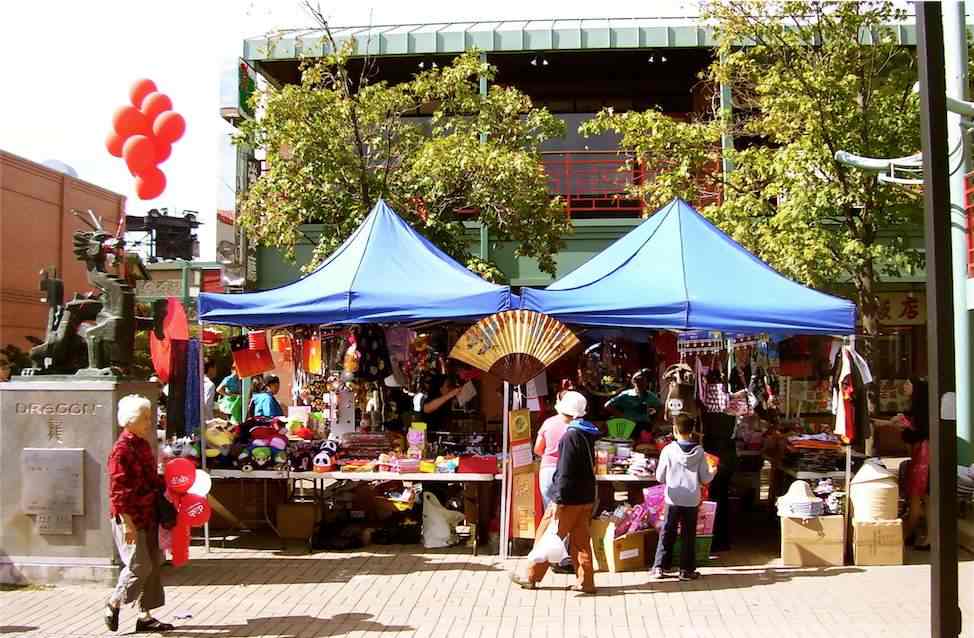 |
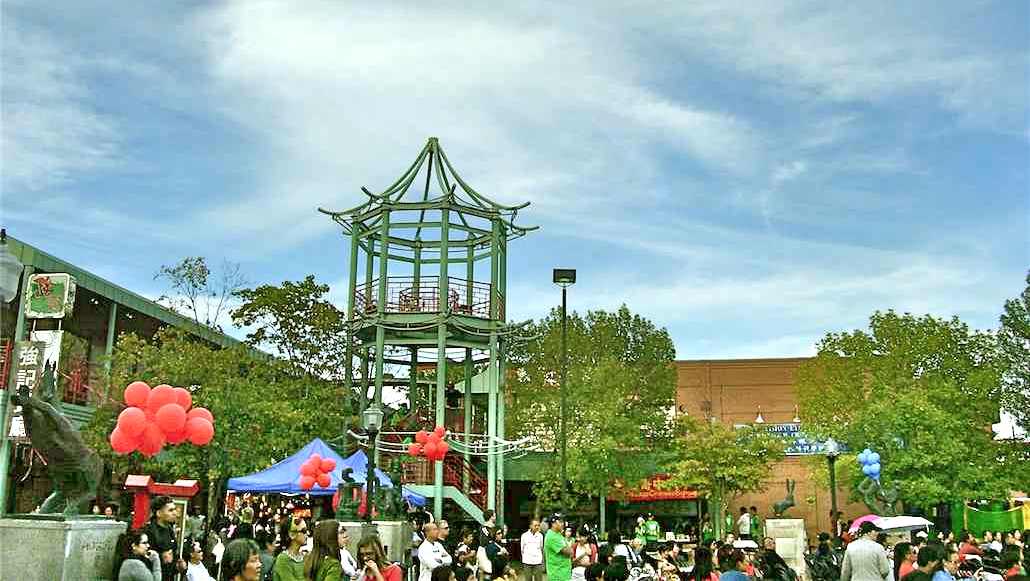 |
|
Chinese Moon Festival |
Chinatown Square - Pagoda |
|
Masters of Ceremony |
Lion Drum Team |
|
Lion Dancers - Chinese Cultural
Center |
|
Children Lion Dancing |
Dumpling Eating Contest |
|
Illinois Secretary of State Jesse
White - Tumbling Team |
|
Chicago Shaolin Temple - Martial
Arts |
|
Musical Performances
Many talented people entertained the crowd with their singing
and/or instrumental performances.
Below are two of the best performers for the evening. |
|
Nightfall, and we are intrigued by the hauntingly beautiful Pipa
melodies played by Jie Hao.
The Yin Yun Music Arts Organization
Performances - Lessons - Events
2356 S. Wentworth Ave. Chicago, Illinois
Phone: 847 312-0622 |
|
Late Night Nunchaku |
Nighttime, at the end of the
festival, the Green Dragon Society walked to the May Flower restaurant on
Wentworth Ave., to purchase to-go orders, mostly the Walnut Shrimp
entree, a classic dish in this friendly, Lee Family associated
restaurant. |
|
Full Moon Jam
Fire dancers from the greater Chicago area and Great Lakes share their
creative gifts by the shore of Lake Michigan, set to the percussive,
impromptu beats of local musicians, under the lunar light of the
brightest Full Moon.
Pagan Fire Dancers
An Elemental Exhibition
An Appreciation of Fire Art
The Spectacle of Music, Movement and Flame
Lakefront Location: ¼ mile south of the Foster Ave Turf Fields on the
lakefront. Lakefront jams are south of the Foster Ave Beach, on the east
side of the lakefront trail, in the big field.
Time: Nightfall till the park closes.
Thursday - September 19th, 2013
Autumnal Full Moon Night (Lunar Calendar)
Brightest Full Moon of the Year
Green Dragon Society
Attended Fire Dance
|
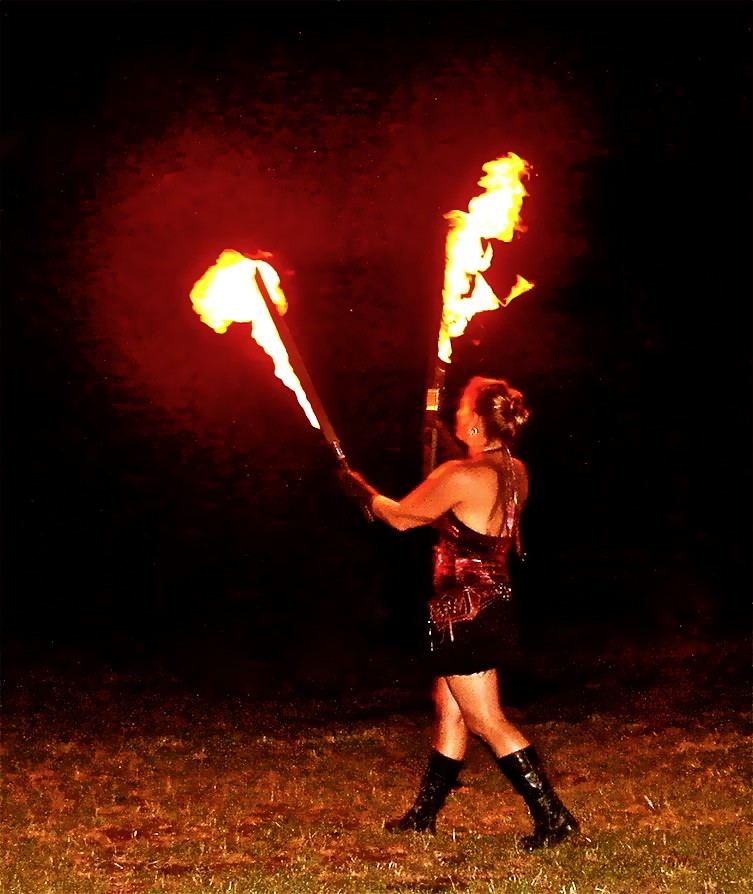 |
|
About four hundred people attended
the Full Moon Jam |
|
Mankind's eternal fascination with flame. Still
photography is inadequate to capture the blazing glory of these fire
dances. In motion there is a whirl of fire trails as the artist dancers
spin, gyrate and manipulate the fire to dance together with them. It is
truly beautiful to behold in the darkness of the night. |
|
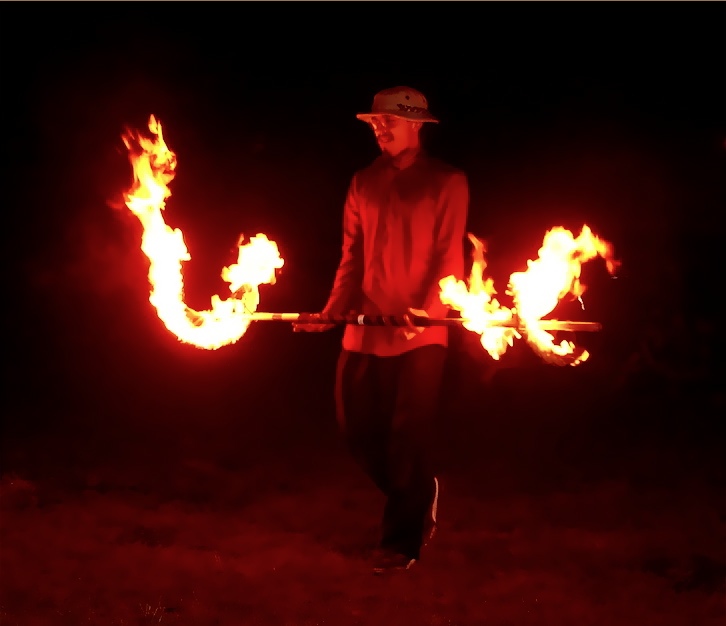 |
|
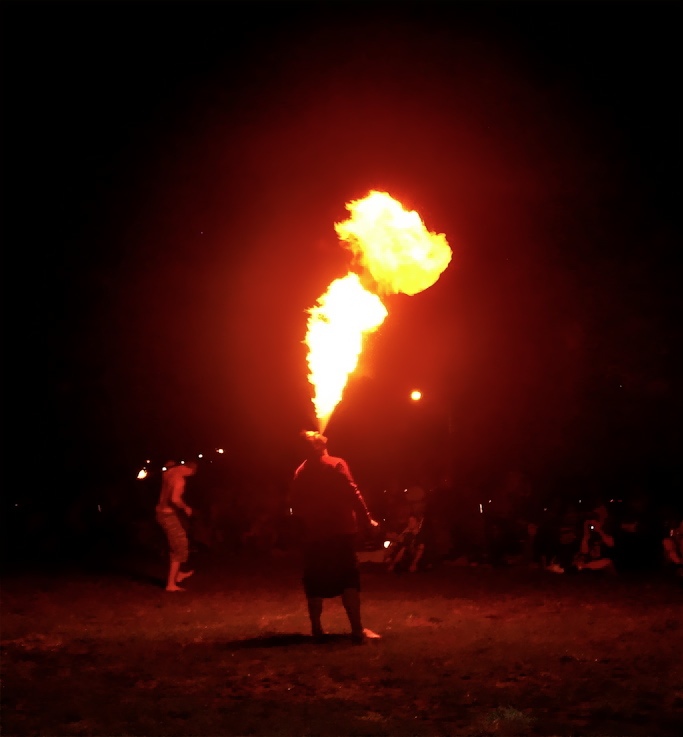 |
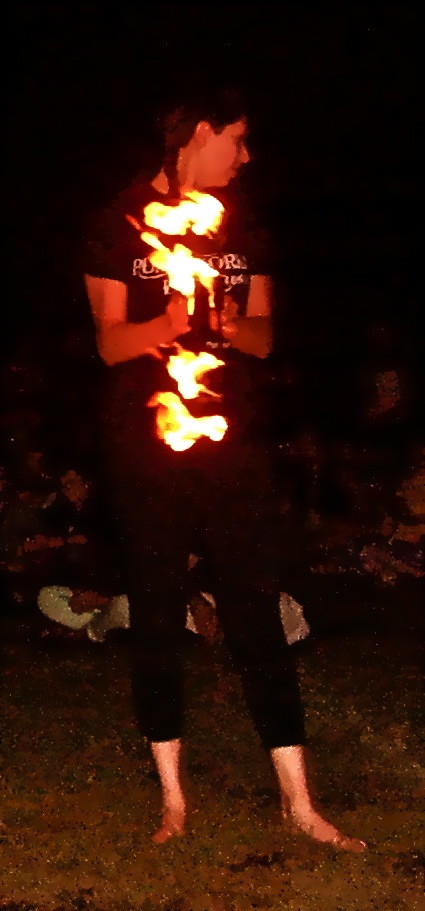 |
|
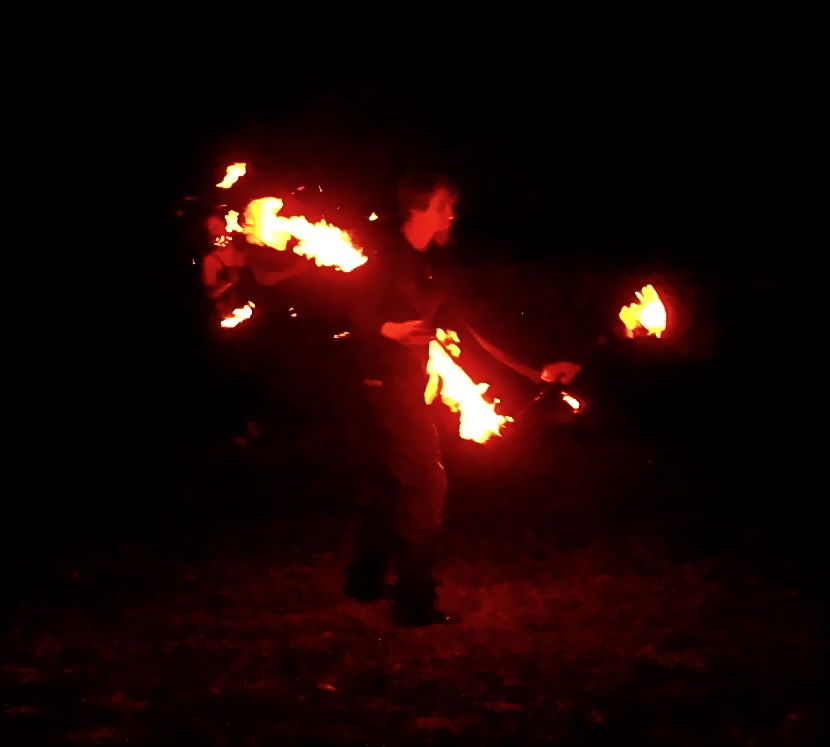 |
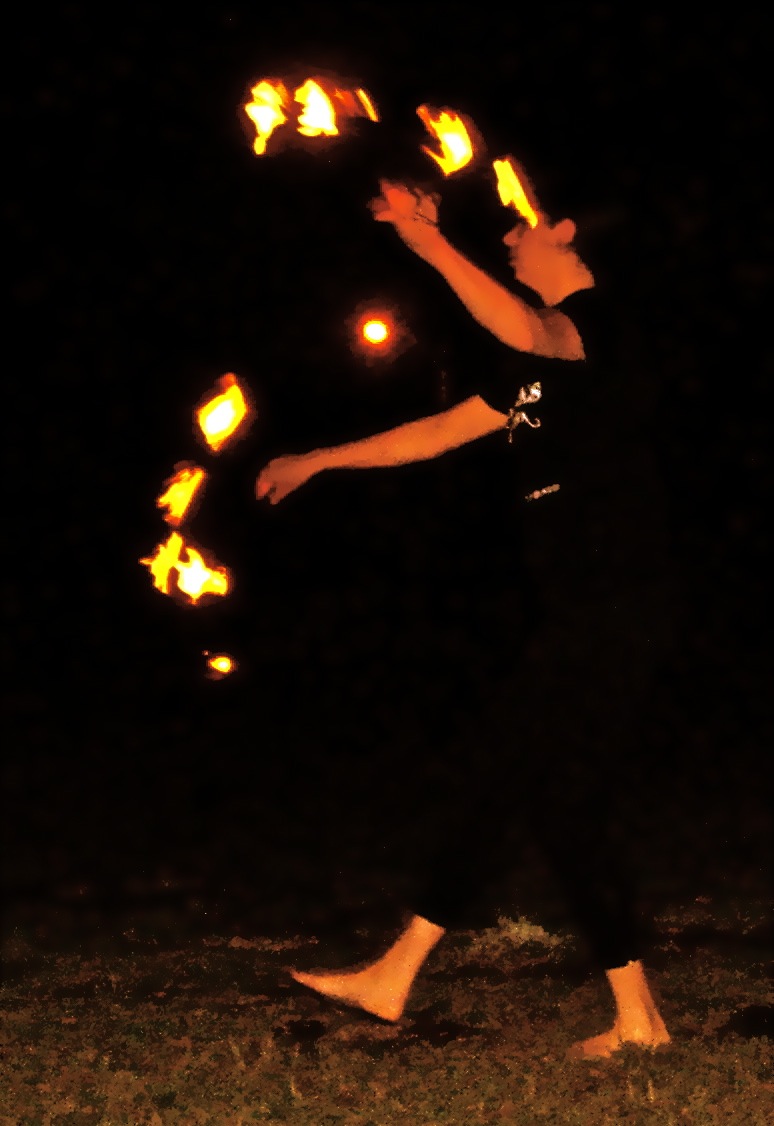 |
|
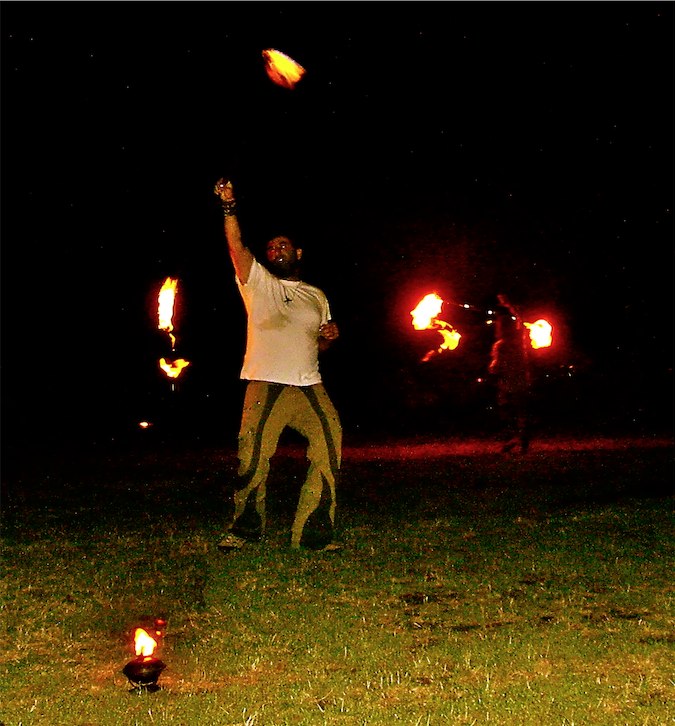 |
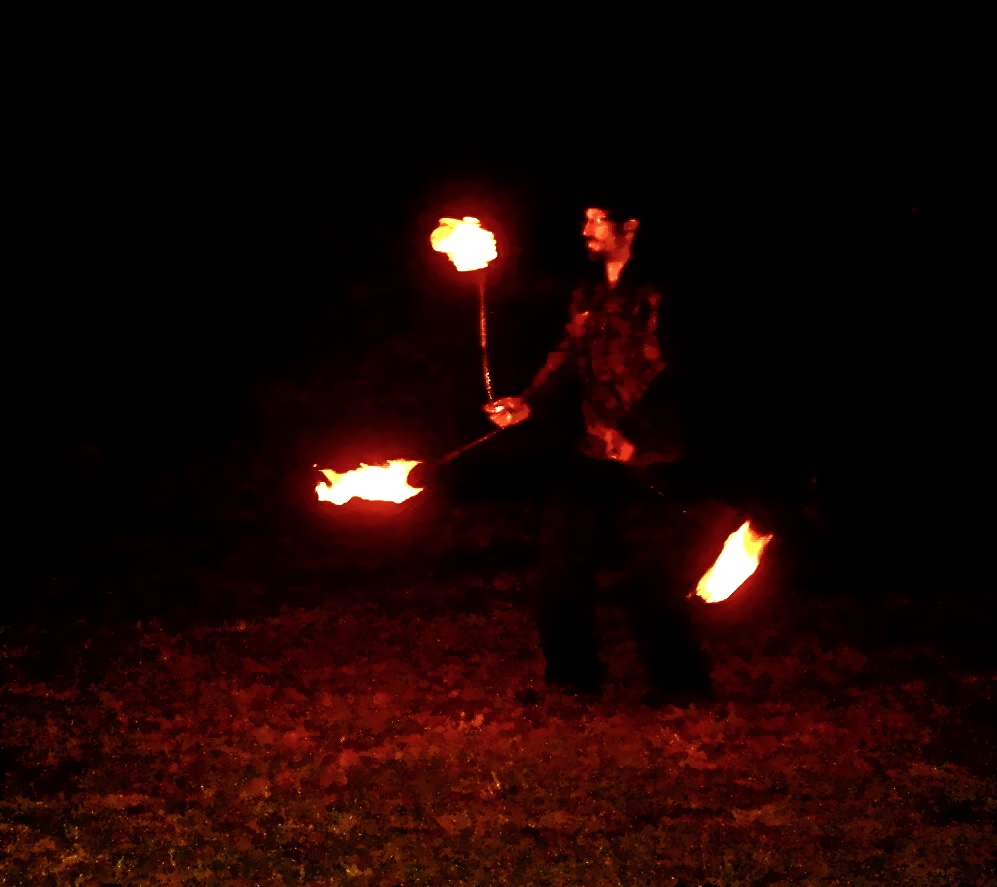 |
|
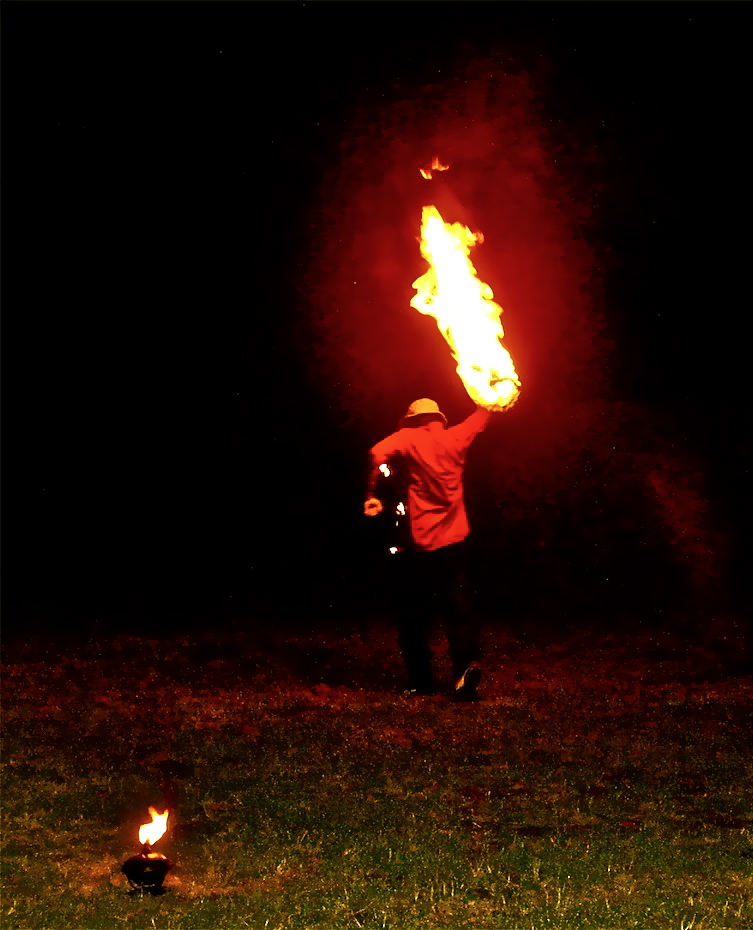 |
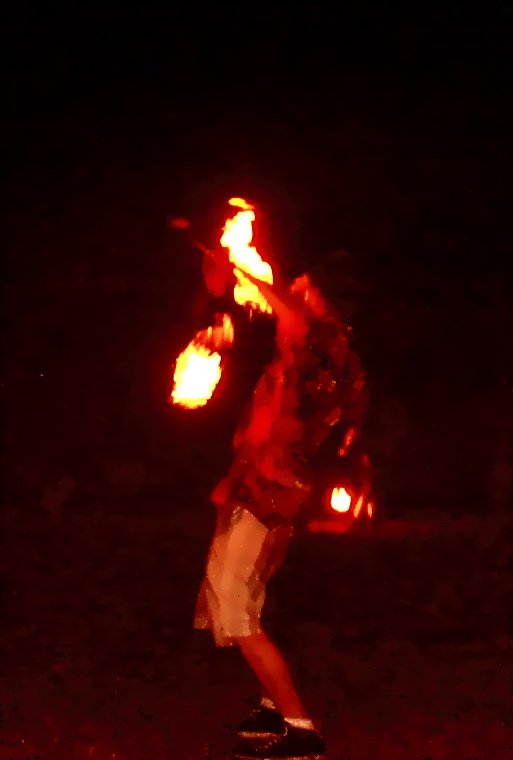 |
|
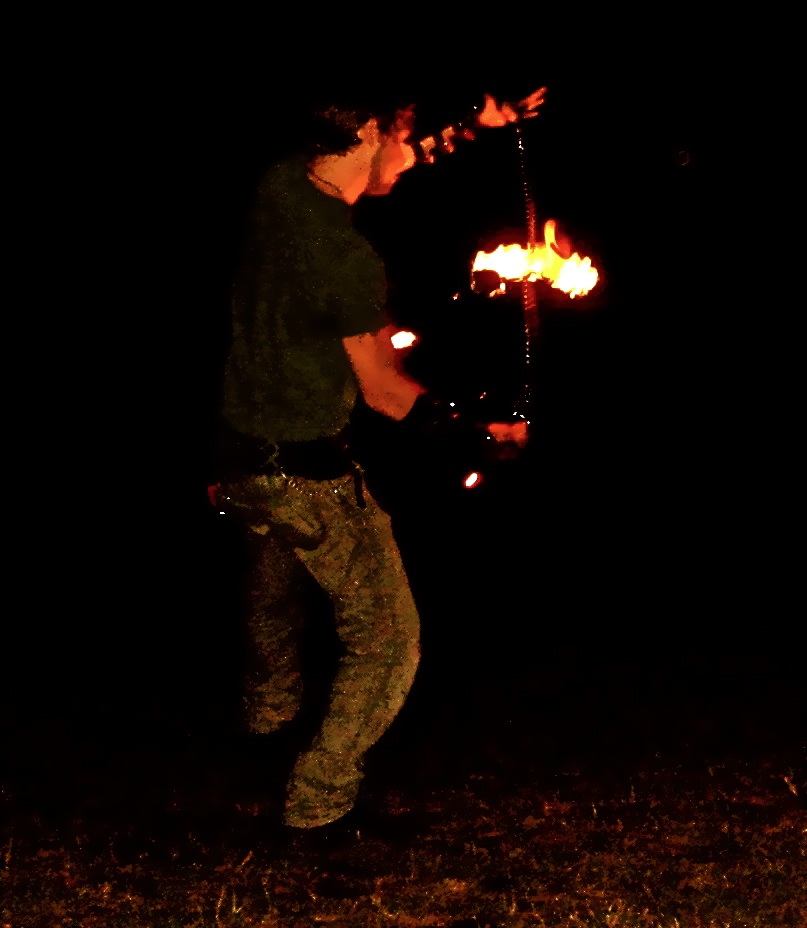 |
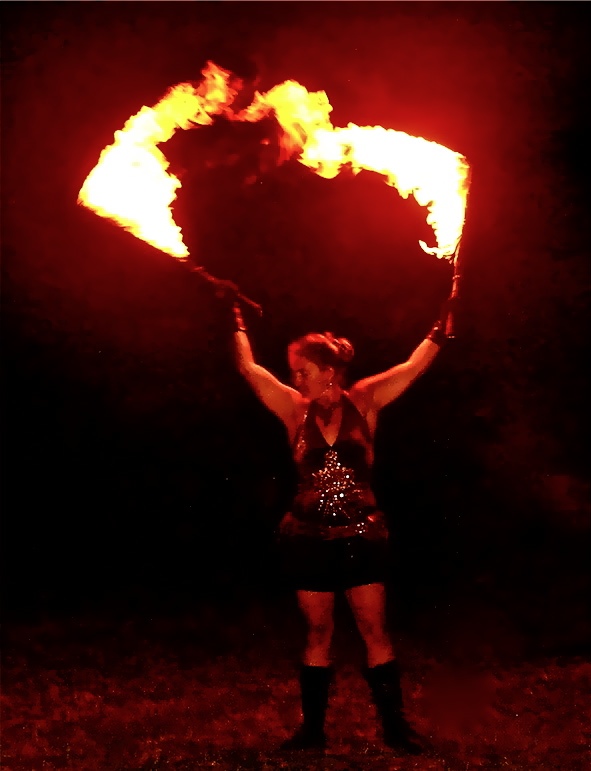 |
|
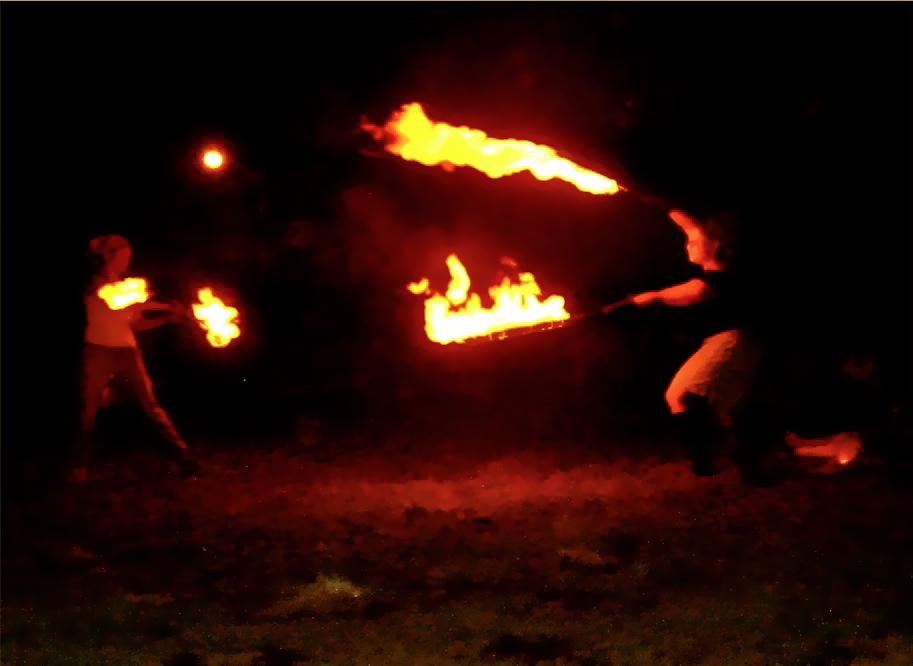 |
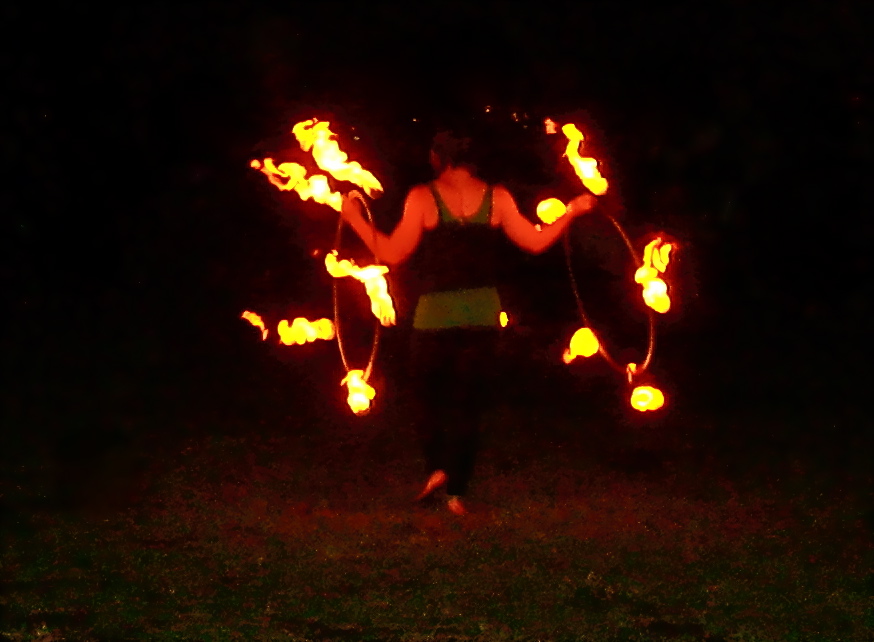 |
|
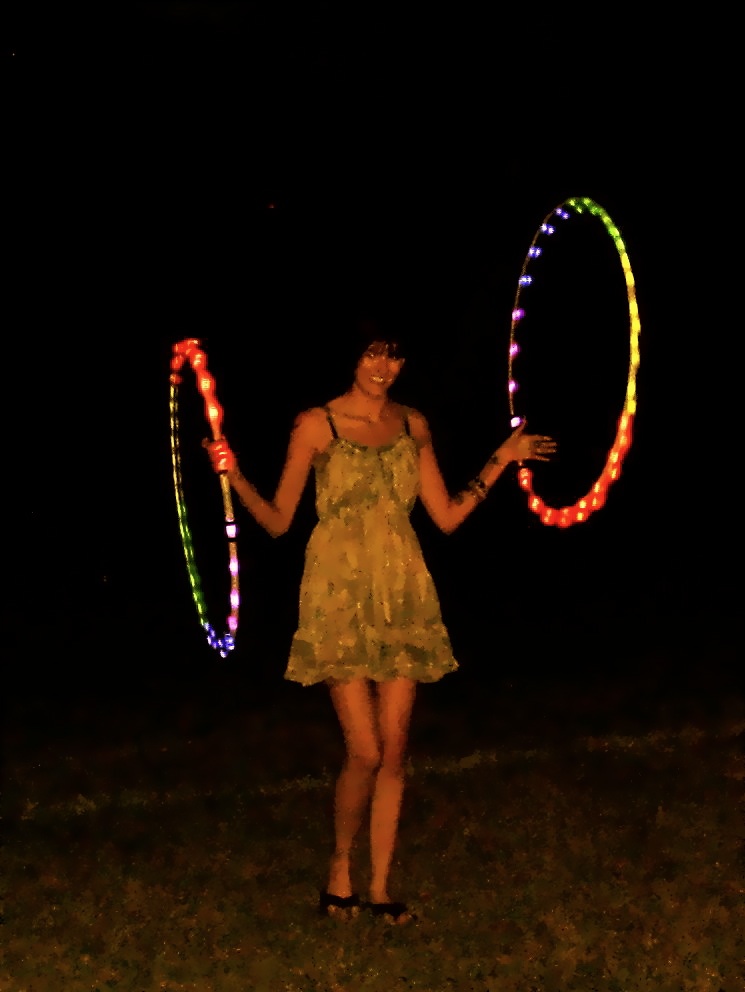 |
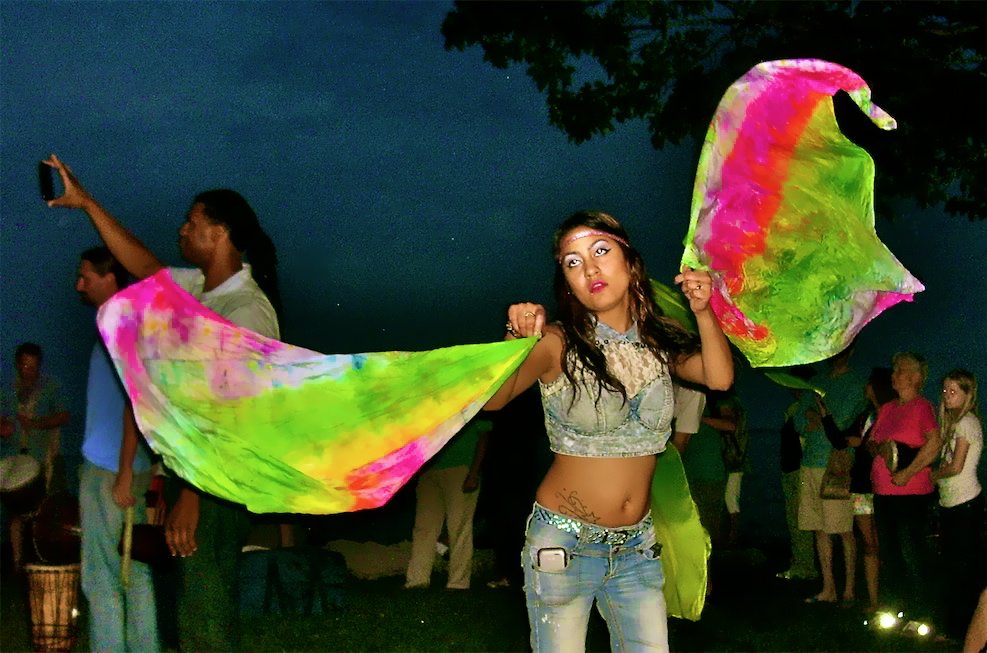 |
|
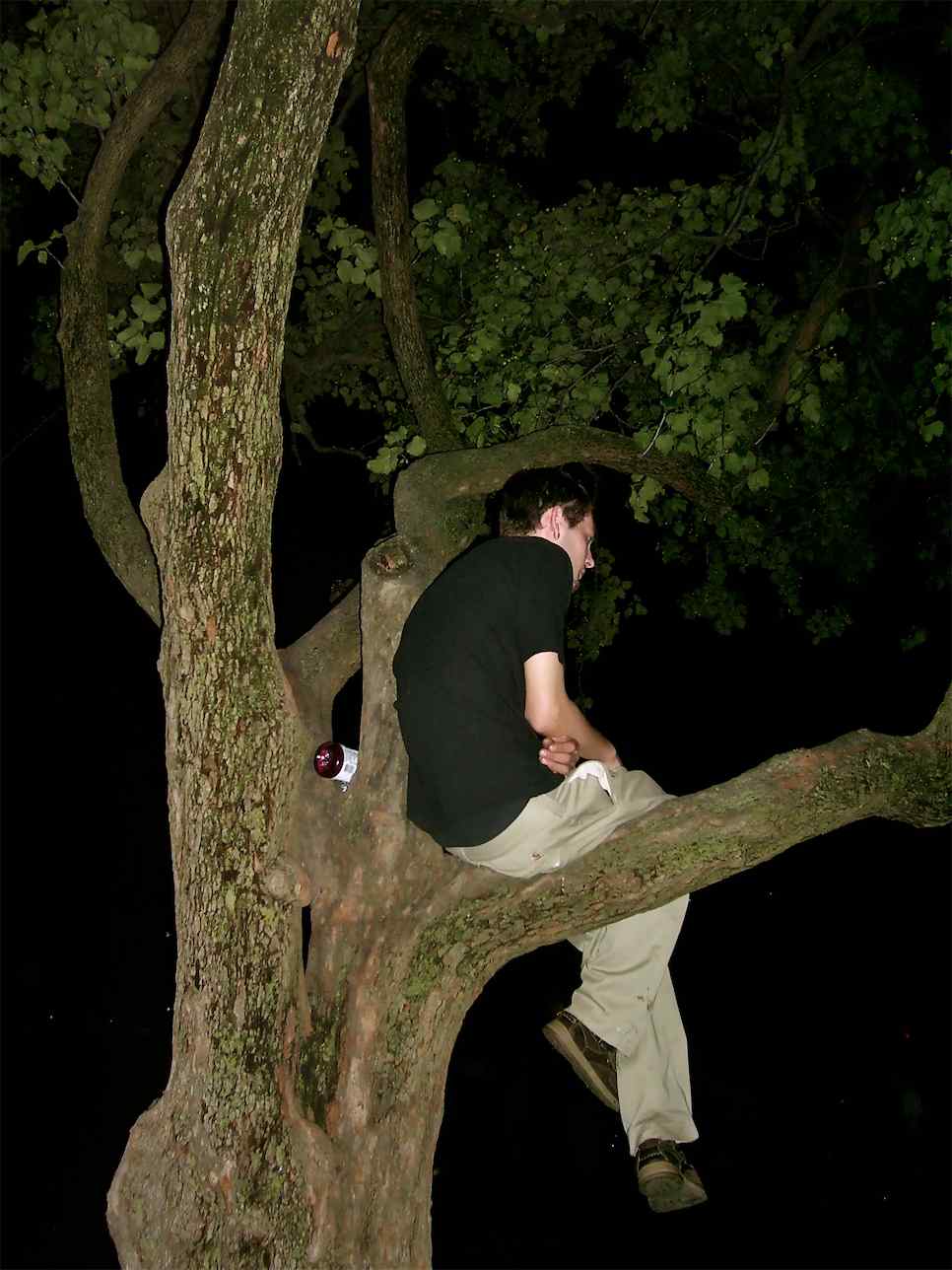 |
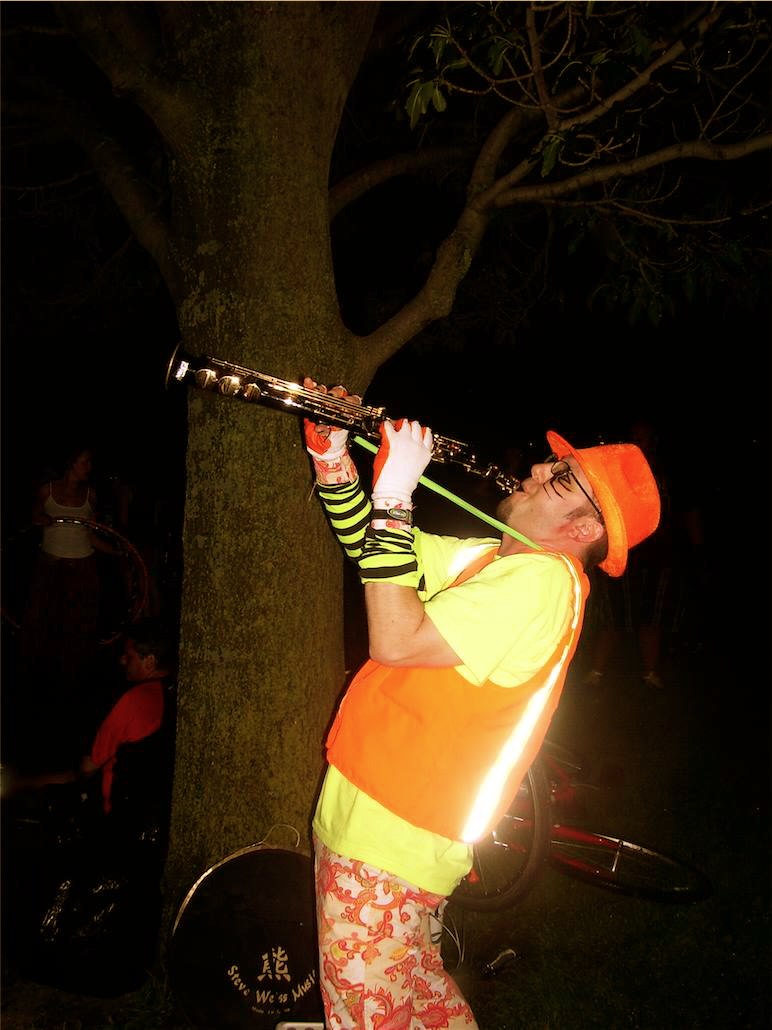 |
|
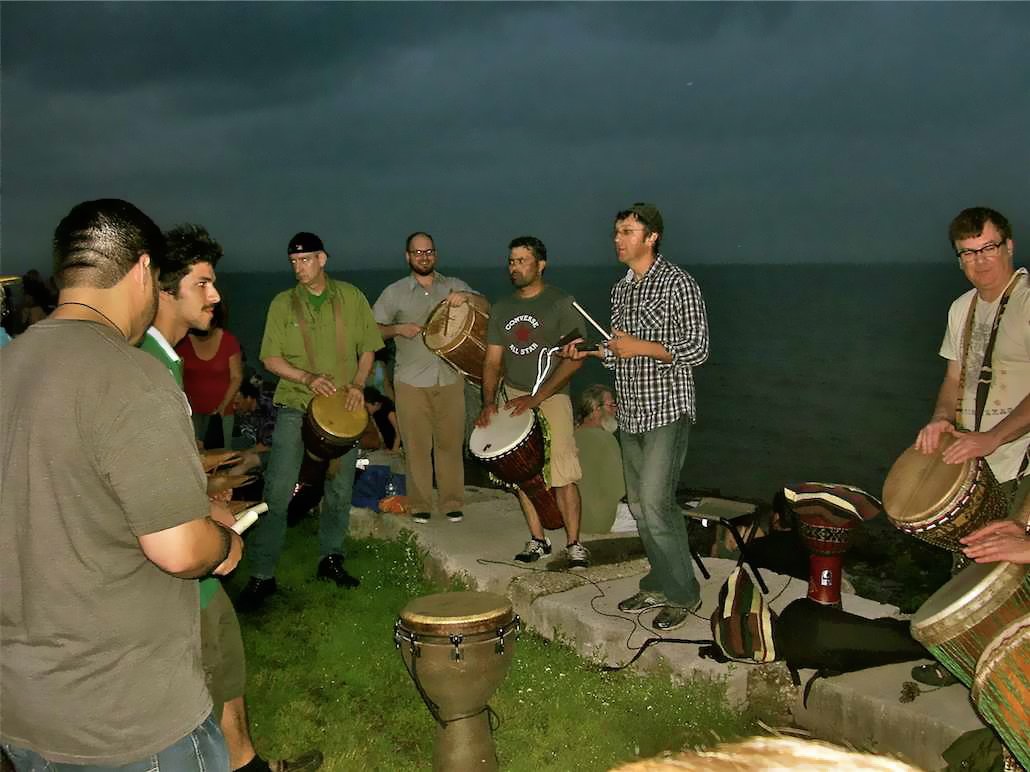 |
|
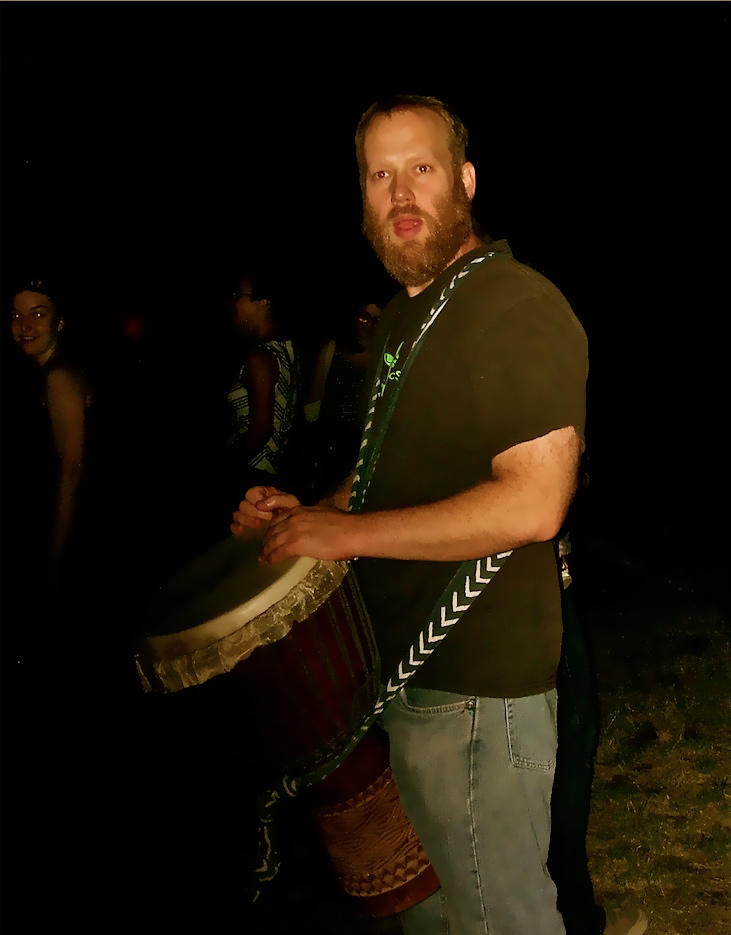 |
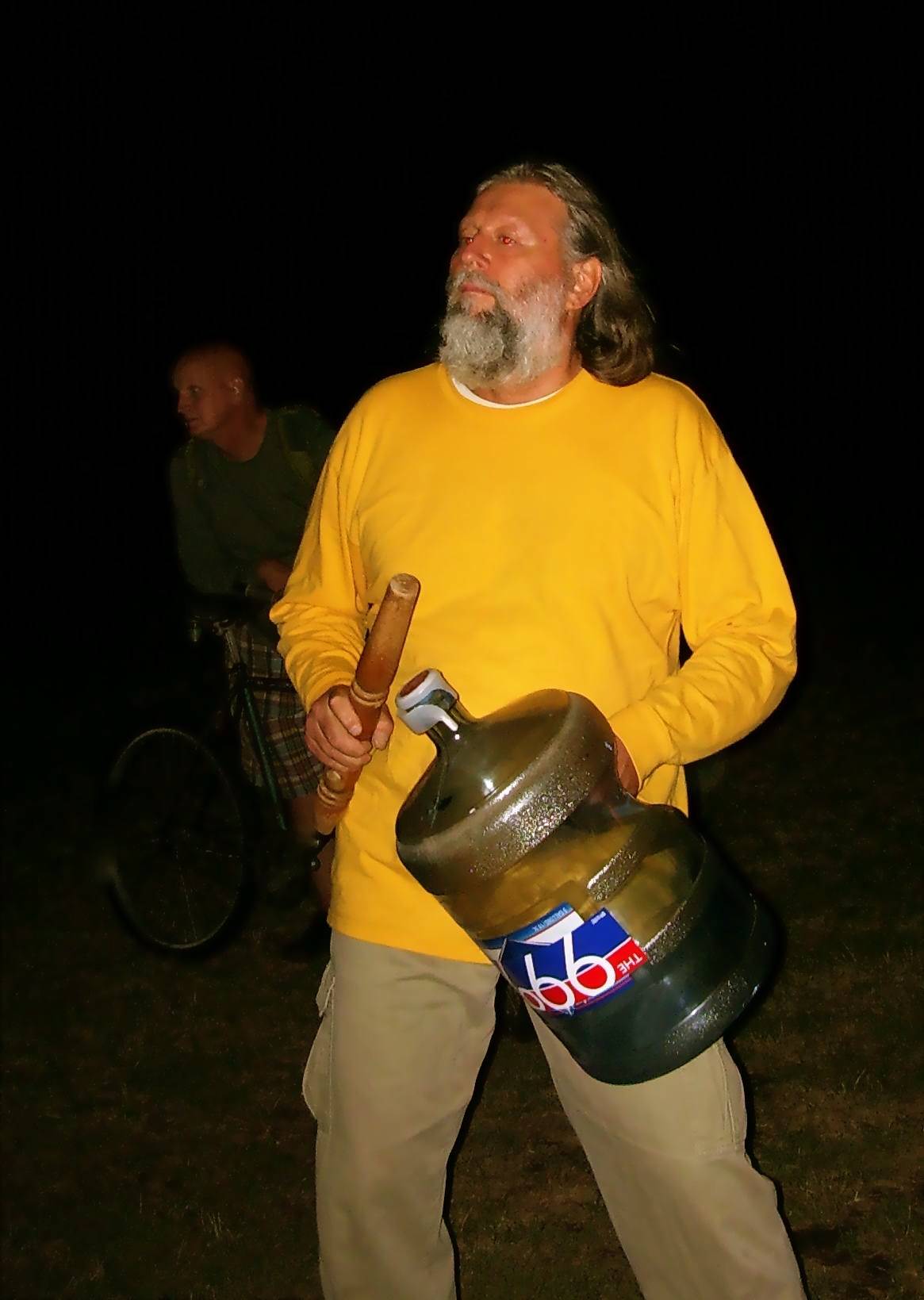 |
|
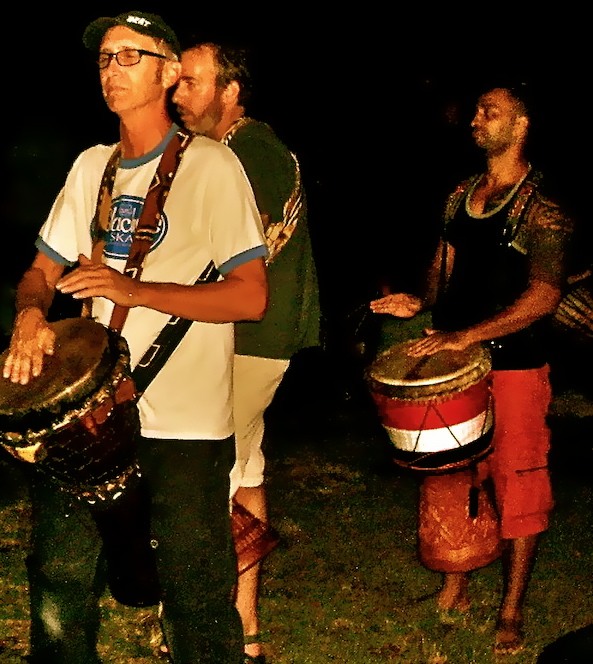 |
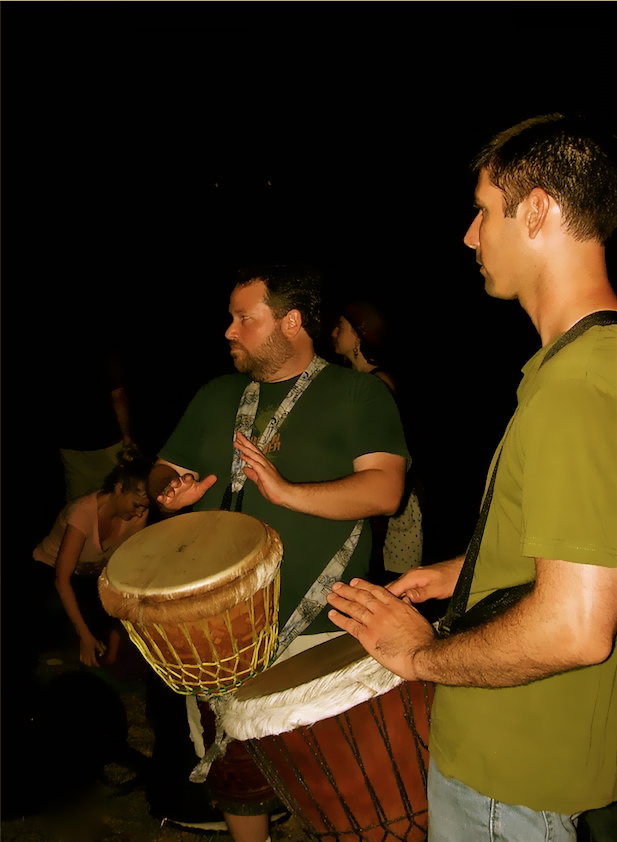 |
|
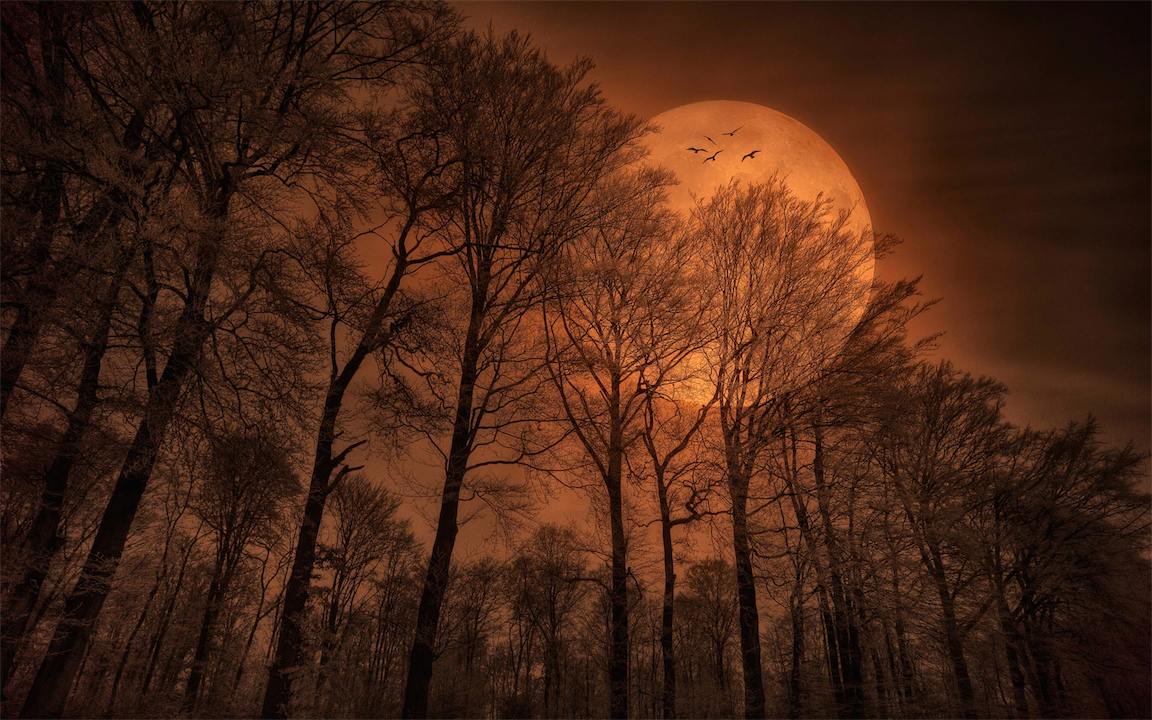 |
|
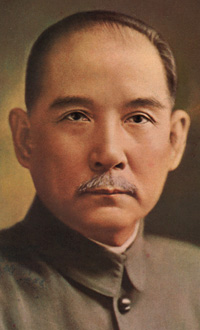 |
 |
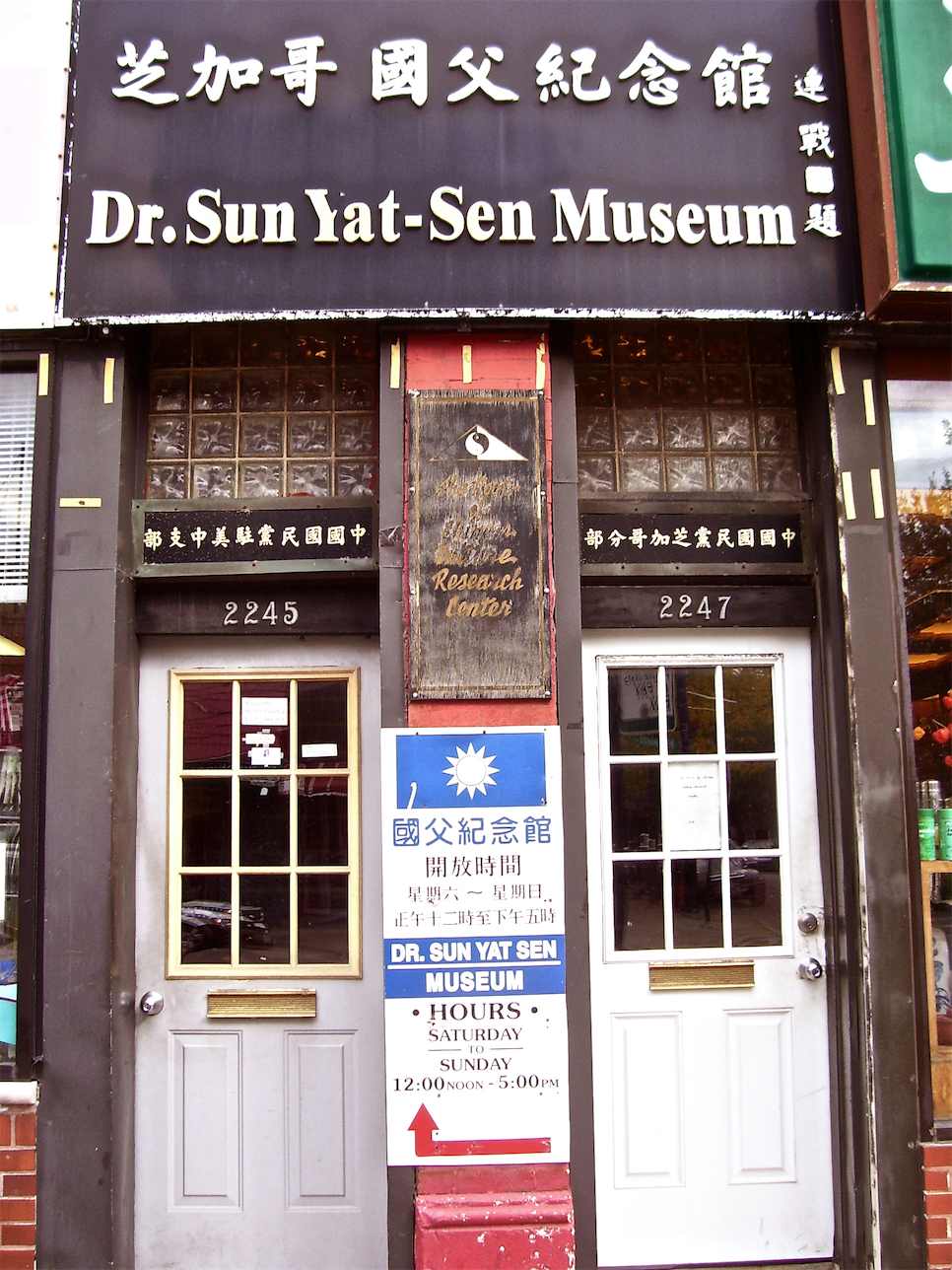 |
Dr. Sun Yat-Sen Museum of Chicago
2245 S. Wentworth Ave. 3rd fl.
Chicago IL 60616
(312) 842-5462
Open Saturday & Sunday
12pm to 5pm or by Appointment
Saturday - October 19th, 2013
Green Dragon Society
Field Trip
The museum's founders mostly are retired men who
left China as boys during Mao Tse-tung's 1949 revolution, and they hope
to prove that the thoughts of a leader who died in 1925 have more
relevance to the future of their homeland than Mao's famous "little red
book" of political musings.
At the Sun Yat Sen museum, organizers are hoping for the day Sun's call
for democracy is realized in China. That is one reason they are creating
a legacy for young Chinese who are forgetting the country's language and
history.
We all have grandchildren, that is why it was important to set up the
museum - so the younger generation can learn.
Out a window, can be seen a building that was the location where Dr. Sun Yat Sen spoke when he first came to Chicago in 1910. |
|
Dr. Sun Yat Sen - An Outstanding
Chinese Patriot and a National Hero
As a great patriot, Dr. Sun Yat Sen devoted himself to
striving for China's independence, unity and prosperity. He was a great
leader in 20th century China who was, and will always be, respected and
admired by Chinese people at home and abroad.
Throughput his life, Dr. Sun Yat Sen was a great revolutionary and
soldier. His strong determination and perseverance inspired the Chinese
people. With a great cosmopolitan spirit and open-mindedness, he was a
strong proponent of opening up the country and he dedicated his life to
a national rejuvenation of China. |
| China at the turn of the previous century had been partitioned by
foreign powers, including the Japanese, Britain and the United States.
Dr. Sun Yat Sen was born on November 12, 1866, into a peasant
household in Choyhung, Kwangtung, near the Portuguese colony of Macao.
It was
during the Ching Dynasty, when China was suffering from feudal despotism
and foreign aggression. When he was a young man he started to think
seriously about how to pursue national independence, liberty and
prosperity, which then motivated him to follow a revolutionary career.
He spent his late teens and early twenties studying in Hong Kong. He
began his medical training in Canton, China, but in 1887 returned to
Hong Kong and enrolled in the school of medicine. After graduation in
June 1892, he went to Macao, where Portuguese authorities refused to
give him a license to practice medicine.
In the last years of the Ching Dynasty, he founded the Tongmanhui
(Chinese Revolutionary League), and put forward his political theory of
the "Three Principles of the People"- namely Nationalism, Democracy and
the People's Livelihood.
He spearheaded the Revolution of 1911 which successfully overthrew the
last Emperor of the Ching Dynasty and established the Republic of
China, the first democratic republic in Asia. In the early years of
the Republic of China, however, the revolution was severely set back,
since the autocratic Warlords were in great power.
|
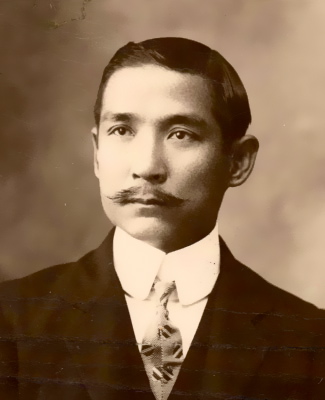 |
| With remarkable courage and vision he restructured the Kuomintang (KMT)
to push forward the democratic revolution. He spared no effort in the great cause until his death from liver
cancer on March 12th, 1925, in Peking (modern Beijing), China. |
|
Dr. Sun Yat Sen, the Chinese
Revolution, and the Oriental Secret Societies |
|
The father of modern China was Dr. Sun Yat Sen. His
leadership united many forces in China under the movement that drove the
Manchus off the throne, toppling the Ching Dynasty, and establishing a
Chinese Republic.
For this purpose his most powerful, influential, and long established
allies were the Secret Societies, which had existed throughout China for
countless centuries. The secret societies were already underground and
thereby equipped to strike quickly and effectively from out of nowhere. The
secret societies members were amongst
the people and were highly respected by the common man. Therefore they had influence
to stir revolution and then later supply well organized, highly trained
fighting units.
Dr. Sun Yat Sen throughout his life was a member of at least ten Chinese
secret societies. Dr. Sun's personal life was conducted using many
methods prevalent in the secret societies. Further, Sun Yat Sen was the
principle founder of several secret societies which rose to great power. |
|
Established and Ancient Secret
Societies |
|
Ch'ing Lung Pang (Green Dragon Society) |
|
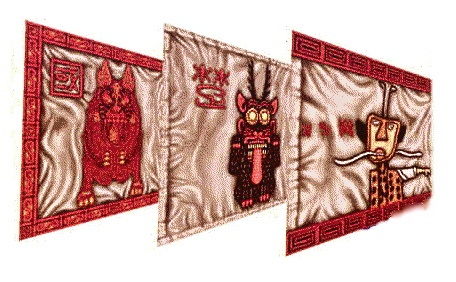 |
An ancient Chinese secret society. The origins are lost in the
cloudy mists of legend. It has taken many forms and names over the centuries
and has spawned innumerable branches throughout the world.
It is by no means an exaggeration to state that Dr. Sun Yat Sen and
Chiang Kai-shek gained and held their power in the Yangtze Valley
through the influence of the Green Dragon Society and the Red Dragon
Society. Dr. Sun maintained membership in both secret societies and
Chiang Kai-shek was a great military general within the Ch'ing Lung
Pang.
The Ch'ing Lung Pang is today the largest and most powerful Chinese
secret society on Earth. Reuters Asian office has estimated its
membership at two to four million worldwide. The Taiwanese Green Dragon
Society claims two hundred thousand members, and the Kowloon 14K in Hong
Kong claims similar numbers.
|
|
Following World War Two, the Communists in China became the focused target of
the Western powers and the Chinese Nationalist forces. Therefore, Chiang Kai-shek's
Nationalist government campaigned to increase secret society
membership. In southern China, this campaign was under Nationalist army
lieutenant general, Kot Siu Wong, who had his headquarters at number 14,
Po Wah Road, Canton. This is where the name of the "14K"
secret society originated. This secret societies inception was as an
anti-Communist entity. But it is a peculiar quality of the secret
societies to constantly transform themselves in regard to dynamic
external circumstances. By 1949, when Mao Tse Tung's communists emerged as the
victors in the Chinese Civil War, Green Dragon Nationalists emigrated to
Hong Kong, Macao, Thailand, San Francisco, Vancouver, and Perth
Australia. The remnants of Chiang Kai Shek's KMT (Kuomintang) South
China Army was forced into the Burmese highlands. The Communists
suppressed the secret societies on the mainland executing and
imprisoning many. Chaing Kai-shek, the Kuomintang, and the core of the
Nationalist Chinese Army, along with the elite of the Green Dragon
Society invaded the island of Formosa, creating modern Taiwan, a jewel
of the China Seas and bastion of democracy. |
|
Hung Lung Pang (Red Dragon Society) |
An ancient Chinese secret society dating back to at least the time of the
legendary Shaolin Temple. It is a close relative of the almost mythical
White Lotus Society.
Traditionally, the Hung Lung Pang has been the adversary of the
Ch'ing
Lung Pang. But during times of great social unrest the two put aside
their differences to join forces against a common threat, at least until
the crisis is resolved. Such was the case during the Chinese
Revolution and ultimate overthrow of the foreign Ching Dynasty in 1911.
In addition to the two largest societies; the Green Dragon Society
and the Red Dragon Society: there are also a White Dragon
Society, a Blue Dragon Society, and
the Black Dragon Society. All the five dragon societies have some
religious aspect associated. All have military arts heavily integrated. All harbor
occult knowledge from forgotten ancient times. |
|
T'ai P'ing T'ien Kuo (Great Peace Heavenly Kingdom) |
| Best remembered for its part in the T'ai Ping Rebellion (1851-1864).
The T'ai P'ings were organized as a secret order, and much of their
success was due to the solidarity of the inner circle. When they were
finally defeated, their members scattered and formed separate secret
societies under various names. In Hunan they organized the Ko Lau Hui,
in Shantung the Ta Tao Hui, and in the southern provinces the San Tien
Hui. Those members that emigrated to foreign lands organized the famous
Tse Kong Tong throughout the world. |
|
Ko Lao Hui (Elder Brother Society) |
| Ko Lau Hui was originally organized by scattered members of the
T'ai
P'ings, but did not become prominent until it became involved in the
Yangtze Riots of 1891. A story of double-cross and treachery at the
highest levels of the Manchu government and the Ko Lau Hui, with even
foreign officials acting in the plot. The outside agent involvement
provoked strong anti-foreign sentiment in the Yangtze River Valley. Many
Europeans were killed and property destroyed. The Ching government
attempted to suppress the Ko Lau Hui, but that only increased the
societies anti-foreign attitude and resolve to crush the Manchus. That
same year, 1891, many members of the Ko Lau Hui joined Dr. Sun Yat Sen's
Hsing Chung Hui in Hong Kong. But the Ko Lau Hui also kept its separate
identity and functioned autonomously. |
|
San Tien Hui (Three Point Society) |
| The San Tien Hui, then situated in control of the southern provinces
in China, is a continuation of the Pai Lien Hui, or the ancient
White
Lotus Society. Its avowed purpose was to "Overthrow the Ching and
Restore the Ming Dynasty". It is the fountain source of numerous secret
societies. Under the names of Triad Society and Great League it has
extended its activities beyond the borders of China, with hundreds of
branches organized amongst overseas Chinese people. Dr. Sun joined it,
and found its members shared a hatred for the Ching Dynasty with him,
and in its organization he found an efficient, powerful instrument. |
|
Fu Jen Wen She (Help Benevolence Literary Society) |
| An obscure organization, even by secret society standards; it was
intellectual in nature. It's members were extremely loyal and devoted.
As a youth, Sun Yat Sen's charismatic personality influenced a change in
the character of this Society. It became the nucleus for the Hsing Chung
Hui, a revolutionary secret society, devoted to the overthrow of the
Ching Dynasty. |
|
Secret Societies Founded Primarily
by Dr. Sun Yat Sen |
|
Hsing Chung Hui (Restore China Society) |
| Sun Yat Sen was only twenty-seven years old when the Hsing Chung Hui
was organized in 1891. With the Fu Jen Wen She as a base, Dr. Sun gathered
to his flag members of several secret societies from Fukien, Kuchow,
and Canton provinces. In control, at the top, was Dr. Sun and Mr. Yang
Ch'uyun, who was later put to death in 1900 by the Manchu government.
The Manchu government dealt mercilessly with anyone caught making
propaganda for revolution. The Hsing Chung Hui, exposed to Manchu
prosecution, was then closed, and its' members merely dissolved away and
joined other secret societies. Dr. Sun had also made connections
with other, powerful, ancient secret societies through which he executed
his designs against the Ching Dynasty. |
|
T'ung Meng Hui (Harmonious Alliance Society) |
| The history making Tung Meng Hui was the immediate successor of the
Hsing Chung Hui. Dr. Sun, often a wanted man in mainland China, traveled
to foreign lands of necessity (America, Europe, South Sea Islands). It
was in Tokyo, Japan, in the mid 1890's when Dr. Sun coalesced together
the T'ung Meng Hui in the Fu Shih Lou (Fujiro). Reacting to the Reform
movement of K'ang Yu-wei, Chinese students had swarmed to Japan for an
education. These young men of ideals were captivated by Dr. Sun's
doctrines. Some would go on to become men of renown. Many of their
meetings were held in Dr. Sun's home in Yokohama. The Chinese Revolution
would have been unthinkable in China at that time had the T'ung
Meng Hui
not prepared the way. |
|
Hsing Han Hui (Restore the Han Society) |
| In the year 1900 Dr. Sun organized the Hsing Han Hui (Han is a name
for the 'Chinese people', as opposed to Manchus, Mongols and other
races). Its name expressing its purpose, the Hsing Han Hui was strictly
secret. Nothing else is known of this society, except that its
membership was absorbed from the Ko Lao Hui, and from the San Ho Hui
(Three-fold Union Society, a Triad). It was this ephemeral organization
which prepared the way for the Komingtang, which in turn prepared the
way for the Kuomintang (KMT) |
|
Hua Hsing Hui (China Rejuvenation Society) |
| Huang Hsing, Dr. Sun's partner in leadership of the T'ung Meng Hui,
organized the Hua Hsing Hui. In 1904 he traveled through Kuangtung and
Kuangsi, speaking with leaders of various secret societies, especially
the grandmasters of both the Black Dragon Society and the White Dragon
Society, linking all in fellowship with the Hua Hsing Hui. But the
beheading of the man left in charge, Ma Fu-i, during an uprising,
spelled the death knell closing of the short lived Hua Hsing Hui. |
|
Komintang (Revolutionary Society) |
| The Hsing Han Hui was, for Dr. Sun, a stepping stone to the
Komintang, another secret society he founded. The revolutionary designs
of the Komintang were brought before the public openly, though its
leaders remained hidden from the Ching Dynasty, as the entire
organization was in defiance of Chinese imperial edict and there were
many beheadings. So it was the Komintang remained a secret society to
the last. |
|
Chung Hua Kuomintang (Chinese Nationalist Party) |
|
 |
Kuomintang (KMT) is not a secret society, but is the
organization that is the culmination and continuation of all the
ideology and activity promulgated by Dr. Sun Yat Sen during his
lifetime. The secret societies overthrew the Ching Dynasty in 1911,
which allowed Dr. Sun to reorganize the T'ung Meng Hui into a political
organization in 1913, the Kuomintang. The Kuomintang stood on the
shoulders of the secret societies of the past. It also finds it
expedient to lean on the strength of the secret societies in the
present.
The Kuomintang still exists today, in 2013. It was the controlling party
in Taiwan for over a half century and wields great power in the region.
There is even an Illinois chapter. Wherever in the world Chinese
congregate and live together there can usually be found chapters of the
KuomintangAn ancient Chinese parallelism is exemplified by comparison of
the Kuomintang and the T'ai P'ings of the 19th century whose open and
public activities were associated with an inner, secret organization. |
| Even today, long after the Chinese communist bloodbaths against secret
society membership (which was a crime punishable by death or hard imprisonment), there
are still many secret societies on the
Chinese mainland because not everyone was able to escape to Hong Kong or Macau
and migrate across the world. Some secret society members by
necessity had to remain in the homeland and proceed more carefully with
their activities. |
|
Sun Yat Sen - Wife Song Qingling . . circa 1915 |
Sun Yat Sen - Handwritten Letter . . circa 1910 |
|
Sun Yat Sen Park
251 West 24th Place - Chinatown Chicago |
|
Dr. Sun Yat-Sen Portrait Bust and
Fountain
Unknown Artist
Named for Sun Yat-Sen (Sun Zhongshan), the first president of
China, the park features a bust of him on top of a stone pillar incised
with a quotation from Confucius in Chinese. The back of the pillar
bears an English translation by G. H. Wang, one of Chinatown's leaders
in the 1940s through 1980s |
|
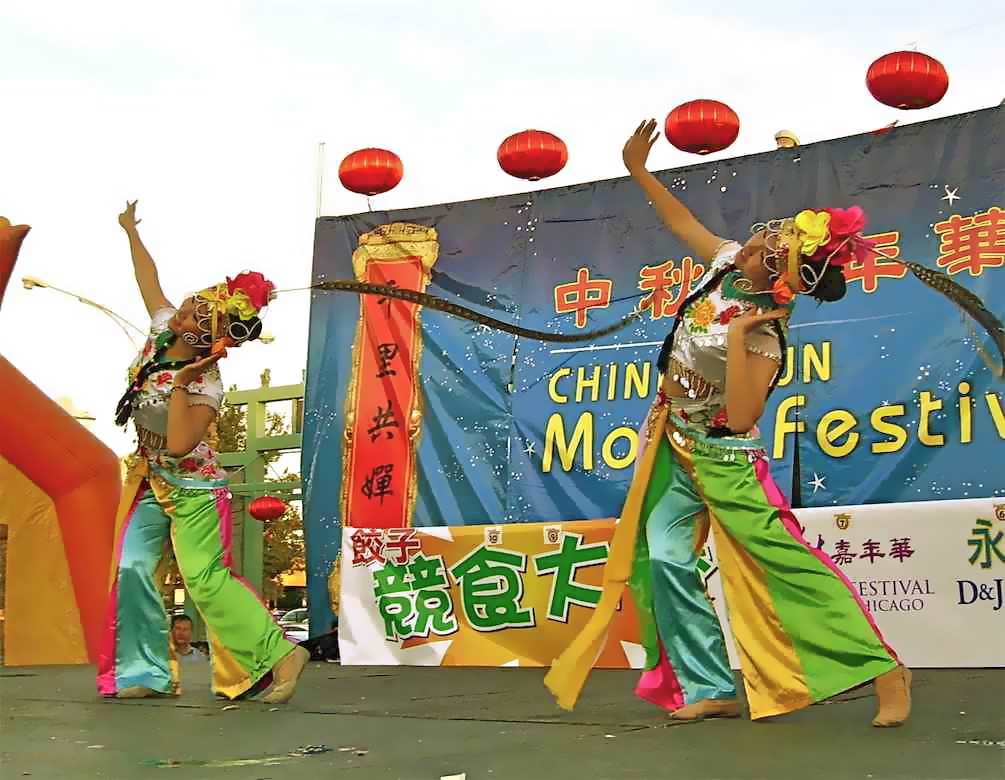 |
 |
|
Xilin Association, headquartered in the Chicago
suburb of Naperville since 1991, has recently launched the Performing
Arts Academy in Chicago's Chinatown, on June 29th, 2013.
Xilin offers education programs, film programs, arts classes from drawing
and music (piano, violin, guitar, zither, erhu, flute, Chinese lute &
vocals), to traditional Chinese folk dancing, and other social services
to the local community. Xilin is a place where people can come and learn
about the Chinese culture and for the young to learn artistic skills.
Xilin has a video studio and produces segments for China TV.
Xilin’s senior services include therapeutic activities, meals and social
activities. Their community health programs provide mammogram,
osteoporosis and hepatitis B screenings for people over 40 who have no
insurance coverage.
Among the VIPs and community leaders who praised Xilin’s services in the
Asian community and American society, at the opening ceremony, were
Illinois Secretary of State Jessie White, Chinese Deputy General Consul
in Chicago Wang Yong, and a representative sent by U.S. Senator Mark
Kirk.
It is not just for Chinese, but also for people from other ethnic
backgrounds. |
|
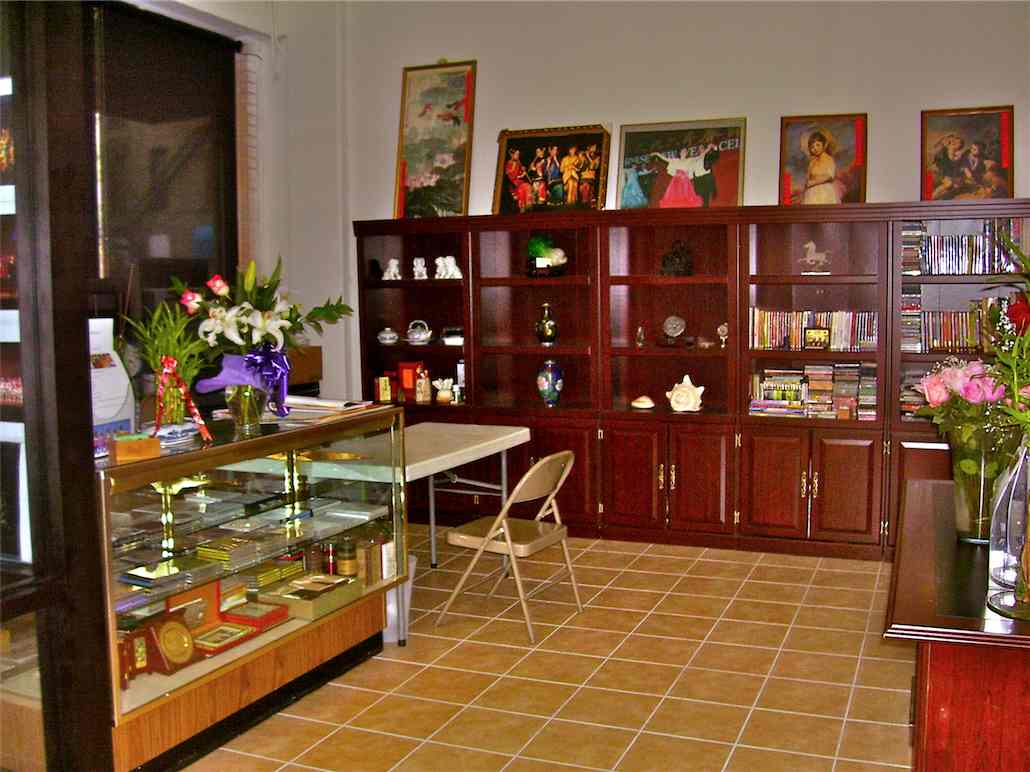 |
|
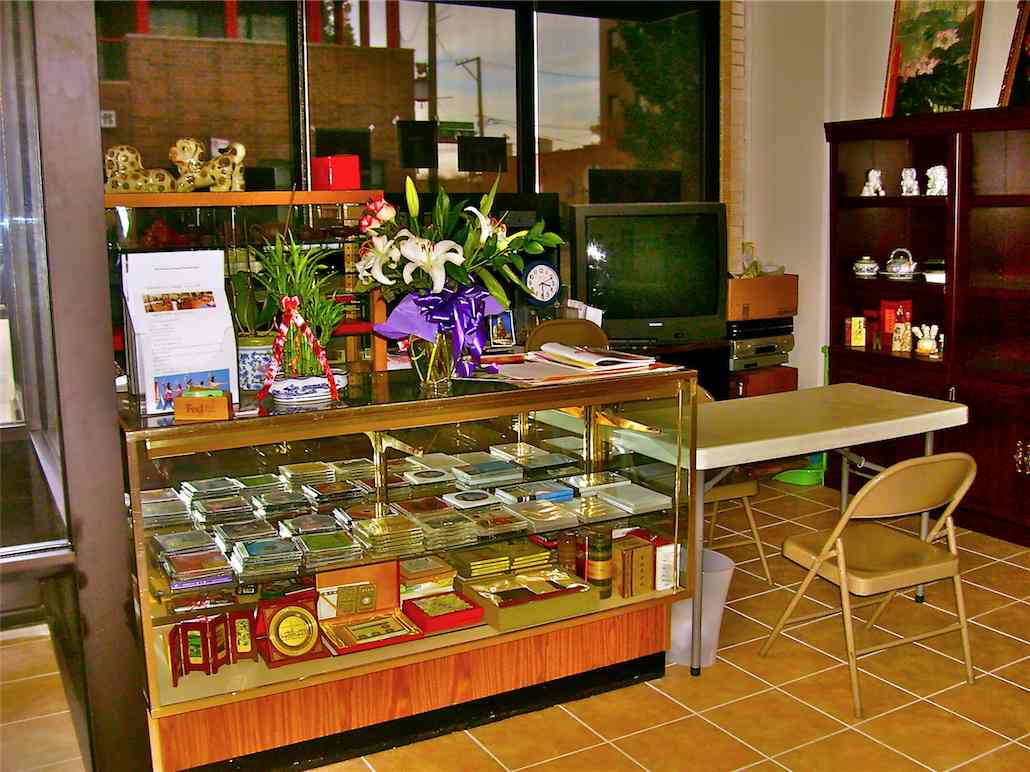 |
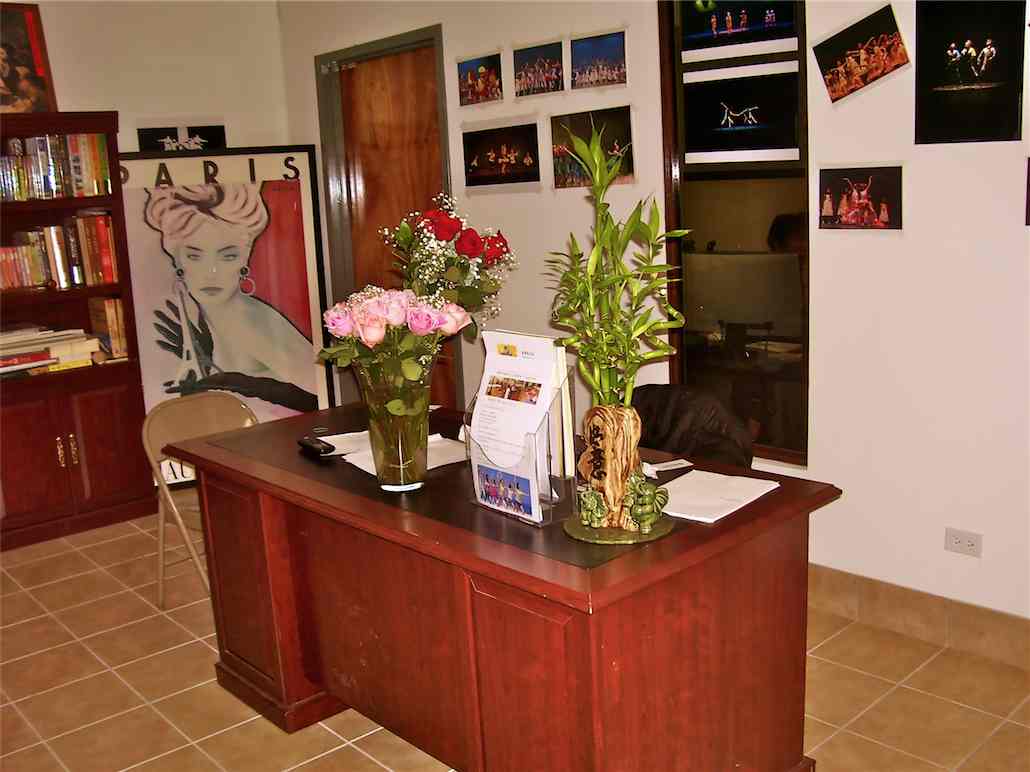 |
|
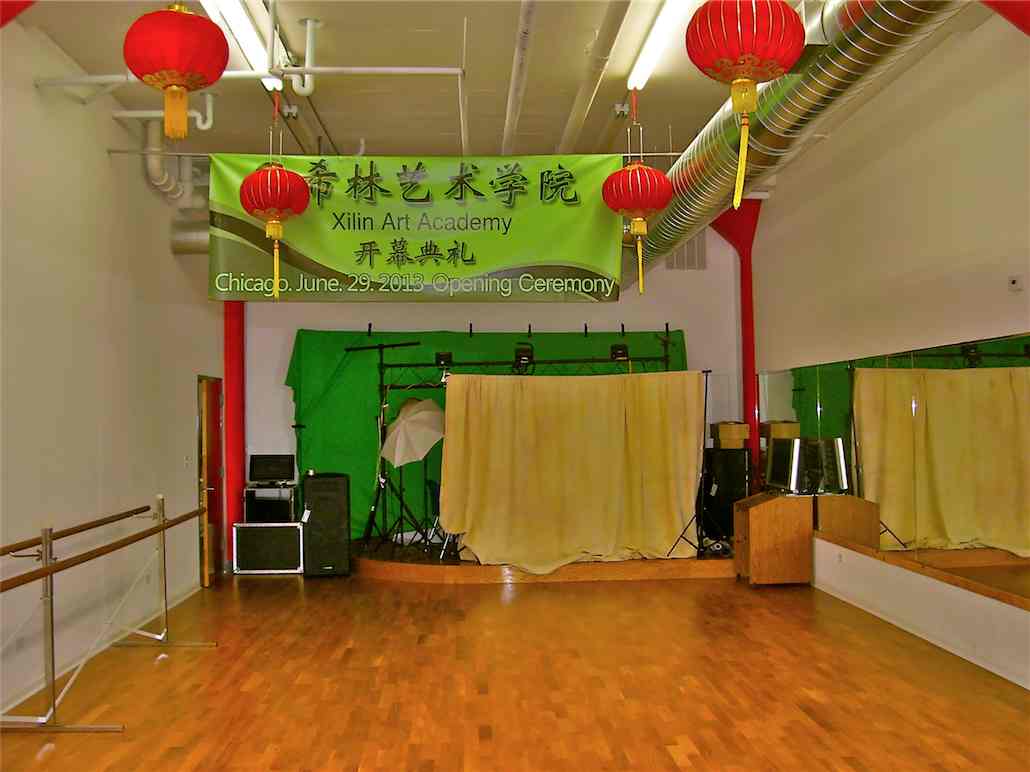 |
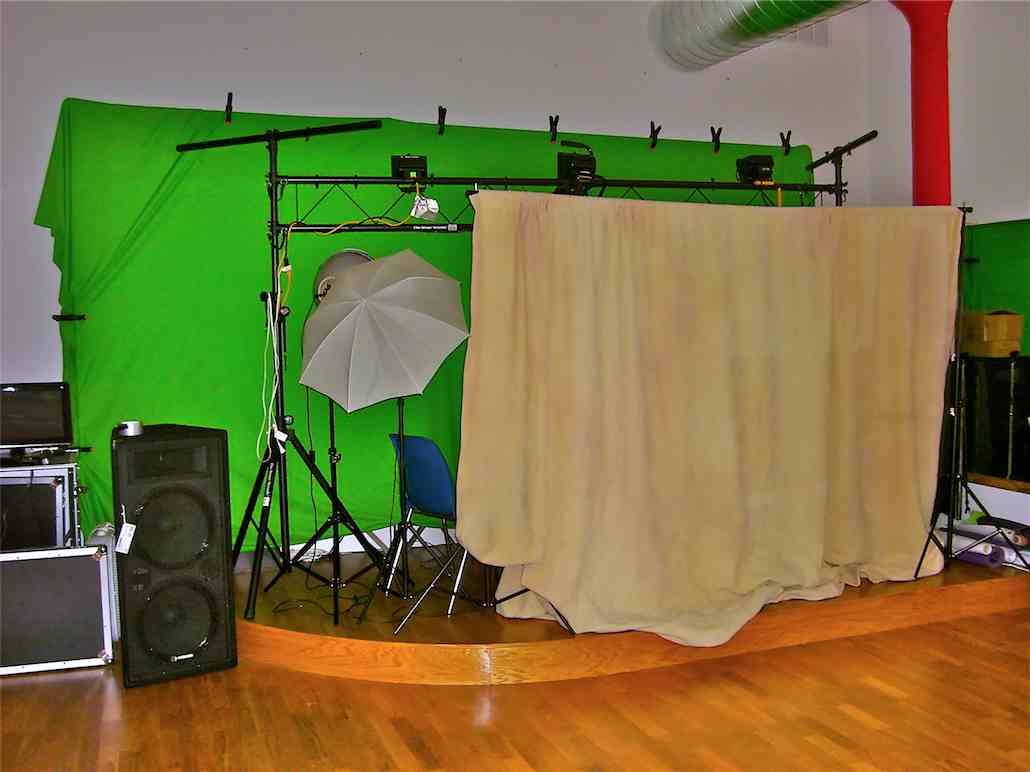 |
|
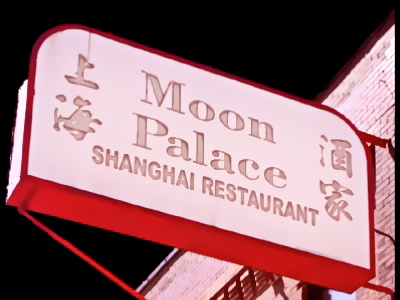 |
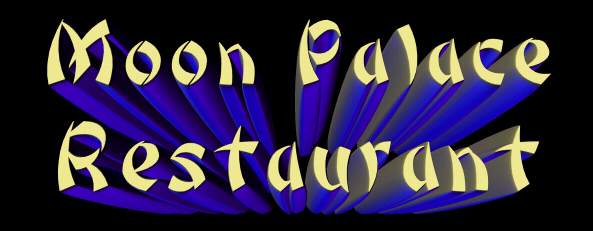 |
|
Winter Solstice - Year End Dinner |
|
Moon Palace Restaurant
216 W. Cermak Rd.
Chicago, IL 60616
312 225-4081
Sunday through Thursday: 11am - 10pm
Friday and Saturday: 11am - 11pm
Moon Palace is open 365 days a year!
Saturday - December 21st, 2013
Winter Solstice
Green Dragon Society
Winter Solstice Dinner
Moon Palace offers a unique experience of Chicago’s
Chinatown. A jewel resting at the entrance of Chicago’s Chinatown, Moon
Palace offers quality food, a comfortable and relaxed ambiance, and a
full bar menu |
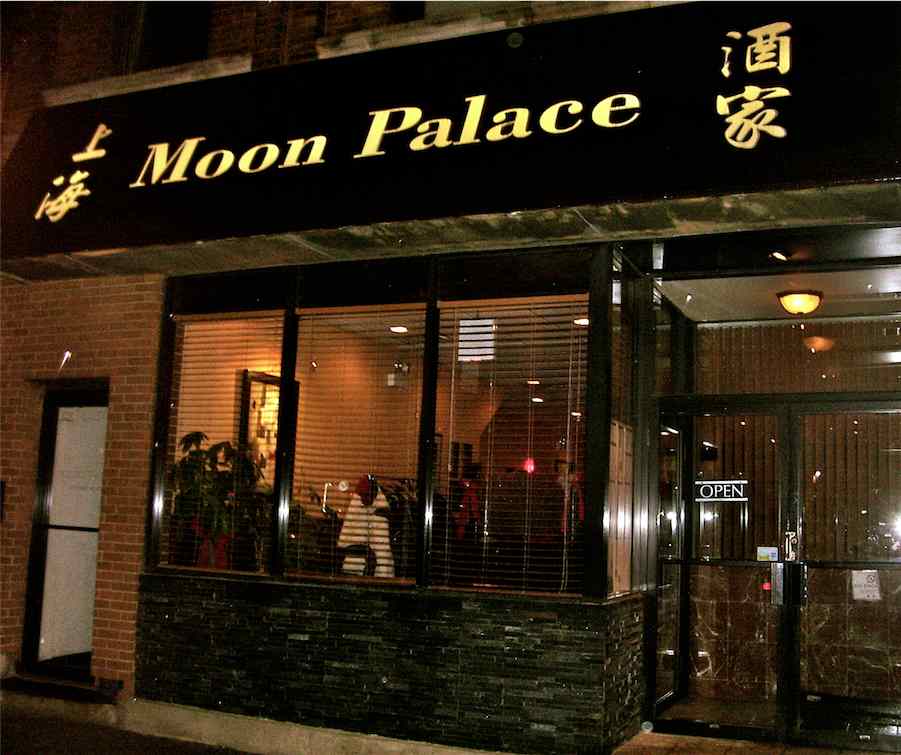 |
|
Shanghai, being a relatively new city in China,
does not really have a cuisine of its own, but successfully refines all
the styles of the surrounding provinces. Through years of culinary
practice and the assimilation of the art in other styles of cuisine,
Shanghai chefs have also created a style of cuisine peculiar to the
region. Shanghai dishes are usually characterized by the use of heavy
and highly flavored sauce.
The use of sugar is another uniqueness found in Shanghai cuisine
and, especially when used proportionally with soy sauce, the taste
created is not so much sweet but rather savory. A Household in Shanghai
would consume as much soy source as sugar.
Shanghai Cuisine (Hu Cai), includes two styles - Benbang and
Haipai Cuisine. Benbang Cuisine, appeared in Shanghai over 100 years
ago. Using all fresh ingredients, Benbang food tastes fresh, mellow and
sweet. Haipai Cuisine, literally meaning 'all-embracing cuisine' is
derived from the cosmopolitan culture formed in Shanghai at the end of
the Ching Dynasty (1644-1911). It absorbs the advantages of many foods
from other regions of China and even some western food. Fresh fish,
shrimps and crabs are the main ingredients. |
|